
Zen Travellers
Two round the world travellers and our guide for adding a little zen to your adventures. Travel advice, stories, and inspiration!


The Best Travel Lens for Sony A6000 Series
One of the questions I often see online is “ What is the best travel lens is for the Sony A6000?” This includes the rest of the Sony Alpha series as well. (A6000, A6300, A6400. A6500, etc.) I figured I’d take a stab at answering that question! I’ve divided the post into prime lenses and the best all in one lenses for the A6000 (or others) as that’s often the first choice you have to make.
Whether your travel photography is predominantly in cities or in the wilderness there’s an option for you. This post outlines some of the best prime lenses and some of the best all in one lens options for the SonyA6000 series.
Table of Contents
- 1 How to Choose a Travel Lens
- 2.1 Sony Zeiss 16-70 Vario Tessar F4 OSS
- 2.2 Sony 16-50 Kit Lens
- 2.3 Sony 18-105mm f/4 G OSS Lens
- 2.4 Sony 18-135 f3.5-f5.6 OSS
- 2.5 Sony 18-200 f3.5-f6.3
- 3.1 Rokinon/Samyang 12mm f2.0
- 3.2 Sigma 16mm F1.4 DN Contemporary
- 3.3 Sigma 30mm f1.4, Sigma 30mm f2.8, or Sony 35mm f1.8
How to Choose a Travel Lens
As I’ve talked about in other posts, and in outlining my own gear choices, travel photography is a bit of a balancing act and really comes down to your personal preferences. You don’t want to bring so many lenses with you that you’re spending more time swapping lenses than enjoying the moment. On the other hand, you also need good, sharp lenses that can capture the memories of your adventures. Nothing is worse than getting home and looking through your pictures only to realize that they’re soft or out of focus, knowing that it would cost thousands of dollars and time you probably don’t have to go back.

The lenses you choose to take with you on your travels are a personal choice based on your own travel style and your photography preferences just as the way that everybody packs for a trip is different. I recommend that before buying anything the first question you seriously consider is if you think you’ll prefer prime lenses for their sharpness and low light abilities or an all in one lens for its versatility. If you’re not sure, it may be a good idea to rent or borrow a lens first and see how it handles at home before buying it and taking it abroad.
Another question to consider is where you will be using it and what you like to take photos of. Do you like large, dramatic landscapes? Colourful city action? Maybe you like to capture the local culture. Whatever the choice it will inform your lens preferences.

I should be clear that I haven’t tried all of these lenses (I’m not rich!), but I’ve scoured the web for recommendations for the best travel lenses for Sony Alpha cameras and put it all together, so let’s get into it!
All in One / Zoom Lenses
If you’re not convinced that you want to carry around and swap a group of prime lenses then an all in one lens is probably for you. If you think you’d like to take videos on your travels and suspect you’ll want to have different focal lengths available during those videos, same thing.
All of these lenses won’t be as sharp as an equivalent prime, and they won’t be as effective in low light, but this goes back to picking the lenses that fit your travel and photography style. Not everyone wants to be constantly swapping lenses. In general, people are too obsessed with theoretical sharpness anyways.

If you just want to take some good quality photos of yourself and your family and you don’t have aspirations to shoot for National Geographic, you will probably be more than happy with an all in one lens for your travel photography with any Sony 6xxx camera. While I went the prime lens route I think that most people fall in the zoom group or should at least start here.
Sony Zeiss 16-70 Vario Tessar F4 OSS
Quick to focus, sharp, a zoom with a variety of useful focal lengths, and all in a small package. What’s not to like? Here’s a well-done review where it’s run through the full gamut of tests.

A popular native lens offering from Sony, this is a versatile ultra wide angle lens option. It would be perfect for photos when you are travelling in cities, and for sweeping landscapes.
It has autofocus and Sony’s Optical SteadyShot Stabilization allowing you to use slower shutter speeds at night. At F4.0 it is maybe a bit slower than some would like but still perfectly capable. This is certainly a wide angle lens worth considering for your travel needs.

Sony 16-50 Kit Lens
Many disparage the sharpness of the kit lens that comes with the Sony A6000, to the point where some say you should throw it out immediately but it actually can take some pretty good photos, especially if you’re not a pixel-peeper.
The lens is small and compact, to the point where you can practically fit your camera in your pocket when it’s attached. The focal range is perfect for a wide variety of travel photography so it certainly warrants consideration. They say that the best camera is the one that you have with you and that applies to lenses as well.
Sony 18-105mm f/4 G OSS Lens
Lens names sure are a mouthful, aren’t they? This is one of the most popular all around lenses for the A6000 and it would be great for travel photography. It’s bigger and heavier than the kit lens, but it’s much sharper and faster. Those that have this lens say that they almost never take it off their camera. Indeed, you could likely travel with this as your only lens.

Sony 18-135 f3.5-f5.6 OSS
So many lenses with similar focal lengths! What’s the difference with this one? This is one of the latest additions to the Sony lens lineup and while at first glance, it seems very similar to the 18-105, it’s in a much more compact body. If you like the idea of an all-around lens but don’t want something that’s too big and bulky this would be a good upgrade from the kit lens.

Can’t decide between these two? Here’s a great comparison video of the Sony 18-135 and Sony 18-105.
Sony 18-200 f3.5-f6.3
If you’re looking for even greater variety in the focal lengths of your one lens solution this is an option to consider. To fit everything from 18mm to 200mm in one lens definitely comes with some compromises so it’s not going to be as sharp as the other lenses on this list. But what it lacks in sharpness it makes up in versatility and convenience.

Prime Lenses
If your travel photography preference is to have the sharpest, best lenses possible then you’ll probably be looking to pick up a series of Prime lenses. To be clear, there is still a compromise here as it can be a pain switching between prime lenses. Switching often exposes your camera’s sensor to potential dust, meaning you may need to clean it more often, or you may even decide that you need to invest in a second camera body.
If you decide that your preference is prime lenses you’ll have to learn to zoom with your feet! Prime lenses only have one focal length and because of that fact, manufacturers can optimize everything in the glass’ design to make the lens as sharp as possible. Prime lenses typically are able to provide lower f-stops for low light performance and that creamy bokeh look.
Rokinon/Samyang 12mm f2.0
This is one of my personal favourites and it’s a very popular lens for the Sony Alpha system. In fact, when I asked favourite travel lenses on a Sony A6000 Facebook Group it was the clear winner. It’s affordable and sharp beyond its price tag, great for landscapes.

It does not have Autofocus and is completely manual focus, but that’s not a huge drawback for travel photography with this lens as pretty much everything is in focus when it’s set to infinity. In fact, I pretty much just leave it at infinity and don’t have to worry about focusing. This lens is pretty much always on one of my cameras when my travels take me into the wilderness as it’s fantastic for capturing sweeping landscapes.
With a maximum aperture of f2.0, it’s perfect if your travels take you to the backcountry and you aim to try some Astrophotography. But don’t take my word for it, read the review at Lonely Speck where they are much bigger Astrophotography experts than I am!

Sigma 16mm F1.4 DN Contemporary
This lens wasn’t really on my radar until I posted in the Sony Alpha Facebook Group asking for opinions on the best travel lenses and it came up a couple of times as a recommendation. A little bit less wide than the Rokinon, it has autofocus and is also tack sharp. Again, it’s well suited for taking photos within cities, of vast landscapes, and even astrophotography.

Sigma 30mm f1.4 , Sigma 30mm f2.8 , or Sony 35mm f1.8
When looking for an everyday travel lens one of these three lenses will inevitably come up in your search. All three are similar enough that I’m grouping them together.

Of course, this is by no means an exhaustive list. I personally think these are the lenses that warrant the strongest consideration but there are so many other options. With mirrorless cameras like the Sony Alpha series you even have the option to adapt legacy glass so there’s no shortage of lens options. Whatever you use, if you’re happy with the results, more power to you!
So there you have it, my recommendations on the best travel lenses for the Sony A6000 and the rest of the Sony Alpha series. Do you have a favourite that I didn’t mention? Let me know in the comments and I’ll check it out!
One Reply to “The Best Travel Lens for Sony A6000 Series”
You’re missing the most important point. When traveling you want to be light and compact. You havent mentioned a single pancake lens or small lens in general. Sony has the SONY SEL20F28 20mm 2.8 which is of great value. Instead you mention the kit lens. Thanks for the article. Theres room for improvement here.
Leave a Reply Cancel reply
This site uses Akismet to reduce spam. Learn how your comment data is processed .

Best Travel Lens for Sony A6000 & A6400 (Landscape, Portrait & Zoom)
Last Updated on December 5, 2023
by Michael Rozenblit
Disclaimer: This article contains affiliate links. That means if you click a link and make a purchase, we may make a small commission. As an Amazon Associate we earn from qualifying purchases. For more information, see our privacy policy.
If you’re an amateur photographer going travelling, the Sony A6000 or Sony A6400 is a fantastic mirrorless camera choice. However, as the standard kit lens has several limitations, it leaves many people searching for the best travel lenses for Sony A6000 cameras.
Choosing between all the available lenses can be a daunting task, particularly if you haven’t got a lot of experience taking photos. After all, there are zoom lenses, prime lenses, landscape lenses, portrait lenses and many others that can be suitable depending on the type of photography you think you’d want to take on your trip.
This guide will break down what we think the best lenses are based on different shooting situations, as well as some options for secondary lenses to take with you if you want to focus on a particular style of travel photography.
These lenses are designed not only for Sony A6000 but also for similar models such as the popular Sony A6400 and the older A6300 & A6500 cameras.
They are all E-Mount and use an APS-C sensor (unlike the Sony A7III cameras ) so are fully compatible with this camera series and don’t require any adapters.
Table of Contents
Sony A6000 Travel Lenses Comparison
What to look for in travel lenses.
When deciding on which travel lenses to choose, it’s important to think about the type of photos you want to take.
After all, if you’re travelling somewhere like rural Scotland or Iceland you’ll want to be taking epic wide-angle shots. However, if you’re on a safari in Africa, it’s going to be more important to have a great telephoto lens that can take wildlife shots.
The standard kit 16-50mm lens that comes with the Sony A6000 has a reasonable range and you can take some wide-angle shots and general street photography. However, the quality of this lens isn’t the best so if it’s certainly worth considering upgrading before leaving for your trip.
If you are unsure about what type of travel photography you want to take on your trip or simply like to have a wide range of different shots, then I would suggest choosing an all-in-one lens.
Alternatively, if you want to focus on a specific type of photography, then I would consider one of the more specialised lenses listed below.

Best Travel Lenses for Sony A6000 Cameras
These are my choices for the best travel lenses, each with its own advantages depending on the type of photography you want to take.
Sony 18-135mm F3.5-5.6 – Best Overall All-in-One Lens
If you’re looking for an all-round upgrade to your standard kit lens then you can’t go wrong with choosing the Sony 18-135mm F3.5-5.6 (also available from B&H Photo here or from Adorama here ).
This travel lens offers travellers the ability to take a wide spectrum of shots from wide-range landscapes at 18mm to portrait and telephoto shots at the upper end of the range.
This lens is lightweight at 325g/11.5oz given its shooting range and has Optical SteadyShot (OSS) in-built to help avoid any blur in your travel photography.
Ultimately, this lens is ideal for people who are unsure about the type of photography they want to take on their travels and don’t want to be constantly switching between lenses.
The Sony 18-135mm F3.5-5.6 will work in the majority of shooting scenarios and you can easily get away with this being the only lens that you take on your travels, particularly if you’re not planning on doing much low-light or night photography.

Sony 16-55mm F2.8 G – Best Premium All-in-One Lens
If you’ve been happy with the shooting range that the standard kit lens provides and you simply want a significant improvement in photo quality then you should certainly consider purchasing the Sony 16-55mm F2.8 G (also available from B&H Photo here or from Adorama here ).
One of the best premium travel lenses available on the market, this lens offers supreme photo quality which allows photographers to take a range of shots from landscapes to portraits.
The lens is lightweight at 494g/17.5oz and gives users more customisation options on the lens including options for specific settings as well as the ability to easily switch between auto and manual focus.
The Sony 16-55mm F2.8 G is not ideal for wildlife or super-zoomed in photography, but you’ll be able to use this lens in the majority of day-to-day situations so there won’t be a need for changing lenses.
Furthermore, apart from the improved photo quality, this lens with its constant f2.8 aperture will perform better in low light compared to the standard kit lens.

Sony 18-105mm F4 G – Alternative All-in-One Lens
The Sony 18-105mm F4 G (also available from B&H Photo here or from Adorama here ) is an alternative lens to those listed above and is ideal if you’re looking for a lens that can shoot both great stills and videos but prefer the constant aperture.
It has a similar weight to the 18-135mm and 16-55m lenses, coming in at 427g/15.1oz and also has apower zoom feature which is fantastic for taking videos.
The Sony 18-105mm F4 G lens is certainly one to consider if you plan to take a lot of videos during your travels and are looking for a mid-range option.

Sony 10-18mm F4 – Best Zoom Landscape Lens
If one of the main reasons you love travelling is to take epic wide-angle landscape shots then you can’t overlook the Sony 10-18mm F4 (also available from B&H Photo here or from Adorama here ) as one of the best landscape lenses for Sony A6000.
This lens is ideal for capturing breathtaking scenery and landscapes, offering a minimum focal range of 10mm which most other lenses compatible with the Sony A6000 are not able to do. This lens is also lightweight at 225g/8oz and has Sony’s Optical SteadyShot technology built in.
The Sony 10-18mm F4 can potentially be used to complement the standard kit lens, as you’ll be able to get better quality wide-range shots with this lens, while still having a larger focal length to shoot with day-to-day for standard street shots.
Given its weight and range, this lens is ideal for travellers looking to improve their landscape photography while still keeping their luggage light.

Sigma 16mm F1.4 – Best Prime Landscape Lens
If you prefer a high-quality prime lens for your wide-angle shots, then the Sigma 16mm F1.4 (also available from B&H Photo here or from Adorama here ) is a great option.
While this Sigma lens doesn’t have the Optical SteadyShot feature that most other lenses on this list have, it takes great quality photos and is ideal if you’re looking for either a bit of extra range from the 18-135mm or if you want the flexibility to take landscape shots at low-light.
The Sigma 16mm F1.4 is a bit large for a prime lens and not as compact as some of the Sony primes but as there isn’t a great wide-angle prime lens from Sony, this is the best option if your want to take a second lense on your travels that focuses on low-light landscape shots.

Sony 50mm F1.8 – Best Portrait Lens
If you’re looking for a pure portrait lens for your Sony A6000 then you can’t go wrong with choosing the Sony 50mm F1.8 (also available from B&H Photo here or from Adorama here ) .
This prime lens allows you to take a range of portrait shots in different circumstances. Its f1.8 aperture means you can take shots in low light, particularly as its Optical Steadyshot functionality helps with ensuring your images are blur-free.
This lens has a focal length ideal of portrait photography and your shots can get that beautiful shallow depth of field and bokeh that you want when taking portraits.
The lens is also lightweight enough at 202g/7.2oz that you can take it with you as a second or third lens without adding a lot of weight to your backpack .
Overall, the Sony 50mm F1.8 makes a strong case for being one of the best portrait lenses for Sony A6000 cameras if you want to purchase a lens solely dedicated to taking portrait shots.

Sony 35mm F1.8 – Best Complimentary Prime Lens
The Sony 35mm F1.8 (also available from B&H Photo here or from Adorama here ) is a great choice for people who are happy to take a second lens to complement their all-in-one lens.
This lens allows you to take beautiful night photography, making it ideal for travellers who might be heading into the great outdoors or shooting the Northern Lights. It’s not a lens I would recommend as an all-in-one option but is ideal as a second or third travel lens to pack in your bag.
Weighing 154g/5.5oz, it is not as compact as other prime lens options but its ability to take low-light photography means you are gaining the opportunity to take photos that most other lenses will struggle with.
With the the Sony 35mm F1.8 you’ll also be able to get some great portrait shots with a shallow depth of field given its f1.8 aperture.

Sony 70-350mm F4.5-6.3 G – Best Premium Zoom Lens
While most of the other travel lenses mentioned so far are ideal if most of your photography is street or landscape photography, none of them is ideal if you want to super-zoom capability for an upcoming safari trip.
This is where the Sony 70-350mm F4.5-6.3 G (also available from B&H Photo here or from Adorama here ) comes in.
This lens is a premium zoom lens that works best if used as a complementing lens to the 16–55mm F2.8 G or any other all-in-one travel lens. I would only consider purchasing this lens if you have a specific purpose for its telephoto capabilities, such as wildlife photography.
It weighs 625g/22.1oz which is reasonably light given the range that this lens offers and also has Optical SteadyShot built-in.
It has various other perks built-in such as a shake compensation switch and the ability to easily switch between auto and manual focus which can be quite handy if shooting wildlife.
All in all, if you’re looking for a travel lens because you want to shoot wildlife from a distance, then the Sony 70-350mm F4.5-6.3 G is the best choice for a great telephoto lens.

Sony 55-210mm F4.5-6.3 – Best Budget Zoom Lens
If you are looking for an affordable zoom lens for your Sony A6000 to complement the standard 16-50mm kit lens or the 16–55mm F2.8 then the Sony 55-210mm F4.5-6.3 (also available from B&H Photo here or from Adorama here ) is an ideal choice.
This budget lens actually comes included sometimes in purchases of the Sony A6000, however, if this wasn’t the case for your camera, purchasing this lens allows you to easily extend your zoom range.
While the image quality won’t be as good as some of the other premium zoom lenses on this list, the lens still is lightweight enough at 345g/12.2oz that it’s not a burden to pack even for the minimalist traveller.
This lens doesn’t have many of the additional features on the lens such as the auto and manual focus switch that you see on other lenses in this article, which isn’t really a surprise given it’s on the budget end of zoom lenses for the Sony A6000 cameras.
If you’re not looking to spend a lot and simply want an affordable way to increase your range then the Sony 55-210mm F4.5-6.3 is certainly a good option to consider.

It’s no surprise that there are several great travel lenses for the Sony A6000 series available on the market, regardless of what type of photos you plan on taking on your upcoming trip!
Are you searching for a travel lens for your upcoming trip? Have any questions? Let us know in the comments below!
Related Posts:

Bluffworks Review: Stylish Clothes for Travel

12 Essential Car Rental in Europe Tips

The Best Packing Cubes For Backpacking

About Michael Rozenblit
Michael is a co-founder and writer for The World Was Here First. Both solo and with his partner, Maggie, he has travelled to over 50 countries across the globe and has a particular affinity for the Balkans and Eastern Europe. He’s lived in numerous countries worldwide but currently resides in his hometown of Melbourne, Australia. Read more about Michael
Leave a Comment Cancel reply
The best lenses for Sony A6000 cameras in 2024: Sony APS-C primes and zooms
The best lenses for Sony A6000 cameras deliver amazing optical performance and good value for money
The Quick List
- Best everyday lens
- Budget everyday lens
- Best wide-angle zoom
- Best ultra-wide prime
- Best super-telephoto
- Budget super-telephoto
- Best for the streets
- Best for macro
- Best for portraits
- How to choose
- How we test

The Quick List ↩ 1. Best everyday lens 2. Budget everyday lens 3. Best wide-angle zoom 4. Best ultra-wide prime 5. Best super-telephoto 6. Budget super-telephoto 7. Best for the streets 8. Best for macro 9. Best for portraits How to choose How we test
The best lenses for Sony A6000 cameras will help you to expand the possibilities of your camera. When you buy a new Sony A6000-series camera like the Sony A6600 , it will likely come bundled with a kit lens. This is OK for when you start taking photos, but soon you might want a wider zoom range, a faster aperture, better image quality, or all three!
The best lenses for Sony A6000-series cameras come in different sizes, including standard zoom lenses, wide angles, telephotos, and prime lenses. You'll find a range in this guide, and we've tested and reviewed almost every lens so that you can be sure our recommendations are accurate. Find out more about how we test at the bottom of the guide.
The lenses is this guide are appropriate for the entire Sony A6000 series of cameras, from the A6000 up to the A6700.
Read more: Sony A6000 vs A6100 vs A6300 vs A6400 vs A6500 vs A6600 vs A6700: how to choose
Rod is an independent photography journalist and editor, and a long-standing Digital Camera World contributor, having previously worked as DCW's Group Reviews Editor. He has used practically every interchangeable-lens camera launched in the past 20 years, from entry-level DSLRs to medium-format cameras, so he has the expertise to select the best Sony lenses for you.

When you want to move beyond your kit lens, the 16-55mm G offers shooting convenience with sublime image quality. Read more below…
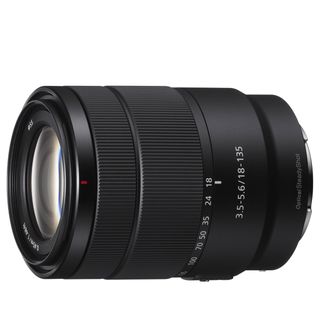
If your budget doesn’t stretch to the 16-55mm G, this comes in cheaper while providing a far greater focal length range. Read more below…
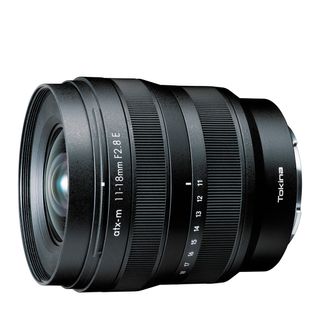
With a combination of a wide aperture, near-silent autofocus and excellent image quality, this is a great-value zoom. Read more below…
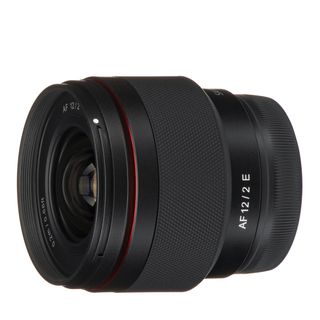
This is a terrific option for outdoor shoots, with weather-sealing for protection and a wide aperture to cope with low light. Read more below…
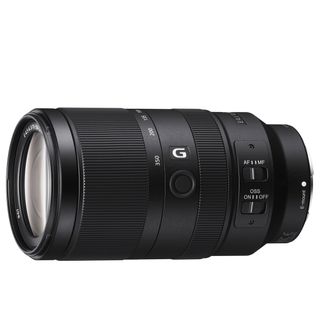
Here’s a quality optic for when you have to keep up with fast-moving but distant subjects like sports and wildlife. Read more below…

This telephoto doesn’t have the reach of the 70-350mm, but it costs much less, and is surprisingly light and compact. Read more below…
View the full list ⤵
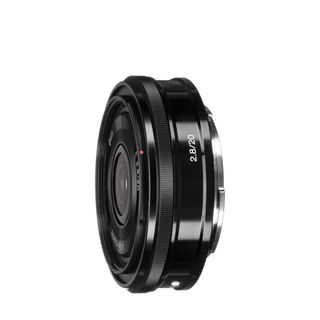
Add this prime to an A6000-series camera, and you’ve got a combo you can keep in a pocket, with great image quality. Read more below…
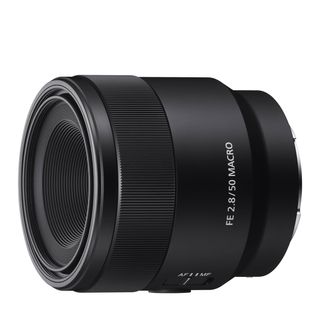
This prime lens provides lifesize magnification at an affordable price, but don’t expect too much from its non-macro shots. Read more below…
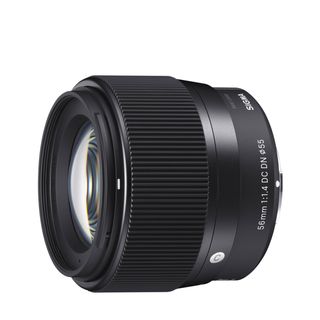
That wide aperture means you can achieve some dream-like bokeh blur, and autofocus and image quality are top-notch too. Read more below…
The best lenses for Sony A6000, A6100, A6300, A6400, A6500, A6600 and A6700 in 2024
Why you can trust Digital Camera World Our expert reviewers spend hours testing and comparing products and services so you can choose the best for you. Find out how we test.
Best everyday lens for A6000 cameras

1. Sony E 16-55mm f/2.8 G
Our expert review:
Specifications
Reasons to buy, reasons to avoid.
If you like the focal range of your kit lens but want to make a leap to something offering better image quality, this is it right here. The Sony E 16-55mm f2.8 G lens is a sublime optic, with a constant f/2.8 aperture that gives you amazing shooting flexibility in all different lighting conditions. Images are sharp as a tack across the board; there's a little barrel distortion at the very widest end, but it's easy to correct with software.
The lack of optical image stabilization might be a shame for some, but equally, that would only serve to bump up the price of the lens, and we think the cost is well-judged where it is. For day-to-day shooting on a Sony A6000 camera, this is fantastic – and if it's too expensive, check out our next entry...
Read more: Sony E 16-55mm f/2.8 G review
- Back to the top ⤴
Best budget everyday lens for A6000 cameras

2. Sony E 18-135mm f/3.5-5.6 OSS
Sony's pro-level 16-55mm f/2.8 is a great lens, but it only has a 3x zoom range and it's pretty heavy. For half the cost you can get the Sony E 18-135mm f/3.5-5.6 OSS.
It's cheaper than the 16-55mm G, it's got image stabilization built in and its zoom range is way longer with an equivalent span of 27-202mm. The lens is also compact and portable and still performs well at its telephoto end.
It has a narrower, variable aperture from f/3.5-5.6 but you'll only notice that in dimmer lighting. Like a lot of lenses, this one relies on digital as well as optical corrections, so you may need to check your raw processing software is applying a correction profile. This is a great lens that we use all the time.
Read more: Sony E 18-135mm f/3.5-5.6 OSS review
Best wide-angle zoom lens for A6000 cameras

3. Tokina atx-m 11-18mm f/2.8 E
Tokina 's ATX-M 11-18mm f/2.8 E goes straight in at number one for wide-angle lenses. What it lacks in features such as optical image stabilization, it makes up for with its fast aperture, quality build, and high performance.
For such an ultra wide-angle lens, there is very little distortion and what there is can easily be corrected. Color fringing is negligible, and sharpness levels are excellent across the entire image frame.
It's only slightly heavier and a little more expensive than the Sony E 10-18mm f/4 OSS, so if the aperture is more important than stabilization it could be worth the extra cash. With its virtually silent autofocus, refined finish and impressive image quality, it really is excellent value.
Read more: Tokina atx-m 11-18mm f/2.8 E review
Best ultra-wide prime lens for A6000 cameras

4. Samyang AF 12mm f/2.0 E
The Samyang AF 12mm f/2.0 E somehow packs into an impressively lightweight 224g body. At a price significantly lower than a lot of Sony's native offerings, this is a tempting lens for any A6000 photographer who wants to expand their repertoire a little. Its wide perspective (18mm equivalent) is hugely versatile and can be very effective once you get used to using it.
The fast f/2 aperture rating also makes the lens useable for astrophotography. Handling of the lens is good, with a pleasingly robust build quality that's also weather sealed.
There is some lateral chromatic aberration in the corners of frames, and a little barrel distortion, but all of this is easy enough to correct. This is an impressive lens for the price and the size and makes for a solid addition to any A6000 stable.
Read more: Samyang AF 12mm f/2.0 E review
Best super-telephoto lens for A6000 cameras

5. Sony E 70-350mm f/4.5-6.3 G OSS
Considering how new this lens is and its impressively broad telephoto zoom range, the price it's set at is incredibly reasonable. The Sony E 70-350mm f/4.5-6.3 G OSS is well-suited to a huge range of fast-paced photographic genres like wildlife and sports, making it a perfect partner for the speedy A6000 cameras.
Its optical design includes an aspherical element and three extra-low dispersion elements, all of which contribute to superb image quality right through the zoom range. Controls are customizable too, and Optical SteadyShot expands usability in low light. This is a fantastic lens for a good price.
Read more: Sony E 70-350mm f/4.5-6.3 G OSS review
Best budget super-telephoto lens for A6000 cameras
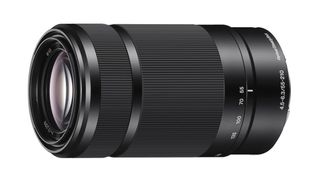
6. Sony E 55-210mm f/4.5-6.3 OSS
If the Sony 70-350mm lens above is a little outside your price range, this 55-210mm f/4.5-6.3 OSS lens should do perfectly. Its maximum zoom range is a little shorter, but thanks to the 1.5x crop factor of the A6000 and other Sony APS-C format E-mount camera bodies, the lens gives an ‘effective’ zoom range of 82.5-315mm in full-frame terms, so it still gives a pretty powerful telephoto reach at the long end.
This lens is light and compact for a telephoto, mostly thanks to the fairly narrow aperture rating, which shrinks from f/4.5 to f/6.3 as you extend through the zoom range. Physically, it enables a much better balance on an A6000 camera, though sharpness drops off a bit at longer zoom settings and could be better at the widest available apertures.
Best street photography lens for A6000 cameras

7. Sony E 20mm f/2.8 Pancake
So called 'pancake' lenses are really popular for street and travel photography because they extend only a small distance from the camera body and can stow away in small bags or even jacket pockets. A mere slip of a thing, this pancake lens measures just 63x20mm and weighs a mere 69g.
The effective focal length of 35mm is ideal, and the outfit is small enough for you to shoot candidly without drawing attention to yourself. Like almost all prime lenses it lacks Optical SteadyShot but the f/2.8 aperture rating is faster than that of most zoom lenses.
The only catch is that, when shooting wide-open, sharpness is merely good rather than great and vignetting (darkened image corners) is quite noticeable. At apertures of between f/4 and f/8, though, the image quality really comes alive.
Best macro lens for A6000 cameras
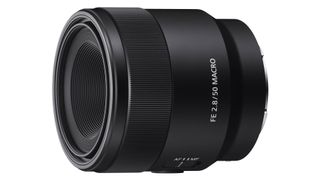
8. Sony FE 50mm f/2.8 Macro
This is both a nifty fifty and an affordable macro lens with 1:1 magnification. It’s not a Zeiss or a G Master, so it’s designed as an affordable workaday lens for amateurs and enthusiasts. That’s not to say it’s a poor performer – far from it – but with no aperture ring and a modest f/2.8 maximum aperture, we would characterize this more as a macro lens than a 50mm (even though that is the focal length).
If what you want is a fast 50mm prime for regular use, you would probably cross this off the list – but a great choice if you want to photograph insects, flowers or anything else where you want to get in really close for big magnification. Be warned that this lens is showing its age in terms of its autofocus performance!
Read more: Sony FE 50mm f/2.8 Macro review
Best portrait photography lens for A6000 cameras

9. Sigma 56mm f/1.4 DC DN Contemporary
Portraiture and still-life can be a struggle with a crop-sensor camera, especially if you want nice creamy bokeh, giving a sumptuous smoothness to defocused areas. With an effective focal length of 85mm on a Sony A6000-series body, this becomes a classic lens for portrait photography, at a competitive price.
The f/1.4 aperture rating of the Sigma 56mm f/1.4 DC DN | C lens gives you full control over depth of field, allowing you to create beautifully blurred backgrounds, to isolate your subject. In our tests, we remarked that it’s well-built but small and light, and feels right at home on a compact mirrorless body. Even so, it goes large on performance, with rapid autofocus and superb image quality.
Read more: Sigma 56mm f/1.4 DC DN Contemporary review
How to choose the best lens for Sony A6000 cameras
All A6000-series cameras use the Sony E lens mount. Sony’s own E-mount lenses have either FE or E in their model names: all work on A6000 cameras. Very broadly speaking, an FE lens will be heavier and more expensive than an equivalent E lens, but deliver better image quality. E lenses (again very broadly) will tend to be smaller and lighter.
For shooting at shorter focal lengths and wider angles of view – specifically kit lenses or ultra-wide zooms – you are probably better off with an E lens. The APS-C crop factor of A6000 cameras means that FE lenses offer a reduced angle of view, curtailing their wide-angle capability with the smaller sensor.
If you are buying a third-party E-mount lens, check whether the lens is designed for use with APS-C Sony cameras like the A6000 series, or with full-frame Sonys.
Check out our guide to the best Sony lenses if you want to know more
How we test lenses
The lens experts in our testing lab run a range of tests under controlled conditions, using the Imatest Master testing suite. Photos of test charts are taken across the range of apertures and zooms (where available), then analyzed for sharpness, distortion and chromatic aberrations.
We use Imatest SFR (spatial frequency response) charts and analysis software to plot lens resolution at the centre of the image frame, corners and mid-point distances, across the range of aperture settings and, with zoom lenses, at four different focal lengths.
There's more to it than just the technical side, though! Beyond the lab, our reviewers test lenses in real-world environments – and sometimes on professional shoots! We work with lenses both indoors and outdoors, in studio conditions and in natural light, with as many different subjects as is possible (or appropriate – there's no point testing a landscape lens' ability to shoot a portrait!).
We take into account everything from handling and ease of use to speed of autofocus and the overall quality of the images produced.
Find out more about how we test and review on Digital Camera World
Get the Digital Camera World Newsletter
The best camera deals, reviews, product advice, and unmissable photography news, direct to your inbox!
Matthew Richards is a photographer and journalist who has spent years using and reviewing all manner of photo gear. He is Digital Camera World's principal lens reviewer – and has tested more primes and zooms than most people have had hot dinners!
His expertise with equipment doesn’t end there, though. He is also an encyclopedia when it comes to all manner of cameras, camera holsters and bags, flashguns, tripods and heads, printers, papers and inks, and just about anything imaging-related.
In an earlier life he was a broadcast engineer at the BBC, as well as a former editor of PC Guide.
- Sebastian Oakley Ecommerce Editor
Related articles
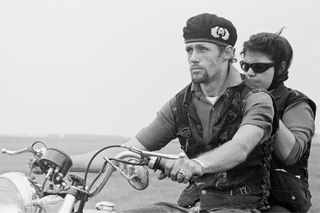

12 of the Best Travel Lenses For Sony a6000
This ultimate guide tells you absolutely everything you need to know about buying the best travel lenses for Sony a6000. Read on to find out which piece of glass is right for your next adventure.
Are you looking for the best travel lenses for Sony a6000 (…or another one of the Sony APS-C series)? Look no further- this guide is about to cover 12 of the best lenses you can get as far as lightweight travel photography is concerned!
The Sony a6000 was released in 2014, but there’s a reason why this bad boy is still a winning favorite amongst both casual travelers and travel bloggers alike. The camera itself is lightweight, compact, and produces high-quality images at a very affordable price.
But as great as the Sony a6000 may be, no camera is anything without its glass! When I was first delving into the world of photography, I was beyond overwhelmed by all of the Sony a6000 travel lens options for my first camera.
To zoom or not to zoom? To go with official Sony products or try some off-brand lenses?

And now I want to help YOU not make the same mistakes- or get caught up in the same stress- that I did.
From shooting 14,000 feet above sea level in India’s remote Spiti Valley to getting some street-action on 100 F days in Lahore , I’ve used a number of these lenses to capture all types of moments in all kinds of climates.
So without further ado, let me walk you through the 12 best travel lenses for Sony a6000- for every kind of adventurer.
Note: While this article is specifically focusing on the a6000, all of these recommendations apply for the entire A series… which includes the a6300, a6400, a6500, and the new a6600!
12 of the Best Travel Lenses For The Sony a6000
Psst! This post contains affiliate links which help me keep this blog running. As an Amazon Associate I earn from qualifying purchases. You can read my full disclosure here .
- Sony 18-135 mm F3.5-5.6 OSS
- Sony 16-50 mm F3.5-5.6
- Sony 18-105 mm F4 G OSS
- Sony 16-55 mm F2.8 G
- Sony 10-18 mm F4 OSS
- Sony 18-200 mm F3.5-6.3 OSS
- Sony 55-210 mm F4.5-6.3
- Sigma 30 mm F1.4
- Samyang 12 mm F2.0
- Sony 50 mm F1.8
- Sigma 16 mm F1.4
- Sony 35 mm F1.8
But first… what to consider when buying a travel lens for Sony a6000?

Price of a Sony a6000 Travel Lens
As aforementioned, breaking the bank should never be your goal, BUT you should invest in a lens that you see yourself using for a while.
Once you make that purchase, you’ll (unfortunately) never be able to resell it for the exact price you paid. So committing to an expensive lens as a newbie might not be the best bet.
On the other hand, you do tend to get what you pay for when it comes to glass- but as you’ll come to see, that doesn’t mean that there aren’t some great value deals!
As a rule of thumb, you should consider the best quality lens that you can afford, while still considering what it is that you hope to accomplish with your shots.
Weight of a Sony a6000 Travel Lens

For me personally, this was one of the biggest struggles I encountered on my first long-term backpacking trip to Pakistan. I was carrying my camera and THREE lenses, one of which I barely even used.
I soon learned that I preferred a zoom lens to a prime, and certainly should not have set out on such a long trip with so much weight dragging me down.
If you’re a long-term traveler like I am, I definitely recommend keeping your lens collection to two, unless you’re absolutely certain that you’ll need any others!
Versatility of a Sony a6000 Travel Lens
Unless you’re only looking for one type of shot, you’re going to want a lens for your a6000 that’s versatile.
By design, zoom lenses tend to be more versatile than primes, but it’s absolutely true that a sharp prime can and will produce higher-quality images than most zooms.
Nevertheless, you most definitely want to have a lens (or multiple lenses) that can be used in a variety of settings and scenarios.
Low-Light Capabilities of a Sony a6000 Travel Lens

Don’t overlook this– lenses that aren’t great in low-light can be a real bummer. Though I absolutely loved it during the day, the Sony 18-135mm F 3.5-5.6 simply failed me at night.
Even with ISO bumped all the way up and my aperture at 3.5, I was unable to capture clear images of a village wedding I attended.
If you think you’ll use your camera indoors or after dusk, you’ll undoubtedly want to choose a lens with a low aperture.
Your Travel Style
Are you heading out for a week of RV-ing across the US, or are you more of a Eurotripper who plans to spend a ton of time in museums?
What you hope to shoot is perhaps the most important thing to consider when choosing from the best travel lenses for the Sony a6000.
The best lens (and camera) is the one you have with you, but ensuring that that one will help you achieve your photography goals is KEY.
Best Travel Zoom Lenses for Sony a6000
Though zoom lenses tend to be less sharp than primes, the versatility and range they produce are well worth the trade-off.
These lenses can be used for a wide variety of shots, and also keep you from having to change lenses often, which protects your sensor from dirt, dust and other unfortunate events.
1. Sony 18-135 mm F/3.5-5.6

- Incredible range
- 11.5 ounces
The 18-135 mm OSS is an excellent all-around zoom, and it virtually never came off my camera. It’s exceptional range allows you to capture everything from vast landscapes at 18mm to sneaky street shots from many feet away at 135mm.
Since the Sony a6000 doesn’t come with in-body optical stabilization, it’s another major plus that this lens provides it, which is a must for those of you looking to do any type of filming on your travels.
Despite having both wide-angle and slight telephoto capabilities, this lens is also extremely light, which I definitely appreciated.
While the aperture is certainly not the lowest, images remain sharp and you can even get a bit of bokeh action, too!

- Doesn’t perform well in low-light as the aperture does not go below 3.5
- Aperture is not constant
- Not as sharp as some of the primes on this list, but that’s to be expected with most zooms!
- A bit pricey if bought alone, but now comes as a kit-lens with the a6400
What type of a6000 travel photography is it best for?
This lens is ideal for so many different types of scenes. I used it everywhere from markets to beaches to portraits! As such, it’s perfect for any type of trip… except astrophotography, that is.
If you plan/hope to capture the stars, you can use the 18-135mm as your main squeeze, but you’ll need a backup more suited for Astro to get the shots you desire!
Check Price on Amazon
2. Sony 16-50 mm F3.5-5.6
- Very affordable
This kit-lens might not be the *absolute* best travel lens for Sony a6000, but there’s a reason it’s included in this review. This lightweight and relatively cheap lens is ideal for beginner photographers, as its focal range is excellent for wide-angle landscape shots, street scenes, and portraits, too.
Though its aperture might not be the widest, it will certainly do in most settings. This lens typically comes with the Sony a6000, but if you purchased another model or are buying your body separately, this lightweight zoom should definitely be considered.
With a quiet zoom AND optical steady shot, this lens is great for all kinds of photography, and would also make a great vlogging lens if video is more your thing!
- Not great for astrophotography or low-light environments
- You might notice some softness and/or distortion
- Some blur may occur when zoomed all the way in
This lens is ideal for landscape shots, portraits, and street scenes. Due to its relatively limited focal length range, getting those far-away shots might be a bit difficult. Astrophotography would also be a challenge due to the fact that the aperture does not go below 3.5
3. Sony 18-105 mm F/4 G

- Constant F/4 Aperture
- Internal Zoom
With its constant aperture, internal zoom, and generous focal range, this lens might just be the best overall travel lens for Sony a6000.
Though it comes at a higher price tag than many of the other options on this list, the versatility and sharpness of this all-around-zoom are virtually unbeatable as far as APS-C lenses go.
The constant F4 ensures that you won’t lose sharpness whilst zooming in, so even at 105 mm you’ll be looking at significantly more crisp shots than what you can achieve with the 18-135 mm, which does not have that coveted constant aperture.
The OSS and internal zoom also make this lens a great choice for vloggers- if you had to choose just one travel lens for your Sony a6000, you simply can’t go wrong with this beast!
- Slightly heavier and larger than some of the other options
- A bit pricey
- Inflexible depth of field
- Not the absolute best in super low-light settings
This lens is a travel photography jack-of-all-trades. Street scenes, portraits, festivals, animals, landscapes and more can be captured easily thanks to its generous range.
Like the other lenses we’ve covered thus far though, this wouldn’t quite make the cut as far as astrophotography is concerned, but you can deff count on keeping it on your a6000 for virtually all other circumstances!
4. Sony 16-55 mm F/2.8 G

- Extremely sharp
- Weather-sealed
- Constant 2.8 aperture
- 17.4 ounces
If you’re looking for the absolute best quality travel lens for Sony a6000- this is for you. This premium lens takes the sharpest photos possible as far as crop-sensor lenses are concerned.
Though the range is quite limited compared to some of the other zooms I’ve discussed, don’t be fooled- this lens is quite the upgrade from the 16-50 mm 3.5-5.6.
But quality glass comes at a price, and this bad boy is no exception! Though I wouldn’t necessarily recommend this for newbie photographers, for those who want to exclusively concentrate on landscapes and portraits, you can’t go wrong here.
It’s also weather-sealed unlike many other Sony a6000 lenses and contains a nifty focus hold button as well as an AF/MF switch.
The constant, wide 2.8 aperture ensures that you’ll be able to capture those low-light moments that would otherwise be lost in the grain with almost any other zoom.
- Does NOT have OSS, though a good tripod could easily circumvent this issue
- Very expensive compared to virtually any other a6000 travel lens
- Pretty heavy compared to its counterparts
This lens is perfect for any type of landscape shot, astrophotography, portraits, and general low-light scenes too! Both city days and scenic hikes can be crisply captured with it, making it relatively versatile.
Nevertheless, if you’re someone (like me) who might want to take far away shots on your travels, you might get frustrated with this lens’ limited range.
5. Sony 10-18 mm F/4

- Constant F/4 aperture
- Excellent for video
- Can handle a gimbal well
- 7.94 ounces
Landscape photographers- this one’s for you! If you’re looking for the best wide-angle lens for Sony a6000, look no further because it doesn’t get better than this super-wide-angle Sony-brand lens.
The ultra-wide focal length range allows you to truly capture everything in a scene, which is ideal for virtually any type of landscape, architecture, or Astro shot. It’s not just the range though- the constant F/4 aperture keeps photos and videos sharp.
This lens comes with OSS- another plus for travel vloggers- and it’s lightweight. Though I wouldn’t recommend this as your only tool, it’s a must-have lens for those that are serious about getting those super vast scenes.
- Limited focal-distance range means most photographers couldn’t use this as their only lens
- Pretty expensive
- Slight distortion at 10mm
As previously mentioned, this lens was made for vast landscape shots. Though other Sony a6000 travel lenses can be used for a variety of shots, this one is definitely more niche. It’s a bit too wide for portraits, though street scenes could still be nicely captured with it.
This lens is also ideal for astrophotography- you’ll be able to shoot more of the sky than with any other lens on this list.
Read Next: 55 Epic Gifts for Outdoorsy Women
6. Sony 18-200 mm F/3.5-6.3

- Impressive focal range
- 16.1 ounces
The focal range on this telephoto zoom lens makes it one of the best all-in-one lenses for the Sony a6000. Though it’s quite similar to the 18-135 mm that I reviewed above, it gives photographers an additional 65mm of focal range- which can definitely be useful on the road.
From epic landscapes to sneak long-distance street shots, this lens can do just about everything… aside from astrophotography, that is.
While 18 mm would work well for the night sky, the variable aperture only goes down to 3.5, meaning this lens is not the best choice for low-light moments. Even so, it *could* be successfully paired with a wide-aperture prime.
- Heavier than most zooms
- Varying aperture range that isn’t the widest
- Could be sharper
- Relatively expensive compared with other options
As previously mentioned, this lens can (almost) do it all. It can be used for most types of travel and is a great solution for those looking to minimize their kit.
Landscapes, portraits, festivals, street scenes and day-time action shots can all be captured with this lens, making it ideal for any country or travel style.
7. Sony 55-210 mm F/4.5-6.3

- Extremely affordable
- 12.6 ounces
This budget-friendly zoom is one of the best telephoto travel lenses for the Sony a6000, especially for new travel photographers. The price is truly unbeatable compared with any other APS-C zoom on the market, and the focal range allows for a wide variety of shots.
The lens also comes with built-in OSS, and has a variable aperture. While its photos won’t be as crisp as constant aperture options like the 18-105mm G, the versatility coupled with affordability is quite the selling point if you ask me.
Though it’s a bit larger than some other zooms, it ain’t too heavy, which is something I always look for in a lens as a backpacker.
Nevertheless, this lens won’t quite make the cut as far as night photography or wide-angle scenes go. But that can easily be remedied by pairing it with a high-quality prime.
- Relatively narrow, variable aperture
- Photos are not the sharpest
- Cannot reasonably be used for landscape or astrophotography
Like other telephoto zooms, this lens can be used for a wide variety of travel photography. But unlike some of the other options on this list, this one can’t quite capture landscapes or wide-street scenes.
Portraits, foodie shots, animals, and sneaky street moments all *can* be nicely photographed with this piece of glass, making it ideal for any type of urban exploration.
Best Prime Lenses for Sony a6000
8. sigma 30mm f/1.4.

- Crisp bokeh
- Can be used in low light situations
- 9.28 ounces
This superb prime is one of the best travel lenses for Sony a6000- and perhaps the best overall prime on this list! Its focal length makes it a great overall walkaround lens, and its impressive maximum aperture means that you’ll actually be able to capture some late-night scenes.
I found this lens to be great for portraits and street photography and kept it on my camera often.
Though some grain is to be expected with APS-C cameras, I was pretty happy with the below shots I was able to get at a festival in Lahore, Pakistan that was cursed with horrific lighting.

The lens is a great value for its price point, and is versatile enough to be used in an assortment of travel scenarios. Overall, its fast aperture and little to no distortion make it a great Sony a6000 travel lens.
- Does not have internal OSS
- Slightly larger and heavier than the Sony 35mm competitor
- Focal length isn’t quite wide enough for landscapes
This lens is ideal for street photography as it really forces you to get up into the action. It’s also great for portraits and architectural shots.
Unlike virtually all of the zooms discussed above, this prime can also be used in low-light scenes thanks to its 1.4 aperture.
Despite its wide and fast aperture, it isn’t the best choice for astrophotography as it wouldn’t quite be able to capture as much of the sky as you’d need!
9. Samyang 12 mm F/2.0

- 98.9 degree view
- Fast aperture
- Compact and light
This is by and far the best astrophotography lens for Sony a6000- and perhaps the best ultra-wide-angle lens too! Though some might be put off by the fact that it’s a manual focus lens, rest assured that you will quickly and easily adapt.
With its fast f/2.0 aperture and extra-wide focal length, this Sony a6000 travel lens was practically made for the night sky. But- it can also be used for other types of travel shots too!
I particularly loved the colors this lens is capable of producing- I took the photo below using it and was floored by the quality and vibrancy.

The manual focus can be adjusted with a ring, which quickly becomes intuitive after a few uses.
While this lens is certainly not for every day or walkaround use, I couldn’t recommend it enough for those looking to capture the Milky Way as well as vast landscapes. And the best part is, for the quality, it’s extremely affordable too!
- Doesn’t have OSS
- Notable chromatic aberrations
- Robust vignetting when shooting wide open
- Not versatile at all- it definitely needs to be paired with a second lens
As previously mentioned, this lens is IT as far as astrophotography is concerned. It certainly isn’t something I’d take into a city center or use for portraits, but it holds up well for landscapes, too.
Read Next: The Best Hiking Backpacks Under $100
10. Sony 50 mm F/1.8 Pros
- Very versatile
This lens is widely known as the “nifty fifty” for a reason- it’s lightweight, sharp, and can be used in a variety of travel scenarios. This is definitely a lens you should have in your a6000 travel photography arsenal.
Its wide aperture means you’ll be able to get those low-light shots, and the 50 mm focal length is perfect for streets, portraits, museums, and architecture.
This perfect walkaround lens also offers little to no distortion- something you definitely want to read in any lens review!
- Not ideal for vast landscape shots or far away scenes
- AF is not the fastest
- Focal length is a bit tight compared to the 30 mm or 35mm
This lens is perfect for museums, food photography, street scenes and portraits. A city-heavy trip would likely see it on your a6000 daily.
On the flip side, this lens will NOT work for landscape or astrophotography, though it will work for low-light scenes.
11. Sigma 16 mm F/1.4

- Great for vlogging
- 14.24 ounces
Yup another Sigma lens- and this one might just be the best landscape travel lens for Sony a6000. The depth of field is amazing, it’s extremely sharp, and produces crisp and colorful images.
This lens is perfect for landscape shots and even better for travel vloggers given its fast autofocus and wide focal length.
Though it’s a bit pricey, this lens performs wonderfully in low-light and astrophotography situations, making it a great addition to any landscape photographer’s bag.
Though it might not be *that* versatile, you can easily photograph both cityscapes and mountains with this winning Sigma-brand lens.
- Expensive compared to the Sony 16mm
- Heavier and bulkier than most lenses on this list
- Not very versatile
This lens was made for landscapes, nighttime shots, and vlogging. You can also certainly capture some crisp skies with it too!
It can be used for portraits, though it’s not exactly the best choice if you exclusively focus on them. Trips that involve a lot of epic views will love this lens- though you’ll certainly be forced to get up into the scene if you’re trying to use it as a street photography lens.
12. Sony 35 mm F/1.8

- Compact & versatile
- Fast autofocus
And we’ve made it to the last lens on this roundup! This classic 35 mm focal length is ideal as it’s considered to be closest to the human eye. This makes this lens a great choice as far as primes for the Sony a6000 go.
While it is a bit pricier than the Sigma 30 mm, it does have built-in OSS where the Sigma does not. It’s also notably lighter than its Sigma counterpart- though its maximum aperture is not quite as wide. It’s also known for its fast and silent autofocus,
Overall, this lens is a great walkaround option- especially for city-focused trips. However, if you’re planning on needing a low-light workhorse at this focal range, the Sigma 30 1.4 performs slightly better.
- Focal length is not that versatile
- Not the cheapest prime on the block
The Sony 35mm is great for portraits, street photography, food photography, museums, and architectural scenes.
While it might be perfect for cities, it won’t quite make the cut as far as landscapes or astrophotography is concerned. It would work best paired with a versatile zoom.
The Best Travel Lenses for Sony a6000: Wrap Up
Now that we’ve reviewed 12 awesome lenses, it’s time to discuss which ones truly are the best.
This answer will undoubtedly be different for different travelers though- the type of shots you plan to take and the types of locations you plan to travel to are what matter most when making this understandably difficult decision.
But nevertheless, here are my picks for the best overall lens, the best prime lens, and the best budget lens for Sony a6000 travel photographers!
Best All-In-One Travel Lens for Sony a6000– 18-105 mm F/4 G

This jack-of-all-trades is my pick for the best walk around travel lens for the Sony a6000. While it’s not quite as sharp as some of the other zooms on this list, its incredible focal range, constant aperture and internal stabilization make it a winner.
This lens can do pretty much anything aside from astrophotography, and the internal zoom ensures its stays compact 100% of the time.
Best Prime Lens for the Sony a6000– Sigma 30 mm F/1.4

As far as primes go- I’m going to have to go with the Sigma 30mm for this one. The 1.4 aperture ensures sharp results and the colors it produces are unmatched.
This focal length is perfect for general city and street use, and it can also be utilized in low-light as well.
Its relatively affordable price point is another plus, as is its lightweight feel. I personally used this lens all throughout my recent long-term backpacking trip and loved it for a variety of scenes.
Best Cheap Travel Lens for Sony a6000- Sony 55-210 mm F/4.5-6.3

It’s cheap, it’s versatile, it’s easy to carry- what else could you want in a Sony a6000 travel lens? I chose this as the best budget lens because its price point is simply unbeatable… and look at that range!
This is the perfect buy for a newbie photographer who isn’t quite sure what they’ll primarily be shooting- plus that 210 mm maximum focal length means you’ll be able to get all the sneak shots and some animal shots, too.
While you might end up needing something a bit wider for landscapes, you can easily pair this affordable piece of glass with one of the primes listed above!
Samantha is the founder of Intentional Detours. Originally from the USA, she’s been backpacking the world since 2017, and is passionate about slow, adventure travel that puts local communities first. She has visited 19 countries and has been living in the Karakoram Mountains of Asia’s Hunza Valley since 2021. She’s super passionate about helping people get off the beaten path anywhere (on a budget of course), and her travel writing has been published in the likes of BBC Travel, CNBC, Business Insider, and more.
Similar Posts

12+ Best Cameras for Bloggers in 2024 (By Bloggers, For Bloggers!)

14 Best Hiking Backpacks Under 100 Dollars: Ultimate Guide + Reviews

54 Incredible Gifts for Outdoorsy Women
Leave a reply cancel reply.
Your email address will not be published. Required fields are marked *

Best Lenses for Sony Alpha a6000
An in-depth look at the top prime and zoom lens options for the a6000 from wide angle to telephoto.
We use affiliate links and may receive a small commission on purchases. Read more about us .
The Alpha a6000 is part of Sony’s latest generation of mirrorless cameras that are extraordinarily well-liked for their small size and impressive image quality. When choosing lenses for the a6000, the two kit options will get you out the door and shooting photos in no time, and there a number of other E-mount prime and zoom lenses that offer superior optics. In particular, the primes from 19mm to 60mm below are nice values. Keep in mind when evaluating lenses that the Sony a6000 has 1.5x crop factor, and to make things easier we’ve listed the equivalent focal length on a 35mm full-frame camera in the specs.
Kit Lenses for the Sony a6000
Sony 16-50mm f/3.5-5.6 ($598 with the a6000).
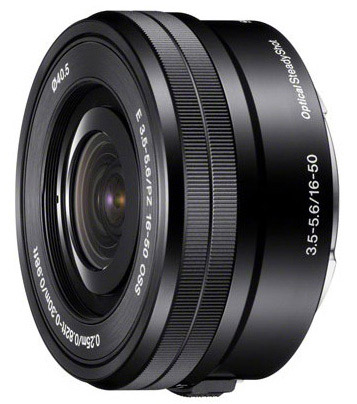
The Sony 16-50mm Power Zoom is sold in a kit with the a6000, and many people choose to go this route. The 16-50mm is very compact—similar to a pancake lens when powered down—and versatile for travel and everyday use. Optical performance is decent overall but weakest at the wide end where there is noticeable distortion and softness. It performs best from about 20mm on, so those who frequently shoot landscapes and other wide-angle photos should consider adding one of the wide-angle lenses below. See the Sony 16-50mm Kit
Sony 55-210mm f/4.5-6.3 OSS ($940 for the two-lens kit)
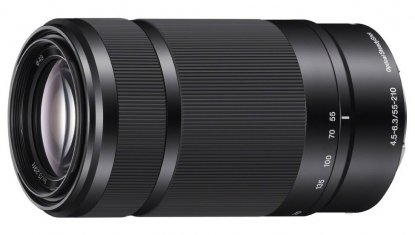
If you get the 16-50mm kit lens above, it makes a lot of sense to add the Sony 55-210mm telephoto zoom for a complete set-up. Taken together, the two lenses have you covered all the way from wide-angle to telephoto at an equivalent of 24 to 315mm. The 55-210mm lens is sharp throughout its range and comes with Sony’s OSS image stabilization technology. And given that it sells for $348 on its own, it’s a good value at about $150 with the two-lens kits. See the Sony 55-210mm Kit
All-In-One Lenses
Sony 18-200mm f/3.5-6.3 oss ($848).
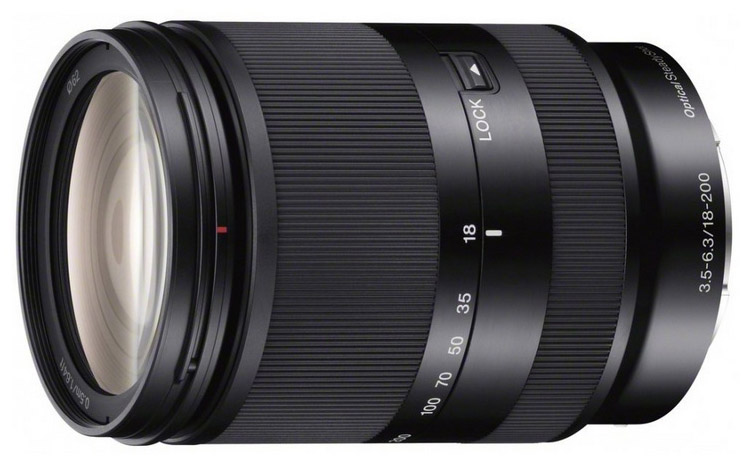
We have mixed feelings about all-in-one lenses: they are extremely convenient and can serve as the only lens in your bag, which is great for travel and walking around. They don’t, however, excel at any particular focal length like a purpose-built lens. The Sony 18-200mm f/3.5-6.3 OSS does capture sharp images and comes with OSS for when natural light is low. It also focuses quickly and is faster than the 55-210mm above. The lens is somewhat heavy at over 18 ounces, particularly on a lightweight body like the Sony a6000, but that’s normal for an all-in-one lens. See the Sony 18-200mm
Wide-Angle Lenses
Sony 10-18mm f/4 oss ($848).
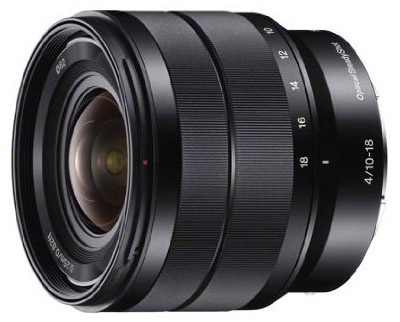
The pricey Sony 10-18mm f/4 OSS is the top wide-angle zoom lens for Sony E-mount cameras. This lens is sharp, has minimal distortion, focuses quickly, and weighs only 7.9 ounces, which is considerably lighter than comparable lenses for digital SLRs. We don’t love the maximum aperture of f/4, but it does have Sony’s OSS image stabilization to help offset camera shake. Another wide-angle prime for the a6000 is the Zeiss Touit 12mm f/2.8, which is a nice lens but also getting up there in price. See the Sony 10-18mm
Mid-Range and Portrait Lenses
Sony vario-tessar t* e 16-70mm f/4 oss ($998).
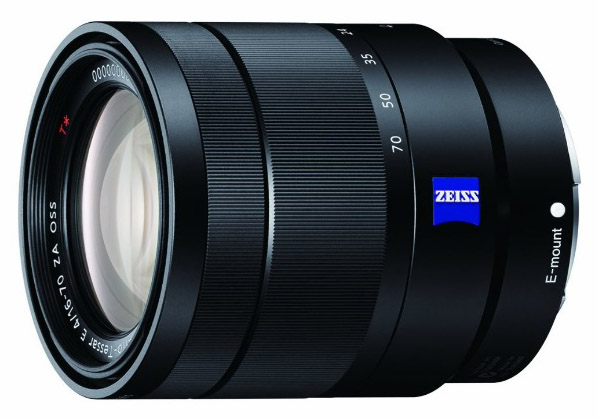
For those who can afford it, the Sony 16-70mm f/4 OSS is our favorite lens for the Sony Alpha a6000. You can buy the camera body, add this lens, and you’ll have superb image quality from 24-105mm for everything from landscape shots to portraits (this a terrific travel option). This long name is a result of Sony’s partnership with Zeiss, which is most obvious in the T* coating that results in great clarity and color. The obvious downside of this lens is its cost, which brings you to around $1,500 total for the camera and lens. See the Sony 16-70mm
Sigma 19mm f/2.8 ($199)
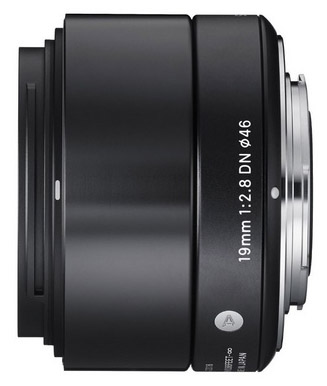
You have two lens options in this focal length range: the Sigma 19mm f/2.8 and the Sony 20mm f/2.8. Both lenses are lightweight, sharp, focus quickly, and have the same maximum aperture. We prefer the Sigma simply because it’s about $150 cheaper. The ridiculously low profile of the Sony 20mm is nice—it's less than 1-inch thick and only 2.3 ounces—but the Sigma is no slouch at 1.8-inches and 4.9 ounces. If the physical difference is important to you, grab the Sony. Otherwise, the Sigma 19mm f/2.8 is a better value. See the Sigma 19mm
Sony 35mm f/1.8 ($448)
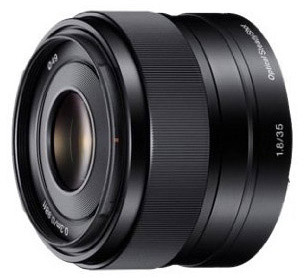
The 35mm f/1.8 is Sony's leading portrait lens for its E-mount series cameras with an equivalent focal length of 52.5mm. This lens is sharp, performs well in low light, and has OSS image stabilization, making it a great option for those who frequently shoot portraits. It’s true that this lens is expensive compared to the 50mm DSLR lens options from Nikon and Canon, but that’s not uncommon in the mirrorless world. The Zeiss Touit 32mm f/1.8 is even sharper but too pricey for our taste. See the Sony 35mm
Sony 50mm f/1.8 ($298)
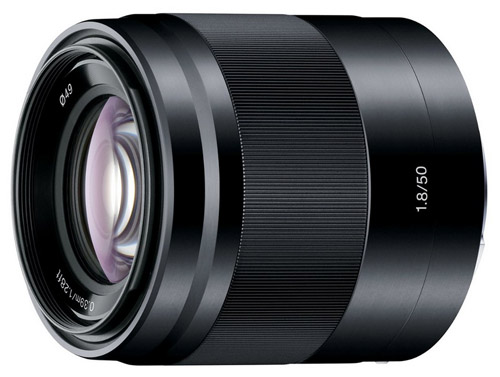
The Sony 50mm f/1.8 is one of the best values of any E-mount lens—it’s sharp all the way to the corners and strong in low light with a maximum aperture of f/1.8. One consideration is that the focal length, which is equivalent to 75mm equivalent on a 35mm camera, has specific uses including close-up portraits and head shots. It’s great for kids and people photos, but it’s not necessarily an ideal travel or walk-around lens. See the Sony 50mm
Sigma 60mm f/2.8 ($209)
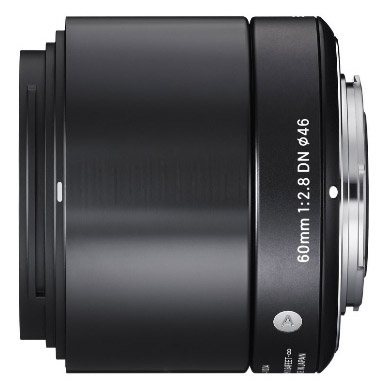
With impressive optical performance and a low price tag, there’s not much to dislike about the Sigma 60mm f/2.8. This lens is best suited for close-up portraits with a focal equivalent of 90mm, and does everything relatively well. It’s sharp, focuses quickly, and can produce a shallow depth of field and good bokeh. One consideration is that the lens does not have image stabilization, but you won’t need it often with a maximum aperture of f/2.8. See the Sigma 60mm
Telephoto Lenses
Sony 55-210mm f/4.5-6.3 oss ($348).
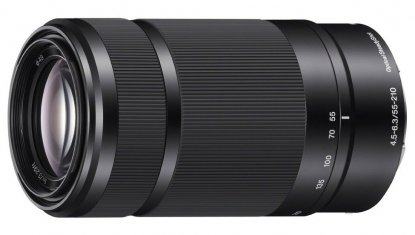
There are few E-mount lens choices at the telephoto end of the spectrum, and this model has the farthest reach at an equivalent of 315mm (second is the 18-200mm above at an equivalent of 300mm). The Sony 55-210mm OSS is listed above as part of a two-lens kit above, or you can buy it on its own for around $350 (it’s a much better value at part of the kit). The only thing to complain about here is low light performance with a maximum aperture of f/4.5, but you do get OSS image stabilization. Perhaps we will see a faster E-mount telephoto lens down the road, but until then the 55-210mm does just fine. See the Sony 55-210mm
Sony Alpha a6000 Lens Comparison Table
Read more about photography.
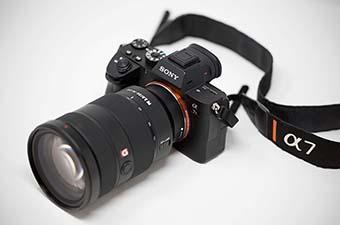
Best Mirrorless Cameras of 2020
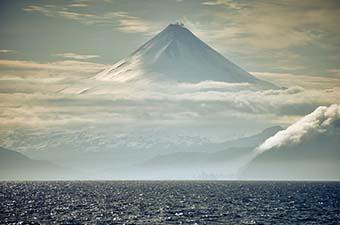
11 Great Sony E-Mount (APS-C) Lenses
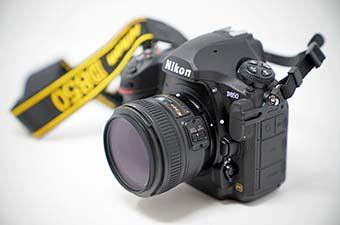
Best DSLR Cameras of 2019
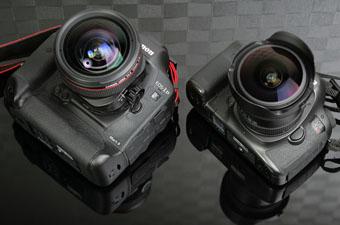
Digital Camera Buyer's Guides and Reviews
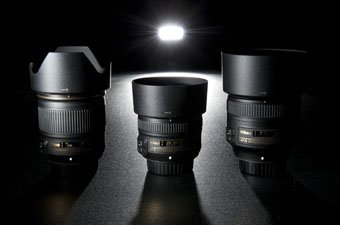
Lens Buyer's Guides and Reviews
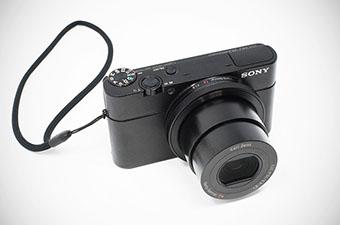
Best Point-and-Shoot Cameras of 2020

Mobile Menu
Megamenu - desktop hamburger menu.
- Hiking Gear
- Backpacking Gear
- Biking Gear
- Camping Gear
- Footwear Reviews
- Climbing Gear
- Skiing Gear
- Winter Gear Reviews
- In-Depth Gear Reviews
- Hiking Shoes
- Hiking Boots
- Trail Running Shoes
- Mountain Bike Shoes
- Approach Shoes
- Climbing Shoes
- Beginner Climbing Shoes
- Mountaineering Boots
- Winter Boots
- Rain Jackets
- Down Jackets
- Synthetic Jackets
- Fleece Jackets
- Hardshell Jackets
- Softshell Jackets
- Windbreaker Jackets
- Ski Jackets
- Winter Jackets
- Hiking Pants
- Hiking Socks
- Trekking Poles
- Baby Carriers
- Running Vests
- Backpacking Tents
- Backpacking Packs
- Backpacking Sleeping Bags
- Backpacking Sleeping Pads
- Backpacking Stoves
- Backpacking Food
- Water Filters
- Altimeter Watches
- Handheld GPS
- Mountain Bike Helmets
- Mountain Bikes
- Mountain Bikes Under $1,000
- Mountain Bikes Under $2,000
- Gravel Bikes
- Bike Brands
- Kids' Bikes
- Hitch Bike Racks
- Camping Tents
- Rooftop Tents
- Camping Sleeping Bags
- Camping Mattresses
- Camping Chairs
- Camping Stoves
- Duffel Bags
- Rock Climbing Shoes
- Climbing Helmets
- Climbing Harnesses
- Climbing Quickdraws
- Belay Devices
- Climbing Ropes
- Climbing Backpacks
- Winter Gloves
- 4-Season Tents
- Ski Helmets
- Ski Goggles
- Ski Backpacks
- All-Mountain Skis
- Ski Bindings
- Backcountry Skis
- Backcountry Ski Boots
- Skis for Beginners
- Hardpack Skis
- Mirrorless Cameras
- Full-Frame Cameras
- DSLR Cameras
- Point-and-Shoot Cameras
- Travel Cameras
- DSLR Lenses
- Mirrorless Lenses
- Lofoten Islands
- Lofoten Hiking
- Hardangervidda
- Jotunheimen
- 10 Great Norway Hikes
- Public Huts
- Torres del Paine
- Chalten and Glaciares
- Lake District
- Patagonia National Park
- Milford Sound
- Abel Tasman
- Marlborough
- Great Walks
- Adventure Towns
Add adventure to your inbox
- Privacy Policy
- Terms of Service
© 2024 Switchback Travel. All Rights Reserved. No part of this site may be reproduced without our written permission.
The Best Travel Lens for the Sony A6000 Series
- By Shimona Carvalho
This is a fantastic travel camera – it really packs a punch with its small size. If you’re going for an APS-C sized sensor, it’s one of the best options out there. One way to really make it work for you is to select the best travel lens for the Sony a6000 – the one that works for you and your style and budget.
The lenses in this article will work interchangeably with any camera in the A6000 series, so that includes the Sony A6000, A6100, A6300, A6400, A6500 and A6600.
Sony A6000 Series
The a6000 is a mirrorless interchangeable lens camera with an APS-C sized sensor. If that sounds confusing, here are a few definitions.
Mirrorless cameras don’t use the mirror present in SLR cameras, so they are smaller and more compact.
Interchangeable lens cameras allow you to swap out the lens as needed. This is great for versatility.
APS-C is a sensor size that is smaller than a full-frame sensor but still a lot larger than a cellphone or point and shoot.
Selecting the Best Travel Lenses
Everyone has a style of travel and for me, lightweight is the way to go. I mean, within reason.
I’m not really a one-bagger but I never check any of my camera gear in. I just don’t want to end up at my destination with my gear pilfered or damaged.
I also like to take my camera everywhere while traveling. My first SLR, I bagged in a gallon ziploc and took to Burning man! Which is about the dustiest place I’ve ever been.

Need a tripod for the trip?
If you want to capture the city at night or even the stars, check out these affordable tripods that are compact enough to travel in your carryon luggage!
So I tend to look for budget lenses that do a great job, rather than the best of the best premium lenses. I want to hit that sweet spot of price and quality.
To start with, let’s go over some of the factors you should consider when putting together the ideal travel lens kit.
As I mentioned before, a lightweight kit is best for travel. Not just for the flight, but even on longer hikes.
I used to carry a Canon 70d and 4 lenses but I am too damn old for that now. My neck and shoulders are killing me after a day or two of lugging all that around.
Equally important is knowing what you don’t need. If you really don’t care for wildlife photos, don’t lug a giant telephoto around.
Now with mirrorless cameras, we can go so much lighter, why, why would we cancel that out with multiple massive lenses? I see people do this all the time!
So keep in mind the weight of the lenses as you pick them. And not just the weight of each one, but the total weight of your kit as well.
Focal Length
Another key factor to consider is the focal length ranges of your lenses. The focal length of a lens is basically how zoomed in or out you are.
You want some versatility there. It would be sad to get to Iguazu Falls and realize you don’t have a lens that really gets it all in.
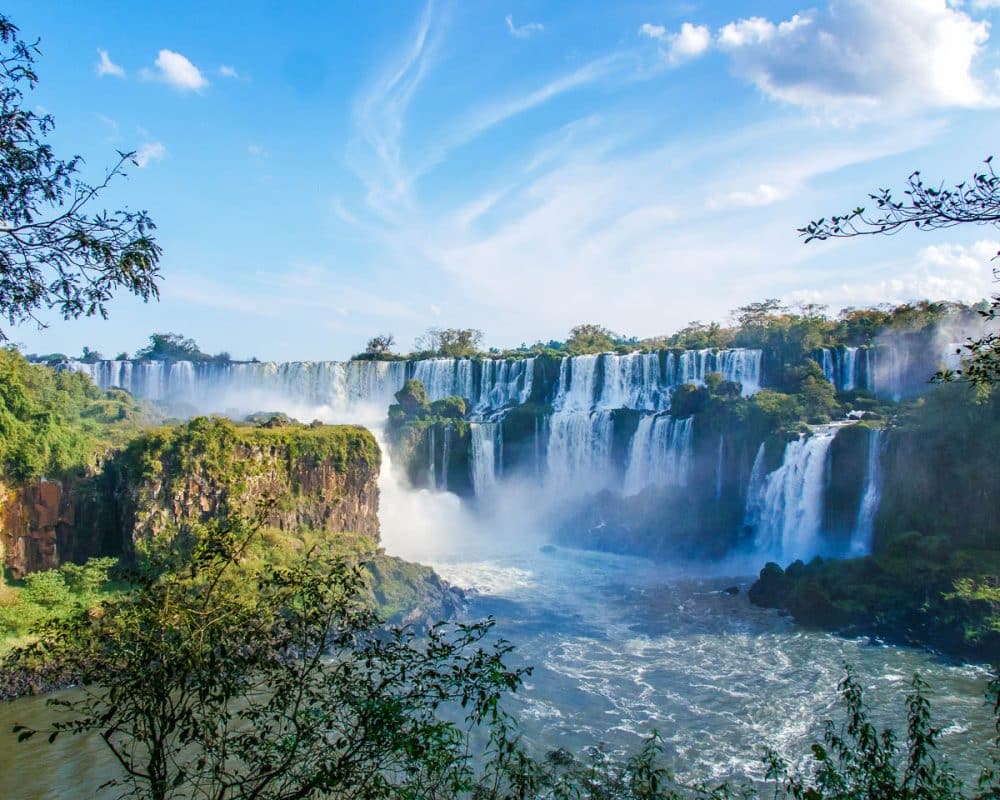
Buy this Print
Or if you go on safari, you’re really going to want to zoom in with a long focal length to get those wildlife pics. You might really miss out without a good zoom.
The best travel lens really depends on you, the photographer and your personal style of photography.
Equally important is knowing what you DON’T need. If you really don’t care for wildlife, don’t lug a giant telephoto around. It’s a waste of space!
Remember – APS-C has a 1.5x crop factor , so a 50mm lens is effectively 75mm. Do the math when you figure out what ranges you want to cover. You can check out various crop factors here .
The largest aperture on the lens tells you how much light in can gather in low light conditions. Since you can always stop down the aperture, it would seem you should get the largest aperture and go from there. But, this feature comes at a price so you have that balance it against cost.
The other nice thing about a wide aperture is that nice creamy bokeh that smoothes the background and highlights your subject more clearly.

Lenses that have a wide aperture like f/1.8 and under tend to cost a lot more than those with f/4 as the largest aperture. Just do yourself a favor and take one lens with an f/1.8 aperture.
You know those moments in the yurt with your new buddies sampling mongolian horse milk vodka for the first time? It is really nice to have at least one lens that can do the job in low light.
My tip here is to consider a fast prime for the job. You can get a wide aperture at a great price, and it will give you that beautiful bokeh that can really isolate your subject.
Weatherproofing
Weatherproofing may or may not be important to you. Honestly, it’s not important to me. The Sony a6000 range of cameras is not weatherproofed so there’s not much value in weatherproofing the lens.
I mention it here because I know people fret about it but in over 20 years of shooting in rain, dust, and humidity, I’ve really not had much of a problem.
And you know what? You can’t really shoot in rain anyway – those pesky water droplets still ruin the shot even in a weatherproofed camera.
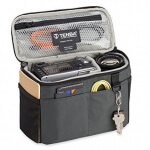
Keep your gear safe
A padded case can protect your gear during travel, and be popped into a backpack for the day. Buy this great accessory as a gift or just for yourself!
Best Travel Lenses for Sony A6000
1. sony 18-105mm f4.
The 18-105mm is what I call a superzoom . It covers the whole range of landscape through telephoto, so if you’re lazy like me, and looking for just one best travel lens, this is the one.
The lens is really quite sharp and incredibly versatile. Most photogs find they keep this lens on 90% of the time. This one’s great for the photographer that wants to keep moving and shooting, rather than swapping between several primes.
I recently went to Yellowstone and a superzoom was really a great choice because at times your zooming out to capture some surreal orange thermal pool and then you see a bison in the distance and bam, you zoom in to shoot that.
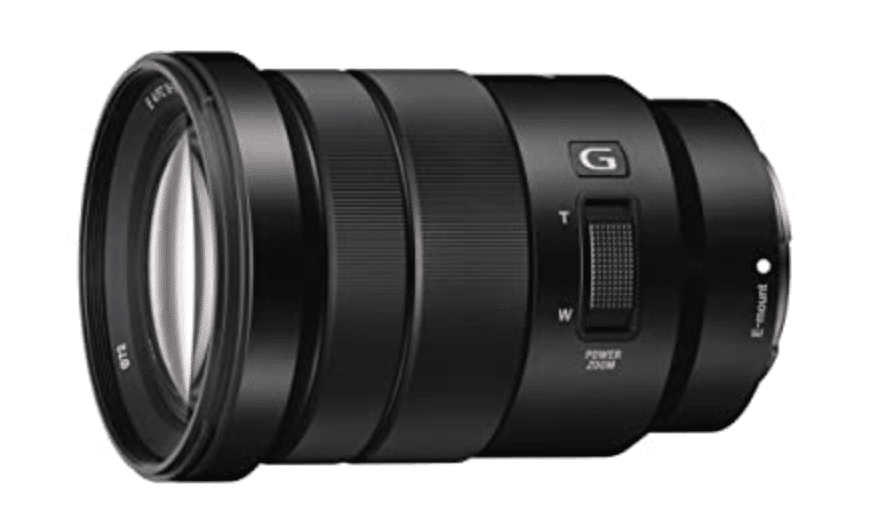
Buy Sony 18-105mm f/4 Now
The kit lens is actually a great walkaround lens as well, and it weighs in at just 116g. So don’t rule that out as an option. This is heavier but covers a huge focal range in comparison.
The kit lens has a focal range of 16-50mm so while you gain some wide angle, you lose quite a bit of zoom. But if your shooting style is more landscape than wildlife, maybe you don’t need all that zoom. In that case, the kit might be the better lens for you.
But if you like to isolate your subject and get that nice narrow DOF sometimes, the extra zoom helps with that.
2. Sony 35mm F1.8
The next lens I usually recommend in a travel kit is a lowlight prime . The reason being that the kit or walkaround lenses tend not to have the best lowlight performance.
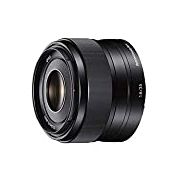
The walkaround lens is an f/4 lens so it’s not especially fast. This isn’t much of a concern when you’re hiking about during the day, but at night it’s great to have a lens that can capture the moment without resorting to flash. Because, who wants to be that person?
This prime is pretty compact, and nice and light at 1.8g
3. Sigma 30mm F1.4
This is another lowlight prime that’s a great option. Amazingly it’s an f/1.4 lens that costs a good bit LESS than that Sony. As I mentioned earlier, the wider aperture usually costs a good bit more.
While this is a great lens that will capture gorgeous shots with natural light, you might want to note that the lens is about double the size and more than 100g heavier than the Sony.
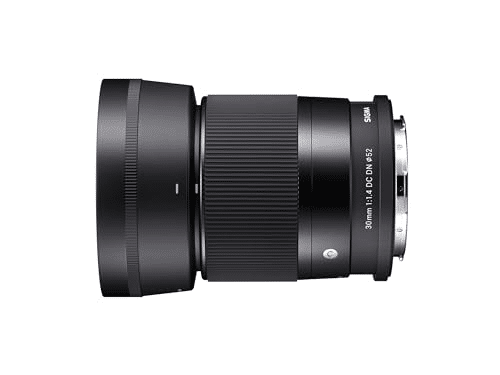
Buy Sigma 30mm f/1.4 Now
And you know what, you probably won’t notice less that one stop more light coming in, but you will notice the weight.
However, as this is quite a bit more affordable, this is a good budget option.
4. Sony 10-20mm F4 (Updated for 2024)
This ultrawide zoom is a great choice for landscape shots. If you’ve never shot with an ultrawide, trust me, they really pull you into the image with that frame of view.
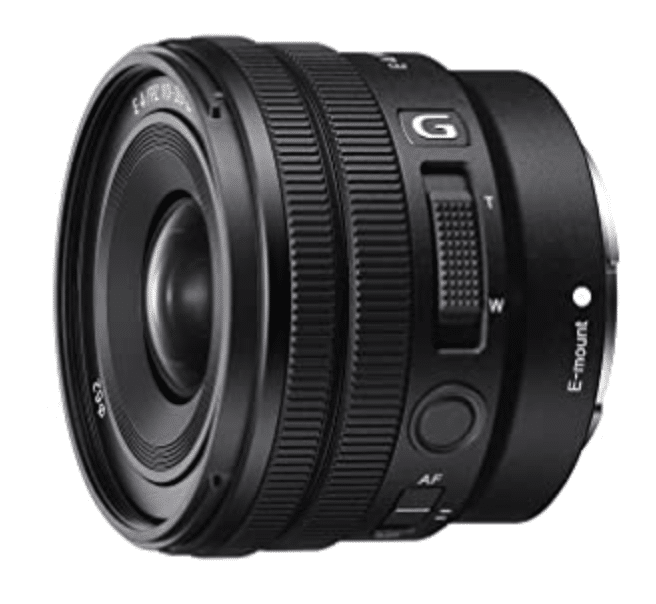
Buy Sony 10-20mm F4 Now
I like the dramatic nature of ultrawide shots. And since this one’s a zoom, you’re not stuck at one focal length but have some versatility.
5. Rokinon 12mm F2.0
The Rokinon 12mm f/2 is an ultra wide angle lens. It’s manual focus but honestly, with such a wide lens, it really doesn’t matter. It’s really easy to get most things in focus with such a wide angle.
This lens is a really great deal as well, it’s just a hidden gem in my opinion. A lot of people don’t consider it because of the manual focus and the Rokinon badge.
But now you know the secret – buy this fantastic lens.
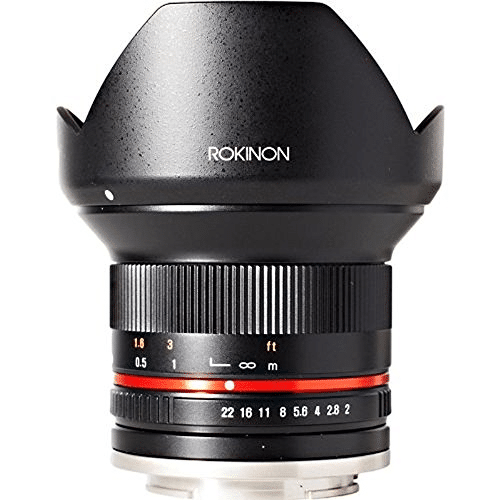
Buy Rokinon 12mm F2.0 Now
It’s a great choice for landscape and architecture, of course. And should an incredible starry sky appear above you, you can try some astrophotography.
If you haven’t tried astro, you actually don’t need a ton of equipment for a simply starry shot. You just need to follow the rule of 500.
The rule of 500 says the longest shutter speed you can use before your photo gets blurry is equal to 500 divided by your lens’ effective focal length.
So with the Rokinon 12mm lens, that’s effectively 18mm with the 1.5x crop factor. The 500 rule says you get 500 / 18, so upto 27.7 secs to capture the stars. Paired with the f/2 aperture, that’s plenty of time to get a great shot of the milky way.
6. Sony 70-350mm F4.5-6.3
If you are going on a safari, it helps to have a lot of reach, so I definitely want to include a telephoto.
However, you should know, this one is quite heavy and quite expensive so unless you really need the reach, it might be overkill.
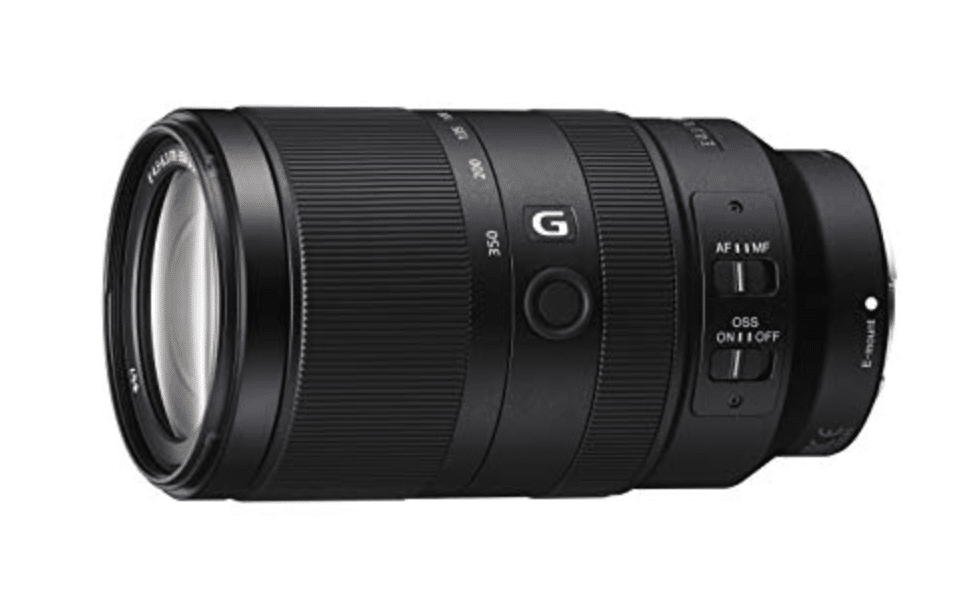
Buy Alpha 70-350mm F4.5-6.3 Now
If I were to spend on a safari like trip, I would go ahead and buy this one, but not for an average trip.
Best Travel Lenses for the Sony A6000 series
So here we are, that’s the rundown of all the great lenses that would work for different travel styles.
Remember the goal is not to buy all of them but come up with a 2 or 3 lens kit that works for you. So the question is, which kit is for you?
I’ll summarize the lenses here and then we can combo them up into a few kits.
Kit Combinations
The biggest mistake new owners of mirrorless cameras make is to buy too many lenses and end up with just as big and heavy a kit as an SLR.
And then the camera bag, full of lenses, ends up stuck in the closet because it’s just too inconvenient to take places.
You definitely don’t want to do that. So pick a lightweight solution that works for you.
If you’re going to go with one lens, for sure it should be the Sony 18-105mm. This lens is just great quality in a great package, with tons of versatility.
The Do It All – Sony 18-105mm f/4 Huge focal range · One lens workhorse Weight: 427g Cost: $$
Two Lens Combo
The shots you will most likely miss, with one lens, are those late night low-light shots so a great two lens combo is the superzoom and a lowlight prime.
So another great kit is this lowlight upgrade:
Lowlight Upgrade Kit
Superzoom – Sony 18-105mm f/4 Huge focal range · One lens workhorse Weight: 427g Cost: $$

Low-light Prime Sony 35mm f/1.8 Incredible image quality Large aperture Weight: 155g Cost: $$
If you’re early to bed and early to rise to catch the sunrise, maybe you don’t need a lowlight normal lens. Instead go for a great ultrawide lens as your second lens:
Ultrawide Upgrade Kit
Superzoom Sony 18-105mm f/4 Huge focal range · One lens workhorse Weight: 427g Cost: $$
Ultrawide Rokinon 12mm F2.0 Dramatic landscape shots · Astrophotography gem Weight: 245g Cost: $
These are some examples of a kit you can build with these recommendations. Obviously not all the possible combos, but hopefully you have the info to build your own.
I hope this has helped you pick the perfect travel kit to take on your next trip . The best travel lens for the Sony a6000 is a very personal choice – what you love to shoot and how you like to travel are an important part of the equation.
Always remember that you want to consider the overall weight of the kit and go easy. It’s better to have a few lenses you take everywhere than a lot of lenses that sit in the closet.
Stay shooting.
This post has affiliate links. As an Amazon Associate I earn from qualifying purchases. The opinions presented are my own.
More Like This
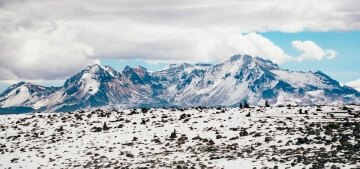
Best Fuji Lens for Travel Photography
So you’ve got your Fuji camera and are putting together the ultimate travel kit. Don’t worry we’ve got you covered with this list of the best Fuji lenses
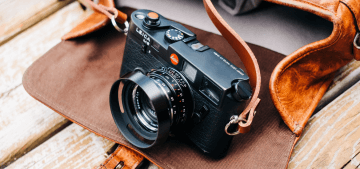
A DIY Camera Bag is the Best Travel Camera Bag
Alright peeps, I’ve had a number of camera bags along the way and honestly, most of them have been downright ugly. So my rec is to make the
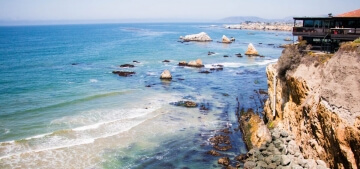
Best Online Backup For Photographers
Online backup is one of those things that everyone knows they need but no-one wants to set up. The last ransomware incident finally lit a fire under my butt
Shimona Carvalho
As an Amazon Associate, I earn from qualifying purchases on this site. The opinions presented are my own.
Table of Contents

The Best Camera for Travel

8 Great Gifts For Beginner Photographers
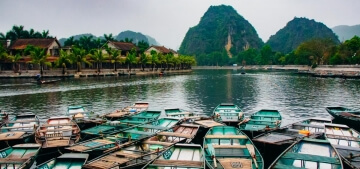
The Best Micro Four Thirds Lenses for Travel
A Travel Photography Guide for Aspiring Photographers Location reviews focused on photography Enhanced with techniques to learn and gear to get before you go. Enjoy planning your photo trip and get the shots you want!
COPYRIGHT SHIMONA CARVALHO 2021
- Custom Ranking
- Smartphones
- Camera Sensors
- Camera Lenses
- Wireless Speakers
- Test results
- Tech articles
- How we test
- Our company
- Our Partners
- B2B Solutions
Best lenses for the Sony A6000: Primes and Zooms
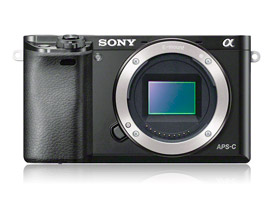
Introduction
With no replacement yet for the NEX-7 , Sony’s reimagined version of the upper-mid-level NEX-6 , now called the A6000 , sits at the top of the range of the firm’s discrete APS-C mirrorless models. Although the built-in 1.44 million-dot OLED EVF may be seen as a downgrade from the 3.36 M-dot unit in the NEX-6 , the new model offers several benefits over its 16- MPix predecessor, including the same 24-Mpix CMOS as the NEX-7 and an upgraded hybrid AF system with much greater coverage. Comprising 179 on-chip phase detection points and 25 contrast-detection points, it covers close to 90% percent of the frame with subject tracking.
The A6000 also has continuous shooting of up to 11fps, a tilting 3-inch (921k dot) rear LCD, and improvements in video capture. Enhancements include the addition of zebra-pattern exposure warning and uncompressed 1080i/p AVCHD at 24/50/60 fps with an HDMI output option. It is, however, the sensor performance that we’re interested in here, along with how the expansion of the dedicated on-chip AF phase detection pixels affect image performance (if at all).
We’ve tested over 23 lens models from Sony and third-party maker Sigma, including the new stabilized FE 70-200mm f4 G OSS ; however, we’ve yet to assess the pro-video oriented FE 28-135mm f4 G OSS model and the new Zeiss Vario-Tessar T* FE 16-35mm f4 ZA OSS – all stabilized full-frame models built essentially for the A7 series, yet compatible with the A6000 .
With a DxOMark lens score of 27, the best-performing model on the Sony A6000 is the Zeiss Sonnar T* FE 55mm f1.8 ZA . As an FE series full-frame lens intended for the A7 series, it has an approximate field of view of a 85mm short telephoto on the APS-C A6000 . At $1,000, it’s somewhat at odds with the price of the body, but it comfortably outperforms the similarly-priced Sony FE Sonnar T* 35mm F2.8 ZA , in joint 4 th place with 23 points and a lower peak sharpness of 11-Mpix.
In second place is the new Art-series Sigma 60mm f2.8 DN A model at just $239. While it lacks the high speed of the Zeiss 55mm , it’s also designed with a smaller image circle (for APS-C). It has higher peak sharpness than the Zeiss, excellent uniformity, low levels of vignetting , and excellent control of chromatic aberration .

In joint second place with the Sigma is the stabilized Sony E 50mm f1.8 OSS . It’s the equivalent of a 77mm on the A6000 , but it’s still a good choice for portraits. Wide-open, it lacks corner sharpness but it’s sharper in the center than the Zeiss. In fact, there’s a good central core of sharpness to f2.8, but it can’t quite match the peak sharpness or the uniformity of either the Zeiss or the Sigma. Nevertheless, it’s a well-rounded model with a good blend of features, price, and performance.
As for shorter focal lengths, the Sigma 30mm (45mm equiv.) f2.8 DN models stand out for their price and optical quality. Despite the maker’s claims that the optical construction remains unaltered, we were surprised to find that the newer Art or “A” series reimagining of the EX version isn’t quite as good a performer as previous models. Sony’s highly-regarded 24mm (35mm equiv.) f1.8 is strong optical performer, yet at $1000, it’s a pricey option for 35mm fans.
The best-performing zoom on the A6000 is the one the latest additions to the range, the stabilized full-frame 70-200mm (100-300mm equiv.) f4 . At close to $1,500, it’s not going to appeal to everyone, but image quality is very high and it will work with the full-frame A7 series (which it was originally designed for), so it’s arguably a good value in that context. It’s a great performer in the mid-zoom range (135mm) at the initial aperture , but sharpness declines rapidly towards either end. Stopping down improves both sharpness and uniformity, while both chromatic aberration and distortion is very low.
In second place is the relatively accessible full-frame FE 28-70mm f3.5-5.6 OSS . It’s the equivalent of a 42-105mm on the A6000 and a slightly better performer overall than the wider, constant-aperture 24-70mm f4 OSS at $1,200. Uniform sharpness across the field isn’t exactly a strong point even on the A6000 , but it is sharp centrally at all focal lengths. Chromatic aberration is a little high at shorter focal lengths, but otherwise it’s a good performer.
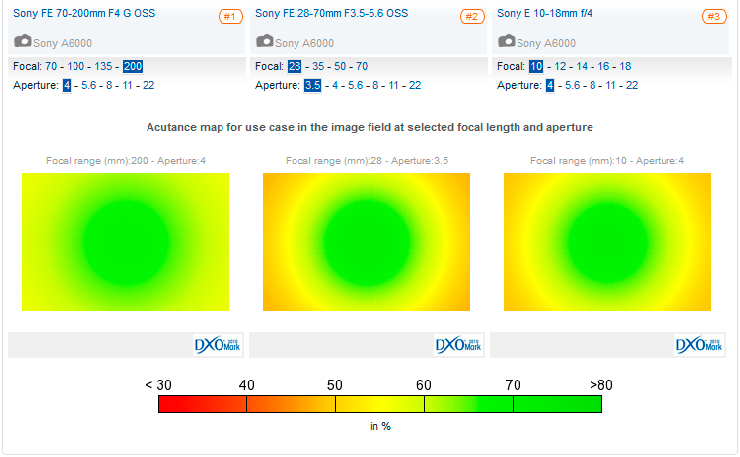
In third place is the recently-reviewed Sony FE 16-35mm f/4 (see the review here ).
In fourth place is the APS-C-only E-mount 10-18mm f4 . It’s the equivalent of a 16-35mm f4 — a highly desirable range for the A6000 . At $850, it’s not exactly cheap, considering its only average performance (relatively low sharpness and presence of lateral CA) at full apertur,e but sharpness levels and uniformity improve from f5.6 onwards.
One of the best all-round performers is the collapsible E-mount 16-50mm f3.5-5.6 , which is often bundled as a kit lens. It’s sharper at the shorter end of the zoom range (like most models), and it requires stopping down a stop, but it’s very compact and lightweight.
If you have a Sony A6000 and a favorite lens, we would very much like to hear from you. Please leave a comment below about the lens you have and why you like it.
DXOMARK encourages its readers to share comments on the articles. To read or post comments, Disqus cookies are required. Change your Cookies Preferences and read more about our Comment Policy .
- Facebook Instagram Twitter Youtube
Travelfornoobs
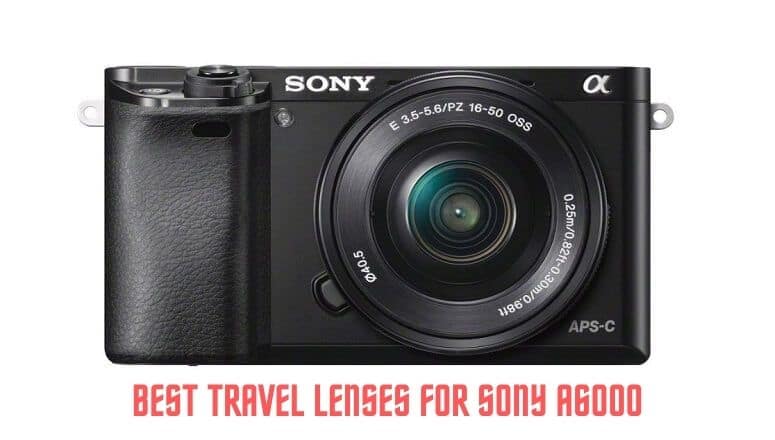
The Best Travel Lens for Sony a6000

- Advanced 24.2MP back Illuminated 35 millimeter full frame image sensor
- ISO 100 25600 (expandable to 51200). Lens compatibility: Sony E mount lenses
- Hybrid AF with 179 point focal plane phase detection and 25 contrast detect points
What is the best travel lens for Sony A6000?
So you’re planning on travelling and wondering which lens is best for travel photography with your Sony A6000?
These days, most travelers use their smartphones to take pictures and post them on Facebook or Instagram. Don’t get me wrong, you can make impressive pictures with recent smartphones and they are very useful to document little details of your trip, but they are limited to one perspective.
So you’ll probably need a lense with a focal range that will allow you to get shots that are impossible to get with your cell phone (zoom or wide angle).
What makes a good travel lens?
Well, this is extremely subjective and depends on the type of photo you will make when you will be on the road. It also depends on how often you’re going to use it. Any lens can be good for travel, but having to commute by train, bus, plane, and moving around all the time makes it hard to carry a huge bag dedicated to your favourite lenses. There are always the risks to pay extra fees for them, to break them during the trip or to get your bag stolen.
Hence, most photographers like to travel light, with the lightest and most versatile setup possible. Getting the most out of one or two lenses is probably the way to go, with a range .
You may not know for sure what kind of shot you are about to make during your trip. If you plan on taking portraits, wildlife, street scenes but also landscapes, a zoom lens will be perfect since they offers the advantage of allowing close-ups and scenery shots, to some extent. For a more versatile use, this kind of lens will be the perfect fit.
Travels are full of surprises, and you may want to grab your Sony a6000 and shoot as quickly as possible. For this situation, the best lens will be a bright wide angle lens since they are usually a good choice for street photography. They allow for close-ups and large scenes, and are generally pretty small and convenient to carry. If you are planning a city trip, this kind of lens should be attached in permanence to the body of your Sony a6000.
Every photographer has its own favourite setup for snapping on the go. But if you are not sure on what travel lens to choose for your Sony A6000, this small selection is suitable for most photographic opportunities while traveling.
Note: the product links in this article lead to Amazon.com
Sony 18-105mm f/4 OSS (All around travel lens)
Sony 10-18mm f/4 oss (wide angle), sony 55-210mm f/4.5-6.3 oss (zoom lens).
- Useful accessories
Here’s the Top 3 travel lenses you should consider for your Sony A6000:
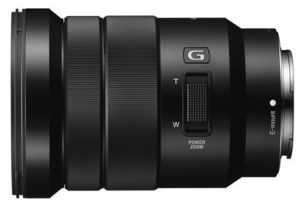
The 18-105mm f/4 is far from being a lightweight, but if you want to do without several lenses when travelling, for example, it’s one of the most versatile lenses available for the Sony a6000, with a fairly wide focal range that ranges from wide angle to zoom. For the pluses: it has integrated optical stabilization and the zoom is done internally (i.e. it does not extend when zooming), which is convenient if you want to put your camera on a camera pod to film. Small reproach: when you turn off your camera, the lens goes back to 18mm and does not stay at the last focal length used.
Even if the image quality is very good, don’t expect photos to be as sharp and with a background blur as beautiful as a fixed focal length that will have a larger aperture (quite a bit of distortion at 105mm). That said, it offers great video performance and if that’s the main use you’ll make of it, for example for vlogging, you’ll be happy with it (a little heavy at arm’s length though!).
In short, if you are looking for a versatile lens for your Sony a6000, this 18-105mm is something to consider if you are aware of its limitations.

- High performance E mount lens with excellent contrast; Minimum Aperture (F): 22
- Minimum Focus Distance : 1.48 (Wide) 3.12 ft (Tele), Maximum Magnification ratio : 0.11x, Focal Length : 18 105 mm
- Versatile 27 158mm (35mm equiv.) zoom range. Angle of view (APS C): 76° 15°. Number of aperture blades are 7
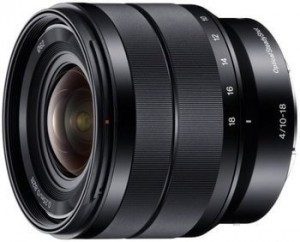
Let’s start with the positive points: we have here a surprisingly light wide angle considering its size, compact and therefore easy to take with us on a trip, with a fixed aperture of f/4. The focal length range of 10-18mm is very useful for vlogging, especially since it’s stabilized, or for architectural photography, for example.
Let’s move on to the negative points: the most annoying thing is that some copies are bad and deliver a rather weak dive. Remember to check the sharpness of the image in the first few days of your purchase, and get another copy if it’s defective! The fault lies with Sony, which did not carry out adequate quality control. Given the high price at which it’s sold, it’s rather annoying (to be polite). Finally, a rather curious little thing, without being problematic, is that it lengthens by almost 1cm when you are at 10mm, and retracts when you go to 18mm….
Otherwise, another wide-angle option is the Rokinon-Samyang 12mm f/2 ( see on Amazon.com ), which costs three times less than the 10-18mm but with manual focusing. But overall, the 10-18mm f/4 remains a very good wide angle for the Sony a6000 provided you get a good copy!

- Angle of View (APS-C) - 109 ° – 76 °
- Minimum focal length of 10 mm (15 mm in 35 mm-camera equivalency)
- Minimum Focus Distance : 0.82 ft (0.25 m), Maximum Magnification ratio : 0.1x
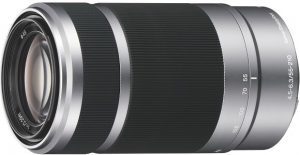
An interesting lens to have in your bag to take pictures from a distance. So yes, the aperture is not incredible and you should not try to use it in low light, but during the day with enough sunlight it offers really correct results. On the positive side, it’s stabilized and therefore allows you to shoot freehand, and its quality of construction is strong enough to carry it on a trip. The focal length from 55 to 210mm is versatile and offers a lot of possibilities if you are creative.
In short it’s a good zoom for the Sony a6000, yes it doesn’t produce as beautiful images as with a fixed focal length and it offers better images at 55mm rather than 210mm, but its focal length is really practical if you want to shoot subjects from a distance. And it’s sold at a very affordable price.

- Wide zoom range (82 - 315mm 35mm equivalent) ideal for sports or nature;Aperture blades : 7
- Internal focusing for smooth, quiet operation - perfect for video capture.Direct manual focus with non-rotating focus ring during AF: ideal for precise, comfortable manual focus adjustments
- Optical Steady Shot image stabilization for stable video capture and low light performance
☛ ADDITIONAL OPTIONS
- For more travel lenses options, check this out: The best lenses for Sony A6000
Useful accessories for travel photography
Travels can be hectic, so you want to make sure that your lenses are safe and sound all along the trip. A good quality carry bag is mandatory to protect them from the weather and bumps. A UV filter will also help protect your lens by adding a layer of glass that can be scratched or dripping with water with no harm to the lens. Finally, a polarizing filter is always useful to get a glare-free result in any shooting scenario you might face.
Here is a small selection of useful accessories to complement your lenses and your Sony A6000:

If you want to go on a trip soon and are wondering what is the best travel lens for the Sony A6000 , think in advance about the types of photos you plan to take mainly: landscapes, portraits, night shots… Think about the focal lengths you need for that.
You can also go on Google, type in the name of the country or the tourist sites you want to visit and you will see which focal lengths are mainly used. This will give you an idea of what equipment you will need to bring but remember that taking a single lens with you might be too limiting. The flexibility of an all-around lens is very useful but generally they offer a lower image quality than a fixed focal length.
Another thing, if you plan to do a lot of walking or hiking, take into account the total weight with the camera body and the lens. If the whole thing is too heavy or bulky and lacks discretion, you won’t want to bother with it and would rather just take your smartphone with you. You may also not want to risk damaging an extremely expensive lens.
And finally, perhaps the most decisive point about choosing the perfect travel lens for your Sony A6000 will be if you need to get a portfolio of professional quality travel photos or videos (it may be your business or it may become your business who knows?).

Leave a Comment Cancel reply

25 Best Lenses for Sony Alpha A6000 (The Ultimate Guide & Reviews)
- Last updated on February 12, 2023
I tested more than two dozen of the best lenses for the Sony a6000 and finally, I found that the Sigma 18–50mm F2.8 DC DN Contemporary is the best overall lens for this camera body.
I’ve spent more than twenty years as a professional photographer and many of those working with a Sony a6000, which is a popular mirrorless camera among photographers and videographers of all levels, including beginners, amateurs, and professionals.
When paired with a quality lens, the a6000 can keep up with almost any camera on earth, including those costing several times more than Sony’s affordable a6000.
Like the Sony camera body, Sigma’s 18-50mm F2.8 DC is feature-packed and delivers outstanding value at a modest price. Many popular lenses will cost twice or three times what a Sigma costs, with only marginal improvements in overall quality or optical design.
This lens delivers impressive optical quality, an artful bokeh effect, and a highly useful zoom range that makes this Sigma a proven performer for everything from portraits to landscapes to street photography.
Depending on your preferences and the photography styles you engage in, some lenses may be a better fit.
Keep reading to learn about why the Sigma 18–50mm F2.8 is my favorite, and what alternative options I recommend for the Sony a6000.
Top 25 List of the Best Lenses for Sony a6000
- Overall Best lens for Sony a6000: Sigma 18-50mm F2.8 DC DN Contemporary
- Best all-around lens for Sony a6000: Sony E PZ 18-105mm f/4 G OSS
- Best all-around lens for professionals Sony a6000: Sony E 18-200mm f/3.5-6.3 OSS
- Best standard prime lens for Sony a6000: Sony E 35mm F/1.8 OSS
- Best budget standard prime lens for Sony a6000: Sigma 30mm F2.8 DN Art
- Best Standard Zoom Lens for Sony a6000: Sony Zeiss Vario-Tessar T* E 16-70mm F4 ZA OSS
- Best Budget Standard Zoom Lens for Sony a6000: Tamron 18-200mm F3.5-6.3 Di III VC
- Best travel lens for Sony a6000: Tamron 28-200mm f/2.8-5.6 Di III RXD
- Best portrait lens for Sony a6000: Sony E 50mm F1.8 OSS
- Best budget portrait lens for Sony a6000: Sigma 60mm F2.8 DN Art
- Best wedding lens for Sony a6000: Sony FE 24-70mm f/2.8
- Best prime lens for Sony a6000: Sony FE 28mm f/2
- Best wide-angle lens for Sony a6000: Samyang 12mm F2.0 AF
- Best Budget wide-angle lens for Sony a6000: Sigma 19mm F2.8 DN Art
- Best wide-angle lens for Professionals Sony a6000: Sony E 10-18mm F4 OSS
- Best wide-angle zoom lens for Sony a6000: Sony FE 12-24mm F2.8 GM
- Best vlogging lens for Sony a6000: Sigma 19mm F2.8
- Best Macro lens for Sony a6000: Sony E 30mm f/3.5 macro
- Best Macro lens for Professionals Sony a6000: Sony FE 90mm f/2.8 Macro G OSS
- Best telephoto lens for sony a6000: Sony E 55-210mm F4.5-6.3 OSS
- Best telephoto lens for professionals Sony a6000: Sony FE 70-200mm F4 G OSS
- Best super-telephoto zoom lens for Sony a6000: Tamron 150-500mm F5-6.7 Di III VC VXD
- Best video lens for Sony a6000: Tamron 17-70mm F2.8 Di III-A VC RXD
- Best landscape lens for Sony a6000: Tamron 11-20mm F2.8
- Best fisheye lens for Sony a6000: Rokinon 8mm F2.8
The Best Lenses for Sony a6000 Reviewed
Whether you’re shopping for a prime or a zoom, an ultra-wide angle, or a telephoto, there are tons of excellent lenses for E-mount Sony cameras like the a6000. We’ve checked out the top 25 best lenses for the a6000 to help narrow your search for the perfect lens.
1 – Overall Best Lens for Sony a6000: Sigma 18–50mm F2.8 DC DN Contemporary
The design of most constant aperture zooms, like the Sigma, is often inspired by dump trucks, making them quite bulky and difficult to handle. However, the Sigma 18-50mm is a game-changer! It has a sleek design that makes it look and perform beautifully on a Sony a6000, unlike other “trinity zooms” that are known for their bulkiness.
I love its innovative optical design that leverages 13 elements across ten groups, including three aspherical elements, which help Sigma reduce the lens’s overall size without compromising sharpness or clarity. This translates to rich and vivid images , and I enjoy how the subject jumps forward from the background in stark contrast.
Speaking of aperture, the lens delivers a fast constant aperture of f/2.8, which makes shooting under low light conditions pleasant . I’m constantly surprised by how bright this lens is under the most challenging lighting conditions. Its reasonably shallow depth of field makes it easy to isolate the subject against any background.
I appreciate that Sigma uses its TSC composite material to build the lens body, which is further enhanced by weather sealing throughout. This gives me the confidence to shoot in extreme weather conditions such as outdoor photography . The focus and zoom rings offer an excellent responsive and smooth feel, and I love the high-end feel of this lens during operation.
Last but not least, I also like that Sigma 18-50mm features a premium AF motor that delivers lightning-fast and accurate autofocusing. For the videographers among us, you’ll also love how quiet the focus motor is, providing silent autofocusing while shooting video.
Overall, the Sigma 18-50mm stands out with its sleek design and outstanding performance on a Sony a6000. Its innovative optical design, fast constant aperture, and responsive focus and zoom rings make it a high-end choice for both photographers and videographers.
2 – Best All-around Lens for Sony a6000: Sony E PZ 18–105mm F/4 G OSS
The Sony E PZ 18-105mm boasts a remarkable zoom range capable of capturing any subject, combined with top-notch optics and Sony’s renowned reputation for quality. It’s an excellent choice for photographers hunting for a versatile, all-around lens.
One of the best things about this lens is despite its constant f/4 aperture and wide zoom range, this Sony lens has a small footprint and fits well on the a6000 body. This makes it easier for me on long days of shooting , as I wouldn’t want to carry a lens that has a monstrous size.
Another aspect I love about this modestly sized lens is its image stabilization feature, considering its zoom range. It dramatically reduces camera shake for clearer images . I love the freedom it provides to focus on capturing beautiful photos without worrying about my shakiness.
I also like its build quality, which far exceeds what I’d expect for a lens at this price. The lens body and mount are metal and beautifully finished, and the body doesn’t extend during zoom operation, making the lens unique. I love the sleek appearance the lens provides regardless of where you are along its range.
I find the Zoom function of the E PZ 18-105mm lens to be exceptional, and it’s fast, smooth, and silent. A slide on the lens body allows me to change the zoom speed, and I can control the zoom manually or automatically. Manual focusing is by wire, but it’s still fast and responsive, and AF is swift and quiet, which I love, especially for videography applications.
In conclusion, the Sony E PZ 18-105mm lens is a versatile and high-quality option for photographers looking for an all-around lens. The zoom function is exceptional, fast, smooth, and silent, and the lens is perfect for both photography and videography applications.
3 – Best All-Around Lens for Professionals Sony a6000: Sony E 18–200mm F/3.5–6.3 OSS
An excellent all-around lens that represents a slight step up from the Sony E PZ 18-500, The Sony E 18-200mm offers similarly excellent performance and a dramatic improvement in optical quality.
I am thrilled that this lens uses 17 elements across 13 groups, including two ED and four aspherical elements, to effectively counter image aberrations from multiple sources. As a result, the images produced are vivid and sharp .
I’m consistently impressed by the imaging capabilities of this lens. While there’s some distortion at 18mm and some chromatic aberration at either end of the zoom range, it’s both manageable and can be easily corrected in Photoshop or a similar editor.
The build quality of this lens is excellent, and it didn’t take me long to fall in love with the sleek metal lens housing. The zoom ring offers a nice tactile response, and while it’s a bit stiff, it effectively eliminates zoom creep.
AF operation is smooth and virtually inaudible, which is sure to come in handy for videography. For events, and especially weddings, the quiet and responsive AF makes it easy to deliver the best work.
Sony utilizes a dual-cam design, so the inner sections of the lens tuck neatly inside the lens housing and extend outward throughout the zoom range.
Overall, Sony E 18-200mm is an affordable lens that offers exceptional build quality and solid optical performance.
4 – Best Standard Prime Lens for Sony a6000: Sony E 35mm F/1.8 OSS
Sony E 35mm F/1.8 OSS is a versatile standard prime that boasts a lightweight design and exceptional optics. With its f/1.8 aperture, it’s the first lens I would recommend when in need of a 35mm.
I am impressed by the performance of this tiny lens. It features one ED element and two aspherical elements to fight various image aberrations, including astigmatism, field curvature, and coma. The resulting images are clear and crisp , and I was blown away by the sharpness, clarity, and resolution when I stopped down the aperture.
The hallmark feature of this lens is Optical Steady Shot, coupled with its fast and bright f/1.8 aperture, which delivers remarkable low-light performance . In testing, I was truly impressed by the detail and clarity of shots taken under low-light conditions.
This 35mm features a fairly rugged build, with an aluminum housing and focus ring. However, there’s no weather sealing, so you’ll want to avoid exposing this lens to moisture or excessive dust.
In conclusion, the Sony E 35mm F/1.8 OSS is an outstanding standard prime lens that I would recommend for anyone in need of a 35mm.
5 – Best Budget Standard Prime Lens for Sony a6000: Sigma 30mm F2.8 DN Art
Sigma’s 30mm f/2.8 DN Art lens is among the best values in the industry, and it’s a viable alternative to the 35mm Sony lens above for about half the price.
I am impressed by Sigma’s ability to deliver remarkable optical quality with this 30mm lens, which is affordably priced.
This lens utilizes three aspherical elements, and each one is multi-coated to suppress image aberrations. It’s exceptionally sharp, especially when stopped down, and the tiny amount of CA, distortion, and vignetting present is quite reasonable, given the affordability of this lens.
The build quality is reasonably good, and I love how the lens looks, with its two-tone brushed and polished finish.
Manual focusing is a challenge, as there are no aperture markings and the ring will rotate infinitely, making it easy to get lost. Still, this 30mm from Sigma is worth a closer look for the money.
On the downside, this budget lens lacks image stabilization, so despite the otherwise solid low-light performance, camera blur will be a problem at slower shutter speeds .
Under more ideal field conditions, the Sigma 30mm punches well above its weight class, delivering performance on par with lenses that are twice the price.
Overall, I would highly recommend the Sigma 30mm for its affordability and exceptional performance.
6 – Best Standard Zoom Lens for Sony a6000: Sony Zeiss Vario-Tessar T* E 16–70mm F4 ZA OSS
This Sony zoom offers optimal focal lengths and delivers superior Zeiss optics for professional-quality images in a variety of styles.
I love the quality and versatility of this Sony lens provides . Sixteen elements are arranged in twelve groups, with four aspherical elements, and each one is treated to suppress internal reflections. The resulting images are sharp, with excellent clarity and contrast.
Autofocus performance on this lens is beyond good, and it has no trouble working through its full focus range in under a second. I’m blown away by how quickly this lens focuses, especially in challenging lighting conditions. Plus, it does so in a whisper, so it’s an excellent choice for videography work.
This lens also offers OSS stabilization, enabling crisp and clear shooting at much slower shutter speeds.
I find the build quality of this Zeiss lens to be sufficient. Despite the metal lens housing covering plastic components, it offers a better feel than cheaper lenses. Additionally, the manual focus system is smooth and responsive, offering a better experience than other by-wire systems.
In conclusion, this Sony Zeiss lens offers superior optics, quick autofocus, OSS stabilization, and sufficient build quality, making it a great choice for professional-quality images in various styles.
7 – Best Budget Standard Zoom Lens for Sony a6000: Tamron 18–200mm F3.5–6.3 Di III VC
Whether you’re shooting travel photos and sports or just looking for a highly versatile zoom that covers a wide range, this inexpensive lens from Tamron could be an ideal pick for you.
I’m impressed with the sharpness and clarity of this lens from Tamron. The 17 elements across 13 groups make it possible to bring any subject to life with ease, and I love the versatility that comes with its wide zoom range. Although there’s some barrel distortion at 18mm, it improves at longer focal lengths.
The headline feature of this Tamron lens is its optical vibration control, which reduces camera blur when shooting at slower shutter speeds. This is especially important given the lens’s f/6.3 maximum aperture at the far end of the zoom range.
The vibration control system is highly responsive, and I love that it enables me to ace challenging shots that would be a problem without stabilization.
Compared to its predecessor, Tamron has beefed up the build quality of this lens, and it has a more substantial feel. Despite its robust build, it’s still lighter than comparable lenses from Sony and Sigma. The lightness of this lens makes it easy to pack and easy to shoot with , even on my longest days.
Overall, I highly recommend Tamron 18–200mm to anyone in need of a versatile and reliable zoom lens.
8 – Best Travel Lens for Sony a6000: Tamron 28–200mm F/2.8–5.6 Di III RXD
Superzoom lenses like this Tamron 28-200mm are usually plagued by poor optical quality, but this particular lens is an exception. Ideal for travel and sports photography, this lens offers versatility to accommodate various photography styles.
I was impressed by the image quality of this lens which boasts 18 elements arranged in 14 groups, each treated with Tamron’s BBAR coating to combat flare and internal reflections. The r esulting images are crisp and clear , and aberrations are well-controlled throughout the zoom range, surpassing the competition.
However, the lack of image stabilization in this lens is a drawback. Although the in-camera stabilization of the a6000 is functional, I found myself wishing for in-lens stabilization, especially when shooting at longer zoom lengths or at lower shutter speeds.
The build quality of this Tamron lens is also notable. It’s a polycarbonate body, but it offers a sturdy feel , and it features weather sealing and a fluorine-coated front element to resist moisture and smudges. I felt confident shooting in any conditions with this lens, and if it weren’t for the lack of stabilization, it might be my favorite lens for the a6000.
Overall, the Tamron 28-200mm lens is a reliable option for photographers looking for a versatile lens that offers excellent image quality and durability.
9 – Best Portrait Lens for Sony a6000: Sony E 50mm F1.8 OSS
The Sony E 50mm F1.8 OSS is an excellent portraiture performer and boasts optical stabilization and solid optics.
I was impressed by the fast and accurate performance of the f/1.8 50mm. Its low-light performance is excellent, and the addition of Optical Steady Shot (OSS) stabilization provides a significant advantage by allowing for up to two to three F stops when shooting at slower shutter speeds.
Optically, Sony employs nine elements across eight groups to counter aberration from many sources. My i mages are sharp and crisp, with excellent contrast. Distortion and CA are virtually non-issues, and I love having less work to do in Lightroom or Photoshop to get an image where it needs to be.
I was thrilled with the overall build quality of this lens. Its glossy metal case and rubberized focus ring give it a premium look that I appreciate. While the manual focusing is responsive, it is a focus-by-wire system and lacks stops on the focus ring, making manual focusing a bit challenging initially.
Like other Sony lenses, this 50mm delivers an industry-leading bokeh quality that’s soft and artful, bringing the subject forward in stark contrast from the background. I don’t think any non-Sony lenses on the market deliver the same bokeh quality, which I love about this 50mm.
Overall, the Sony E 50mm F1.8 OSS is an excellent choice for anyone looking to take their portrait photography to the next level, and I highly recommend it.
10 – Best Budget Portrait Lens for Sony a6000: Sigma 60mm F2.8 DN Art
The Sigma 60mm F2.8 is an excellent lens from the Sigma art line that delivers best-in-class optical quality. If you’re looking for a top-notch lens, it’s worth considering this 60mm from Sigma.
One thing I love about this lens is it boasts the simplest optical setup on our list, with eight elements arranged in six groups, with one aspherical and one xSLD element. Despite the simplicity, this lens is most effective at controlling CA, distortion, and other aberrations.
This lens outclasses other lenses costing triple the money for clarity, sharpness, and contrast, and I was blown away by the image quality this inexpensive lens offers.
I also like this lens boasts a sturdy and simplistic design . The entire lens body is brushed aluminum and is available in black or silver. The manual focus ring is the whole lens body, and it will probably take some getting used to if you’re accustomed to a knurled focus ring.
Autofocusing is accurate , albeit a bit slow, and I wasn’t impressed by how long it takes to work through its focus range. It takes at least a second, which is significantly slower than top-performing portrait lenses.
Speaking of the downside, there are two issues with it: slow autofocusing and a lack of optical stabilization.
Overall, despite these two issues, the lens is an excellent choice for anyone shopping for a budget-short telephoto.
11 – Best Wedding Lens for Sony a6000: Sony FE 24–70mm F/2.8 GM
For professionals looking to take a step up in quality, this fast and versatile zoom from Sony’s coveted G Master series is an excellent choice.
I was consistently impressed by the clarity and sharpness of the optics of this lens , which was one of the first in the G Master series. It possesses the optical quality the series is known for, with 18 elements arranged in nine groups treated with Sony’s Nano AR coating to help suppress surface reflections and image aberrations.
This 24-70mm offers a beefed-up build, with weather sealing throughout and heavy-duty internals compared to Sony’s more budget-friendly lenses. There are convenient stops throughout the zoom range, Sony’s nifty programmable AF Hold button, and a focus lock. I immediately loved how comfortable and familiar this lens felt on first use.
I’m highly impressed by the AF performance of this lens, thanks to Sony’s Direct Drive Super Sonic AF motor. It’s speedy and accurate with minimal focus breathing and among the quietest systems on the market. For weddings and videography purposes, it’s a handy feature to have.
In conclusion, the Sony 24-70mm G Master lens is an excellent choice for professionals looking to upgrade their photography or videography equipment. Whether it’s for weddings, videography, or any other project, this lens is sure to deliver stunning results.
12 – Best Prime Lens for Sony a6000: Sony FE 28mm F/2
Many photographers stay away from 28mm lenses, adopting the thinking that the field of view is too narrow for landscapes but too wide for anything else.
However, this 28mm prime lens is actually suitable for both landscapes and architecture and is great for general use and portraiture, as long as you are willing to get close to your subject.
I love the clarity I get from images shot with this lens, which offers a simple optical design. With nine elements across eight groups and premium glass used throughout, including one AA element and two XLD and aspherical elements, the resulting images offer impressive sharpness, excellent resolution, and well-controlled image aberrations.
Another handy feature of this 28mm is it accepts front-mounted conversion lenses. You can quickly transform this 28mm into a 16mm fisheye or an ultra-wide angle of 21mm. I love the versatility this provides, making the lens significantly more useful.
Sony delivers an excellent build with this lens. The entire lens housing is aluminum, including the knurled focus ring. The lens is sealed throughout, with a moisture and smudge-resistant front lens coating. I love knowing I can bring this lens anywhere in any field conditions and not have to worry about damaging my equipment.
In conclusion, this 28mm prime lens is a great choice for photographers who are looking for a versatile and reliable lens.
13 – Best Wide-Angle Lens for Sony a6000: Samyang 12mm F2.0 AF
The original f/2.0 12mm lens from Samyang, despite lacking autofocus, was still one of the best wide-angle lenses on the market. The upgraded version with added autofocus and some notable build upgrades, making it an even better choice for wide-angle photography.
One advantage I love about this lens is its strong optical performance. It features 12 elements across ten groups, including three XLD elements, an aspherical element, and a hybrid-aspherical element. T he resolution, crispness, and contrast are all excellent , and it does an exceptional job of controlling chromatic aberrations and other distortions. The images I capture with this lens are always striking.
As you’d expect from such a tiny lens, the design is minimalistic, with no switches or buttons. The only on-lens control is the manual focus ring, which has a diamond texture that provides a more premium feel than a typical knurled lens. Weather sealing is applied to the front and rear elements and the lens mount is metal. Overall, I love the premium look and feel of this lens.
Samyang employs a linear STM autofocus motor which is exceptionally fast and responsive. It operates at a whisper, and you won’t have to worry about focus noise if you’re shooting video, which is noteworthy for specialty video applications like shooting extreme sports.
All in all, I highly recommend this lens for anyone who wants to take their wide-angle photography to the next level.
14 – Best Budget Wide-Angle Lens for Sony a6000: Sigma 19mm F2.8 DN Art
Sigma’s ultra-wide 19mm has been an excellent option for over a decade, and with the brand rolling out some new lenses recently, this well-built 19mm is more affordable than ever.
I would describe this lens as fast and bright , thanks to its f/2.8 aperture. Sigma has used eight elements across six groups in its construction, each of which has received a durable multi-coating to help prevent lens flare and ghosting. Although the optics are not exceptional, they are still quite usable.
While I cannot say that I am in love with the sharpness or contrast of this lens, it is certainly more than acceptable for its price point.
Like other Sigma lenses, this one is highly minimalistic. The entire lens is aluminum with a matte black finish, and the focus ring is essentially the whole lens body. This lens isn’t winning any beauty pageants for its appearance, and manual focus operation takes some getting used to for first-time Sigma users.
A linear AF engine provides adequate autofocus performance, but it’s nothing to write home about. It takes about a second to run through its focus range, which is slightly below average.
Overall, while this lens isn’t a standout by any measure, it’s solid in every aspect, making it a smart choice for any photographer shopping for an affordable wide-angle lens.
15 – Best Wide-Angle Lens for Professionals Sony a6000: Sony E 10–18mm F4 OSS
This ultra-wide-angle zoom from Sony is a versatile performer with excellent optics at a fair price, so there’s plenty to like about this 10-18mm f/4.
I am impressed with the optical performance of this lens. It consists of ten elements arranged in eight groups, including one super ED and three aspherical elements. Resolution is excellent, as is sharpness and clarity.
Image aberrations are well controlled throughout the zoom range, and there are notable improvements to edge sharpness when stopped down. I am truly enamored with the images captured by this lens, especially in challenging shooting conditions.
The build quality is excellent, as you’d expect from a premium Sony lens. The lens body is made from aluminum, with two knurled rings to control zoom and manual focusing.
If you’re looking for weather sealing, you’ll need to step up to one of Sony’s even-pricier G Master lenses, which bums me out a bit.
This lens features Optical Steady Shot image stabilization, which is useful for shooting at slower shutter speeds and capturing video. I love being able to leave my tripod at home so I can pack lighter without compromising my ability to get the shot.
In conclusion, if you’re looking for an ultra-wide-angle zoom lens, you can’t go wrong with the Sony 10-18mm f/4.
16 – Best Wide-Angle Zoom Lens for Sony a6000: Sony FE 12–24mm F2.8 GM
One of the crown jewels of Sony’s coveted G Master lens series, this 12-24mm has a unicorn feature set and all the premium appointments you’d expect from such a high-end lens.
Despite its impressive 17 elements across 14 groups, it’s relatively lightweight , making it easy for me to carry on my travels. The lens is equipped with three XA and two super ED elements, which work together to eliminate image aberrations from every axis.
I was amazed by the clarity and sharpness of the images I captured with this lens, all thanks to Sony’s Nano AR II coating that reduced ghosting and flare.
I had reservations about this lens, given its incredibly high price tag, but I was still absolutely blown away by the quality of the raw images this lens can shoot.
I was impressed by the fast and quiet autofocus performance of the Sony lens, which utilizes a linear XD focus motor and has its focusing groups divided into two sections for improved accuracy.
However, I was disappointed by the amount of focus breathing present in this lens. Despite this, it remains one of my favorite lenses and I couldn’t find anything else remotely disappointing about it.
I feel confident shooting in any weather conditions with the Sony GM lens as the company has pulled out all the stops in building it. It features weather sealing throughout and the exposed lens elements are coated with a proprietary substance that resists dust, moisture, and smudges.
In conclusion, if you’re looking for a top-notch ultra-wide-angle lens, the Sony 12-24mm G Master is an excellent choice.
17 – Best Vlogging Lens for Sony a6000: Sigma 19mm F2.8
This budget-friendly 19mm lens from Sigma offers an ultra-wide field of view, and is tailor-made for 21st-century content creation.
I am impressed with the construction of this lens, which contains eight elements across six groups and three aspherical elements to minimize spherical aberrations and distortion. The multi-coated elements effectively combat lens flare and ghosting, resulting in clarity and center sharpness for both stills and videos . The optical quality of this lens is remarkable.
Like most Sigma lenses, the build quality remains to be desired. The minimalist design is simple, with an aluminum housing and a manual focus ring that’s essentially the entire lens body.
Manual focusing can be a pain to get used to, but if you’re primarily using this lens for video, there’s very little to worry about.
At well under $200, most critiques of this lens feel like splitting hairs, and it delivers exceptional value for the money. To take a step up in performance and quality, you’ll need to invest about triple the cost of this affordable and value-packed Sigma lens.
In conclusion, the Sigma 19mm lens is a must-have for content creators who are looking for a budget-friendly option that delivers high-quality results.
18 – Best Macro Lens for Sony a6000: Sony E 30mm F/3.5 Macro
The Sony f/3.5 30mm lens offers versatility and solid macro performance that makes it an attractive option for photographers seeking a cost-effective solution for their macro photography needs.
I find this lens to be efficient with its simple optical configuration of seven elements in six groups. It provides lightning-fast autofocusing and its lightweight design , including one XLD and three aspherical elements, effectively addresses chromatic aberrations and other image imperfections. The result is a small and light lens that still delivers outstanding image quality.
As a macro lens, this one can be tricky to work with. Sony advertises the working distance at 3.7”, but that distance is calculated from the image sensor, not the front lens element. The effective working distance is only about 1”, which will prove challenging when working with sensitive subjects like insects.
In that sense, it’s helpful to think of this lens as a solid all-arounder with excellent macro capabilities, more so than a dedicated macro lens. While it’s pretty solid for general use, it doesn’t have an exceptionally bright aperture, so it doesn’t offer excellent low-light performance.
Overall, while the Sony E 30mm might fall slightly short as a Macro lens, its affordable price, versatile focal length, and robust build make this lens an excellent choice as a budget prime.
19 – Best Macro Lens for Professionals Sony a6000: Sony FE 90mm F/2.8 Macro G OSS
Professionals looking for a lens that delivers excellent performance as a macro or prime lens will appreciate this 90mm lens, which receives the high-end fit and finish of the G Master series.
I love the incredibly clear and crisp photos this prime lens in the optics department produces, with excellent resolution. It utilizes 15 elements arranged in 10 groups, including two ELD elements, a super ED element, and an aspherical element, and every lens surface is coated with Sony’s Nano AR coating to further counter image aberrations. Whether I’m using it for macro, portraiture, or headshots, I am always impressed with the results.
Sony employs a nine-blade diaphragm in their signature rounded profile, which produces a beautiful and soft bokeh effect that’s critical when shooting portraits or utilizing selective focus techniques. I love how soft and artfully deployed the bokeh is, and while other lenses offer excellent bokeh, no other brand can equal the quality Sony provides.
AF performance is excellent, providing fast and silent focusing with minimal focus breathing courtesy of the direct drive SSM focus motor. There’s also Sony’s legendary AF hold button, which I can program to handle various functions depending on my needs.
This feature alone is worth the extra money a G Master lens commands, and I love how much time it saves me. Instead of shuffling through the camera menu, my most used command is available at the press of a button.
Rounding out this lens is the excellent build quality we expect from Sony’s G lenses. The lens body is quality metal, with controls for the AF hold button, focus limiter, and OSS stabilization. Everything offers a premium feel, and I love how light this lens is despite all the heavy glass inside.
In conclusion, the Sony 90mm G Master lens is a top-notch choice for professionals who require a lens that delivers excellent performance for macro and prime photography.
20 – Best Telephoto Lens for Sony a6000: Sony E 55–210mm F4.5–6.3 OSS
A solid telephoto that covers a wide focal range at a bargain price, the Sony E 55-210mm is an excellent choice, and the optics are more than adequate for most applications.
I believe that the value of this lens is tremendous, considering its utilization of 13 elements across nine groups and two XLD and two aspherical elements to combat image aberrations. The optics are strong and the common pincushion distortion in telephotos is effectively controlled.
Optical Steady Shot is a welcomed inclusion on this lens, as it is on the heavier side, and this feature provides excellent control over camera blur . Whether shooting handheld video, or stills at slower shutter speeds, I love that the crispness and clarity of images are retained.
I am impressed by the seven-blade diaphragm that provides exceptional bokeh quality , making this lens a reliable option for portrait photography. I also appreciate the clear distinction between the subject and the background that this lens produces.
The build quality is pretty good, although it omits weather sealing, and there is a bit of rattling internally when handling the lens.
In conclusion, the Sony E 55-210mm is a cost-effective telephoto lens that covers a wide focal range, making it an excellent option for photographers.
21 – Best Telephoto Lens for Professionals Sony a6000: Sony FE 70–200mm F4 G OSS
A bright telephoto lens that covers a broad zoom range, the Sony FE 70-200mm from Sony’s G series is one of the best values in the industry.
I was pleasantly surprised by the weight of this lens, considering that it contains 21 elements across 15 groups. Despite the impressive amount of glass, it only weighs 1.8 pounds. Although there is some slight distortion, common in telephotos, and minor CA, they are both easily correctable. Taking into account its broad range coverage, I am thoroughly impressed by the optics of this lens.
The build quality is excellent , although the surplus of on-lens controls may take some getting used to. There are switches to control OSS, focus mode, focus range, and mode, along with a programmable AF hold button. I love being able to map the functionality of this button differently depending on what I’m shooting, and the focus and zoom rings offer a satisfying response when operating.
Optical Steady Shot helps render camera blur a non-issue, and the AF engine utilizes dual linear motors to move the elements into place as quickly as possible. I was thoroughly impressed by how speedy and quiet the system is, which makes this lens an excellent choice for sensitive video applications.
Given the premium coated glass inside these lenses and the luxurious G series appointments, this telephoto is one of the best values in Sony’s lens catalog.
In conclusion, the FE 70-200mm from Sony’s G series is a fantastic telephoto lens that covers a broad zoom range, making it one of the best values in the industry.
22 – Best Super-Telephoto Zoom Lens for Sony a6000: Tamron 150–500mm F5-6.7 Di III VC VXD
One of the most affordable super-telephoto lenses available is also one of the best options on the market. The Tamrom 150-500mm f/5-6.7 is a monstrous zoom that delivers fantastic optics and premium appointments.
I am impressed with the sheer number of elements, 25 in total, arranged in 15 groups, in this lens. The utilization of Tamron’s BBAR-G2 coating to suppress ghosting, reflections, and lens flare are noteworthy. The optics are remarkable, offering a center resolution that comes close to legendary level when stopped down slightly. Each image captures sharpness, edge resolution, and clarity.
The optical stabilization is excellent and enables blur-free images at speeds as slow as 1/15th of a second. This Tamron is the one super-telephoto I feel comfortable shooting handheld with for that reason.
The build quality is excellent, with multi-coated lens elements, weather sealing throughout, and a smartly located selection of on-lens controls. It’s a comfortable lens that I immediately felt at home using, and given the fit, finish, and quality of every aspect of the lens, it’s remarkably affordable.
In conclusion, the Tamron 150-500mm f/5-6.7 is an exceptional lens that offers fantastic optics, premium appointments, and affordability, making it one of the best options in the super-telephoto market
23 – Best Video Lens for Sony a6000: Tamron 17–70mm F2.8 Di III-A VC RXD
A fast and bright lens that covers an ideal zoom range for videography, this excellent lens from Tamron is a wise choice for video and anyone who needs a versatile zoom as a daily driver.
I find that this f/2.8 lens is reasonably bright and the optical quality is impressive . Tamron has utilized 16 elements arranged in 12 groups, including two LD elements and two aspherical elements. All of these elements are treated with Tamron’s BBAR coating to minimize internal reflections and lens flare. The outcome is stunning images with crisp definitions and remarkable contrast, which I thoroughly appreciate.
The biggest standout of this lens is its high resolution. The resolution is remarkable through f/11 and begins to fall off from there as you stop down further. Compared to other zooms in this price range, I was blown away by how much better the performance is from this Tamron.
Another winning feature of this lens is its build quality. Instead of aluminum, this lens is built from heavy polycarbonate with weather sealing throughout and a fluorine front lens coating to resist dust, smudges, and moisture. I feel confident bringing this lens along when I’m shooting in less-than-ideal conditions, and it’s served me well on every shoot.
Tamron’s RXD autofocus motor is also a notable inclusion, and it provides fast, accurate, and quiet autofocus with very little focus on breathing. Manual focusing is much more of a chore with this lens, so I tend to stick to the AF modes, which are accurate and reliable .
In conclusion, the Tamron f/2.8 lens is a fantastic choice for videographers and photographers who are in need of a versatile and reliable lens.
24 – Best Landscape Lens for Sony a6000: Tamron 11–20mm F2.8
With excellent performance, quality optics, and a heavy-duty build, this Tamron 11-20mm is a serious contender to the Sony 10-18mm F4 OSS lens, and it’s more affordable to boot.
I find that Tamron continues to make waves with its exceptional optical designs , and this lens is a shining example of that. It comprises 12 elements arranged in ten groups, utilizing XLD, LD, and GM glass to effectively reduce image aberrations of all forms. The lens elements are coated with Tamron’s BBAR-G2 coating to minimize lens flare and ghosting, ensuring that the resulting images are clear and vibrant.
The resulting images show excellent clarity, contrast, and sharpness, and the rounded seven-blade diaphragm provides an excellent bokeh quality. I was impressed by the fine details this lens can bring to life for landscapes and architecture, and it’s undeniably at the top of the heap for wide-angle applications.
The build quality is also top-notch with this lens. Each lens element is coated, and the front lens element receives a fluorine coating to resist smudges, moisture, and dust. Weather sealing is applied throughout, which makes this lens an excellent performer for all-weather shooting.
The only glaring omission from this lens is image stabilization, which is disappointing when shooting under challenging conditions or at slower shutter speeds. Sony’s 10-18mm provides OSS but doesn’t offer the heavy-duty build of the Tamron lens.
In conclusion, the Tamron 11-20mm lens is a fantastic option for photographers who are looking for a high-quality, wide-angle lens that won’t break the bank.
25 – Best Fisheye Lens for Sony a6000: Rokinon 8mm F2.8
Whether you need an ultra-wide angle for action sports, landscapes, or underwater photography, a fisheye lens is an excellent specialty tool. This 8mm from Rokinon is the best in the business.
I am astounded by the optical performance of this tiny lens that packs some premium components. It comprises eleven elements organized into nine groups, each of which has been treated with Rokinon’s UMC coating to enhance light transmission and reduce ghosting and lens flare. The optics of this lens are excellent , especially given its price point, and I have been thoroughly impressed by its performance in a wide range of shooting scenarios.
This 8mm is a standout performer for architecture and interior photography where the sun isn’t an issue. Flaring is a significant concern with this lens when shooting in direct sunlight. Still, this is the only scenario where this lens falls a bit short. By every other measure of optical quality, this Rokinon is an excellent performer.
There’s no autofocusing with this lens, nor is there image stabilization, so it’s a reasonably utilitarian outfit. But for the money, it isn’t easy to find a fisheye lens that can compete with the excellent optics or performance of the Rokinon 8mm F/2.8.
In conclusion, if you’re looking for a fisheye lens that can deliver excellent optics, exceptional image quality, and a solid build, look no further than the Rokinon 8mm F/2.8.
Q: Which E-mount lenses can be used on the Alpha 6000 series cameras?
A: Sony Alpha 6000 series cameras use Sony’s E-mount lens bayonet and can use any of the 66 E-mount lenses. However, lenses designed specifically for the APS-C sensor are more compact and cheaper. Full-frame lenses can be used on APS-C cameras, but whether it’s worth it depends on individual needs and budget. In most cases, we recommend the APS-C lenses.
Q: Which lenses are suitable for beginners?
A: As a beginner, it’s important to start with lenses that are versatile and easy to use. Here are some lens options that you might consider:
- A good standard zoom lens: It’s a bit more expensive but has better image quality.
- A standard prime lens: It has good image quality with a large aperture.
- A telephoto lens: it can capture subjects from distance.
The Sony a6000 is still one of the most popular platforms available, and there’s no shortage of excellent lenses for this camera body. Wily Sony, Tamron, and Samyang all offer some excellent lenses that are viable contenders for the title of the best lens for the Sony a6000; it’s Sigma who delivers us the best overall option.
The Sigma 18–50mm F2.8 DC DN Contemporary delivers the perfect mix of features, optical quality, and value. The lens frame is well made and feels excellent in hand, the glass quality in all the lens elements is very high, and the 18-50mm zoom range makes for an incredibly versatile lens that will perform remarkably well for various styles.
If you’re ready to step up to the Sigma 18–50mm F2.8 DC DN Contemporary, take a closer look at this impressive lens here.
Leave a Comment Cancel reply
Save my name, email, and website in this browser for the next time I comment.
Mastering the Art of Capturing Big Trees: A Complete Guide

Fujifilm x Magnum Exhibition: Curved Lines by Emin Özmen

Rumored Sony Alpha a6700 APS-C Mirrorless Camera Update: 4K 120 FPS Video, AI Processor, and More

Exclusive Interview with Simon Furmston

Capturing China’s Transformative Era: A Photographic Journey with Andrea Cavazzuti

Exclusive Interview with Francesco Tobia aka Frank
Disclaimer: Keep in mind that we may receive commissions when you click our links and make purchases. However, this does not impact our reviews and comparisons. We try our best to keep things fair and balanced, in order to help you make the best choice for you.
Copyright © All Rights Reserved 2023
- Photography Articles
- Camera Buying Guide
- Lens Buying Guide
- How to Learn Photography
- Time Lapse Photography
- Learn & Explore Photography
- How to Articles
- Holiday Gift Guides
- Photography Blog
- Color Management
- Travel Guides
- Astrophotography
- Free Photography eBooks
- Real Estate Photography
- Bird & Wildlife Photography
- Tip of the Week
- Photography Quotes
- Best Canvas Print Company
- Best Workshops & Tours 2020/2021
- Photography Glossary
- Photography Lighting
- Drone Photography
- Portrait Photography Tips
- Beginner Photography Tips
- Best Large Print Companies
- Gallery Home
- Latest Uploaded
- View by Categories
- Inspirational Photos
- Upload Your Photos
- Photography Forum Home
- Latest Posts
- Search Photography Forum
- General Discussion
- Taking The Photo & Editing
- Photo Galleries & Critiques
- General Manufacturers
- Equipment Research
- Recommended Vendor
- Camera Bags
- Camera Straps
- Maternity Gear
- Community Badges
- Get Metal Prints
- PT Scholarship
- Member Interviews
- 30 Day Creative Eye Challenge
- Bird Photography Mastery Course
- Business Builder Mastery Course
- Landscape Photography Mastery Course
- Travel Photography Mastery Course
- Portrait Photography Mastery Course
Remember me
- Forgot Username?
- Forgot Password?
The Best Zoom Lens for Sony a6000
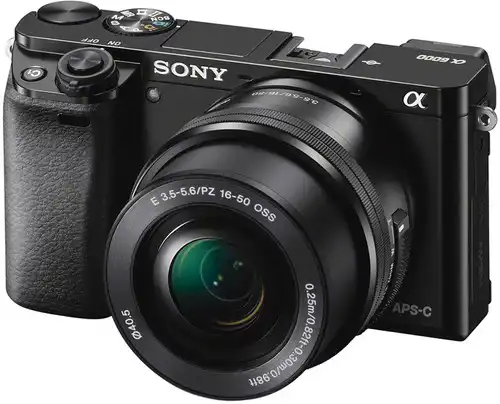
When the Sony Alpha a6000 APS-C format mirrorless camera was released in 2014, it was a pretty big deal.
Being mirrorless and crop format, Sony took advantage of that to create a very small and lightweight interchangeable lens camera. Here we are, eight years later, and it’s still a more than worthy camera to discuss.
In this guide, we’ll take a look at this camera, where you can buy quality used a6000s , and a few options for the best zoom lens for Sony a6000.
Table of Contents:
Sony alpha a6000 camera overview.
- Sony E-mount Lenses vs Sony FE-mount Lenses
Ultra Wide Best Zoom Lens for Sony a6000
Normal range best zoom lens for sony a6000, telephoto best zoom lens for sony a6000, final thoughts.
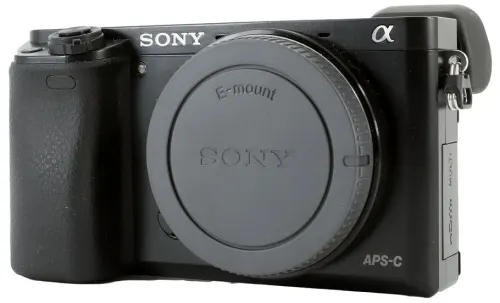
The surprisingly small size and low weight for a full-featured camera were two of the primary features of the a6000 when it came out. But, Sony also used an image sensor in the Sony Alpha a6000 that still holds up to current sensors: a 24.3mp APS-C sensor with an ISO sensitivity of 100 to ISO 25600.
It also has 179 AF points, a built-in flash and external flash shoe, a tilting rear view screen, an eye-level OLED viewfinder, 11 fps burst speed for still photography, and can record video in Full HD 1080/60p resolution. Really, the lack of 4K video is one of the few things separating this camera from more current offerings.
Sold as body only or with what entry-level photographers would use as the best zoom lens for Sony a6000, the Sony E 18-55mm f/3.5-5.6 OSS normal range zoom lens, this outfit was scarcely larger than some premium point-and shoot-cameras with smaller sensors. It can be considered an entry-level camera or an intermediate enthusiast-level camera.
Throughout the article, I’ll link to the online platform MPB for the various examples of the best zoom lens for Sony a6000.
MPB is one of the best places for buying cameras and lenses since they specialize in high-quality and warrantied used photography equipment that can save us lots of money. Many of the photo illustrations of lenses in this article are provided by MPB.
Sony E-mount lenses vs Sony FE-mount Lenses
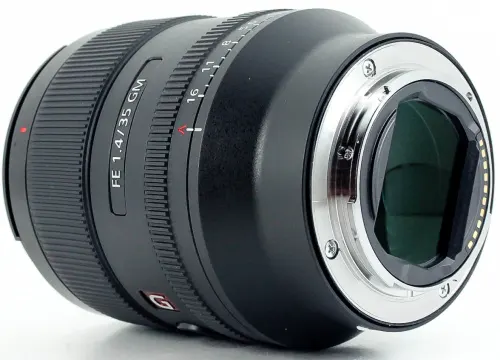
When searching for the best zoom lens for Sony a6000 cameras, you’ll run across two lens mount designations for Sony mirrorless cameras: Sony E-mount lenses and Sony FE-mount lenses. What’s the difference, and which mount should you get?
Sony FE-mount and E-mount are identical electronically and mechanically. The main difference is that FE lenses are designed to cover Full Frame format while E-mount lenses cover APS-C format.
You can use FE and E on both formats of cameras, but mounting an E lens on a Full Frame Sony triggers the camera into recording on an APS-C-sized portion of the full sensor. Conversely, an FE lens on a crop sensor body covers the format fully, but the crop factor means that the lens behaves like a longer lens equivalent.
Crop factor is still confusing even to long-time photography enthusiasts, so here is a good refresher article on the subject . The best zoom lens for Sony a6000 can be either FE or E mount, though much depends on your specific needs.
Learn More:
- Which Sony Camera for Photography Is Right for You?
- What Is a Prime Lens?
- What is the Best Used Sony Camera?
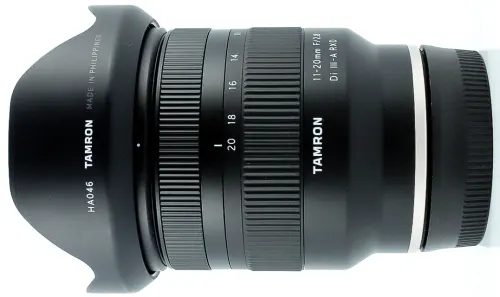
Photographers that want an ultra-wide-angle lens range will love the Tamron 11-20mm f/2.8 Di III-A RXD zoom lens as one option for the best zoom lens for Sony a6000 cameras. What makes it special is the extreme wide-angle focal length with very little distortion. The widest coverage is a full 105 degrees.
Another great feature of this lens is the fast maximum aperture. Many lenses of this type have a slower maximum aperture, and also that aperture gets slower at the long end. The f-stop of f/2.8 is excellent for lower light levels or for stopping down to a “sweet spot” aperture that is still rather fast - a plus for night sky photography or architecture and real estate.
It focuses very close, making available some interesting perspectives of ultra-wide, close focus, and large aperture. Other features are a silent and fast AF motor, a 67mm front filter diameter, and a flower-shaped lens hood for flare reduction and front element protection.
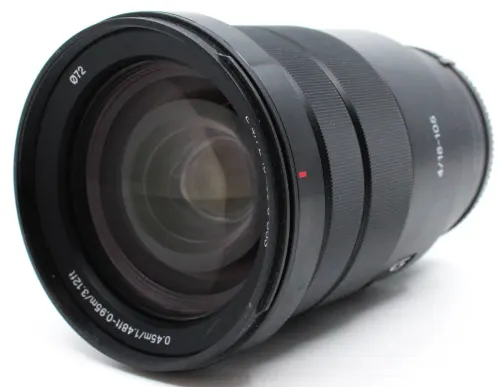
For using just one lens or as one of a set of lenses that covers from wide to telephoto, the best zoom lens for Sony a6000 cameras just might be the Sony E PZ 18-105mm f/4 G OSS normal range zoom lens.
What’s nice about this lens is that it balances perfectly with the Sony Alpha APS-C cameras. The long end of the zoom range is nearly double the telephoto of the kit lens that originally came with the camera when packaged as an entry-level kit.
A few other really useful features of this best zoom lens for Sony a6000 cameras are the power zoom function (which is little noisy for video but not too bad), a maximum aperture that remains constant at f/4.0, Optical SteadyShot image stabilization, minimum focus of 1 ½ ft, 72mm front filter size, and a minimum aperture of f/22 for extended depth of field .
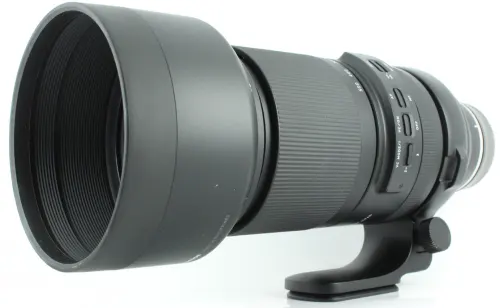
Some photographers feel that if you need telephoto, you need a lot of telephoto. For those photographers, and for anyone wanting a full range of focal lengths in just a few lenses, the best zoom lens for Sony a6000 cameras could be the Tamron 150-500mm f/5-6.7 Di III VC VXD ultra-telephoto zoom lens.
Though somewhat large and heavy, this is a superb example of how good and how compact modern lenses can be. When factoring in the 1.5X crop factor of the Sony a6000 sensor, this lens acts on an APS-C camera what a 750mm lens would be on Full Frame. Even when used on Full Frame cameras, this lens packs a lot of telephoto punch.
Some of the great features of this fine lens are a moderate maximum aperture, removable tripod mount, compact size, VC image stabilizer, under 2 ft close focus, 82mm filter size, and a swift, mostly silent focusing motor.

Photo by ArLawKa AungTun via iStock
My final thoughts are that it’s pretty obvious to any photographer that gets serious about their art and craft that there is no one best lens for any camera or situation. Some prime lenses could also be included when talking about essential lenses. But we can narrow down to a few good options for the best zoom lens for Sony a6000 cameras.
Another final thought is that you can save some serious amounts of money by purchasing pre-owned gear. And when you work with an online platform like MPB, you can do so while still guaranteeing that you get a fine camera or lens.
Better still, at MPB, you get a seven-day return policy and a six-month warranty on most purchases!
Any or all of the great lenses discussed above could find their way into your camera bag, and I’m sure you’ll be pleased with them. Get shopping today by heading over to MPB .
- How to Save Money when Buying Photography Gear
- 4 Reasons Why You Need a Flash Gun
- Sony a7s Review
We Recommend
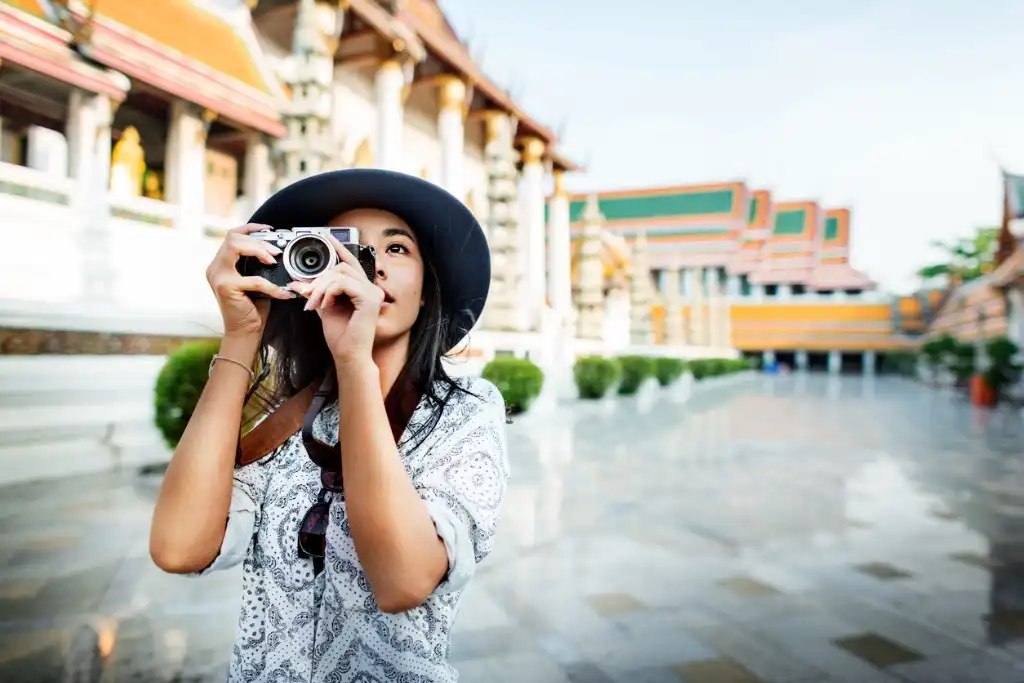
- Maternity Photography
- Portrait Photography Master Course
7 Best Lenses For The Sony a6000 (…and 2 to avoid)
The a6000 is Sony’s entry level mirrorless camera and a great way for many to jump into the world of photography, but if you choose the wrong lens then you might be disappointed.
My pick as the best lens for the Sony a6000 is the Sigma 18-50mm f/2.8 DC DN Contemporary Lens because of its combination of versatility, image quality and wide f/1.8 aperture make it unique and an exceptional choice for crop sensor Sony users.
But keep reading for my full breakdown of that lens and more options that might be a better fit for your specific needs.
Photography Goals uses affiliate links. When you buy products through the links on our site, we may earn a commission.
1. Sigma 18-50mm f/2.8 DC DN | C
The Sigma 18-50mm f/2.8 DC DN | C lens is a great choice for Sony a6000 users due to its versatile focal length range, constant aperture, excellent optical performance, compactness, and affordability.
This lens is a standout and one that I would recommend for all of the Sony crop sensor cameras. It’s basically a crop sensor version of the 24-70mm f/2.8 lens that can be found in the bag of many professionals.
The 18-50mm focal range on a crop sensor camera gives you the full frame field of view of 27-75mm so you’re getting a very versatile and useful focal length.
Sigma 18-50mm f/2.8 DC DN | C Specs
- Lens Mount: Sony E
- Format: APS-C
- Aperture Range: f/2.8 – f/22
- Minimum Focus Distance: 12.1-30cm / 4.8-11.9in.
- Filter Size: 55mm
- Lens Construction: 13 elements in 10 groups
- Diaphragm Blades: 7
- Stabilization: No
- Dimensions: 65.4 x74.5mm / 2.6in.×2.9in.
- Weight: 290g / 10.2oz
The constant f/2.8 aperture allows for excellent low light performance and a shallow depth of field, which is great for creating bokeh (background blur) in portraits and other subjects.
This also opens up more potential for shooting in low light and is one of the major upgrades compared to some of the kit lenses that Sony packages with this camera.
But unlike those kit lenses, this is going to give you excellent optical quality and sharpness. You can produce everything from wall worthy landscape photos to professional level portraits.
Overall, you’re getting a very high quality lens at an affordable price that can do everything except long telephoto shots.
But if you want an even bigger focal range, then check out this next lens…
2. Tamron 17-70mm F/2.8 Di III-A VC RXD
This lens covers a big zoom range and still delivers excellent image quality.
With a 17-70mm range (25.5-105mm full frame equivalent), it covers a wide to short-telephoto perspective meaning you can shoot just about anything with this lens.
In fact these top two picks could really be 1a and 1b because it really depends on whether you want the extra reach of the Tamron or the smaller and lighter Sigma, so I’ve done a little bit of comparison below.
Tamron 17-70mm F/2.8 Specs
- Minimum Focus Distance: 19-39cm / 7.5-15.4in.
- Filter Size: 67mm
- Lens Construction: 16 elements in 12 groups
- Diaphragm Blades: 9
- Stabilization: Yes
- Weight: 525g / 18.5 oz
Like the Sigma, it has a constant f/2.8 aperture which is great for low light shooting.
It also has built in image stabilization, which is helpful because the a6000 does not have in-body image stabilization (IBIS). This will let you shoot stationary subjects at slower shutter speeds than you could normally do handheld.
Two big reasons I put this lens in the runner-up position rather than the top spot was the size and cost.
At 1.2lbs/525g it’s almost double the weight of the Sigma which comes in at 10.2oz/290g. The Tamron is also about 10mm wider and 55mm longer. That’s enough of a difference that you’ll feel it on a long hike.
The Tamron lens also costs about $150 more than the Sigma.
In terms of image quality, you would be hard pressed to notice any difference on casual viewing, but my job here is to pixel peep so you don’t have to and I would give a very slight edge to the Sigma in terms of sharpness, even though both deliver excellent image quality.
Note For Video Shooters : If you want to shoot a lot of video, then go with this Tamron lens. In addition to the image stabilization (which matters a lot when shooting handheld video), the lens is parfocal (it doesn’t lose focus while zooming in and out) and has almost 0 focus breathing.
3. Sony FE 50mm f/1.8
Affordable and fast lens with great optical quality.
The combination of a fast aperture, effective focal length, compact design, and affordability makes the 50mm f/1.8 an attractive option for both beginners and experienced photographers looking for a high-quality yet budget-friendly lens.
I think every photographer should have a ‘nifty fifty’ in their bag and it’s a great lens for someone getting started who is budget conscious.
I started my portrait photography business with a crop sensor camera and a 50mm f/1.8 lens.
Sony FE 50mm f/1.8 Specs
- Format: Full Frame
- Aperture Range: f/1.8 – f/22
- Minimum Focus Distance: 45 cm. / 17.76 in
- Filter Size: 49mm
- Lens Construction: 6 elements in 5 groups
- Dimensions: 68.6 x 59.5mm / 2.75in.×2.375in.
- Weight: 186g / 6.6 oz
On the a6000’s APS-C sensor, it offers an equivalent focal length of 75mm, making it ideal for portraits and other applications where a slightly longer lens is beneficial.
The f/1.8 maximum aperture is excellent for low-light photography and allows for a shallow depth of field, creating a pleasing bokeh effect in the background. This is a great way to get that “pro look” without spending much on a lens.
Most primes are excellent optically and despite the low price tag, this is no exception. 50mm lenses are easier for manufacturers to make well and the result is a lens that is very sharp across the frame.
It is notably small and light, making it an easy lens to carry around, particularly when paired with the compact a6000. Despite the small size it has a decent basic build quality.
This lens provides smooth and relatively quiet autofocus performance which makes it a solid choice for video as well. But there’s no stabilization built into the lens.
Overall, this is an amazing option and one of the first lenses an aspiring photographer should pick up.
But if you want something that is a bit longer and more geared towards shooting portraits, then this next lens might be right for you…
4. Sigma 56mm f/1.4 DC DN | C
This lens has a portrait-friendly focal length, wide aperture, high optical quality, and compact form that are great for photographing people.
The 56mm focal length might seem like an odd choice but it was specifically chosen to provide an equivalent field of view of approximately 84mm in full-frame terms on a crop sensor camera like the a6000.
This makes it an excellent choice for portrait photography, offering a flattering perspective and natural-looking compression.
This is coupled with a wide maximum aperture of f/1.4 allows for exceptional low-light performance and offers great control over depth of field, facilitating a pleasing bokeh effect (background blur), ideal for portraits and subject isolation.
Sigma 56mm f/1.4 DC DN | C Specs
- Aperture Range: f/1.8 – f/16
- Minimum Focus Distance: 50cm / 19.7in.
- Lens Construction: 10 elements in 6 groups
- Dimensions: 66.5mm × 59.5mm / 2.6in. × 2.3in.
- Weight: 280g / 9.9 oz.
The design of the lens elements and the rounded diaphragm blades contribute to a smooth and aesthetically pleasing bokeh that looks great when shooting shallow depth of field photos.
Sigma’s Contemporary line is known for its advanced optical design, minimizing aberrations and flare while providing sharp, clear images. This ensures high-quality imagery across the entire frame.
The lens is relatively small and light, aligning well with the compact nature of the Sony a6000, making the overall package easy to handle and ideal for travel or day-to-day photography.
It also offers good build quality with a design that is resistant to dust and splashes, enhancing its durability for various shooting environments.
5. Sony E 16 mm F2.8
A small, inexpensive and lightweight prime lens that is perfect for getting started with landscape photography.
I like this lens for shooting landscapes because it will give you decent image quality at a very low price and is small and lightweight to compliment the a6000.
This 16mm lens will give you the full frame equivalent of 24mm which is a useful focal length for shooting landscapes.
The image quality is good for this price. It can be a bit on the softer side when shooting wide open, especially around the edges of the frame. But once you stop down to f/5.6 or f/8 its pretty sharp.
If you’re using this primarily to shoot landscapes on a tripod, then you’ll want to use it at those apertures anyway. For photography that
Alternative Option : If you’re looking for a wide angle prime but 16mm isn’t cutting it, then check out this Samyang 12mm f/2.0 E lens .
If you want a little more versatility and better image quality then try this wide angle zoom that’s up next…
6. Sony E PZ 10-20mm f/4 G
This lens delivers the perfect focal length for shooting wide angle landscapes on your a6000.
The Sony E PZ 10-20mm f/4 G is a great lens for the Sony a6000, particularly for users looking to explore the realms of wide-angle photography.
The 10-20mm focal range on an APS-C sensor like the a6000’s offers an ultra-wide to wide-angle field of view, equivalent to approximately 15-30mm in full-frame terms. This is ideal for landscapes, architecture, interior photography, and creative wide-angle shots.
The f/4 constant aperture provides consistent exposure across the entire zoom range. While not as wide as some other lenses here, it still allows for a decent amount of light and if you’re shooting landscapes then you’ll probably be shooting between f/8 and f/16 anyway.
Sony E PZ 10-20mm f/4 G Specs
- Aperture Range: f/4 – f/22
- Minimum Focus Distance: 13-17cm / 5.16-6.7in.
- Filter Size: 62mm
- Lens Construction: 11 elements in 8 groups
- Dimensions: 69.8mm × 55mm / 2.75in. × 2.25in.
- Weight: 178g / 6.8 oz.
I was really happy with the optical performance as well. It produced good color and contrast and was very sharp all across the frame.
For adventure landscape shooters, this lens is compact and lightweight which makes it great for hiking out to remote landscape shooting locations. But that doesn’t take away from its build quality and weather sealing.
A unique feature that’s popular among video shooters is the power zoom. This allows for smooth zooming providing a cinematic quality to zooming movements.
7. Tamron 70-180mm f/2.8 Di III VC VXD G2
A full frame lens that works perfect with the a6000, this telephoto is perfect for sports and wildlife.
The Tamron 70-180mm f/2.8 Di III VXD is a telephoto zoom lens that’s part of Tamron’s lineup designed for full-frame Sony E-mount cameras, but it’s also compatible with APS-C models like the Sony a6000. This lens is notable for its relatively compact size, fast aperture, and high-quality optics.
The 70-180mm range provides a telephoto reach, which on the Sony a6000’s APS-C sensor, translates to an effective 105-270mm. This is ideal for shooting subjects like sports and wildlife, and portrait photography.
Tamron 70-180mm f/2.8 Di III VXD Specs
- Minimum Focus Distance: 27-85cm / 10.6-33.5in.
- Lens Construction: 19 elements in 14 groups
- Dimensions: 81mm × 149mm / 3.2in. × 5.9in.
- Weight: 810g / 26.6 oz.
The constant f/2.8 makes shooting fast moving subjects easier because you can use faster shutter speeds even when you’re not shooting in bright daylight.
Compared to other f/2.8 telephoto lenses this Tamron lens is relatively compact and lightweight, making it more manageable for handheld shooting and travel.
While the optical quality isn’t quite as good as the pro-level 70-200mm GM lens, its still exceptional in its own right. You have to zoom in significantly to see any difference and this lens is much much less expensive.
One feature that was a pleasant surprise was the close focusing capability, which will let you explore macro photography as well.
Upgrade Option : If you want the best possible image quality plus an extra 20mm at the long end (and are willing to pay a big premium for it) then check out the Sony FE 70-200mm f/2.8 GM OSS II .
2 Lenses You Should Avoid For Your a6000
These aren’t necessarily bad lenses, but I listed them here because they seem to be pushed a lot by retailers and you can do a lot better for a similar cost with the options above.
Sony 18-135 f/3.5-5.6 OSS
This is the kit lens that usually comes with the a6000. It’s not a terrible lens, but there are better options for you at around the same price.
The problem here is that Not the best optics but is very versatile when I want to travel with only one lens.
Sony E 70-350mm f/4.5-6.3 G OSS
Lenses with huge zoom ranges and a variable aperture in this range are usually less expensive but you’ll be compromising image quality.
And that’s the case with this lens. It’s great for snapshots or traveling if you only want to take one “do it all” lens. But you’re just not going to get the image quality or the ability to use wider apertures to control depth of field in your photos.
So if you just want a less expensive lens, then its an ok choice, but if you want to get the most out of your camera, then I would recommend saving up for the lenses on this list.
landscape Portrait Macro
equipment reviews Photo editing
2024 © Photography goals

Best Lenses for the Sony a6600, a6500, a6400, a6300, and a6000
The a6600 , a6500 , a6400 , a6300 , and a6000 are great mid-range mirrorless options in the Sony lineup. These APS-C (crop sensor) cameras are compact but powerful and good for people who want to take excellent photos but don’t want to haul around a heavy DSLR or full frame mirrorless camera.
Let’s take a look at the best lenses for the a6600 , a6500 , a6400 , a6300 , and a6000 cameras. We break up this list into 2 main categories: zoom and prime lenses, each of which has their own benefits. Zoom lenses give you the versatility of multiple focal lengths in one package. Prime lenses have a fixed focal length but are known for being exceptionally sharp and also can be more portable.

Intro to the a6000 Series
If you don’t already own an a6000 series camera, or are thinking about upgrading, here is a quick primer:
Though this series came out before the a7 series did, people think of the a6000 series as a “younger sibling” of Sony’s flagship full frame mirrorless collection. They sport a small 23.5 × 15.6mm sensor size and, thus, are smaller all around. They are simpler than the a7 series but still pack in a lot of useful features, including ultra fast autofocus.
• Released in 2014. • Maxes out at Full HD for video. • No ports for external mics or headphones. • No touch features on LCD. • 360-shot battery life.
• Released in 2016. • Shoots UHD 4K video and 120 FPS slow motion. • 1/8″ microphone port. • No touch features on LCD. • 400-shot battery life.
• Released in 2016. • Shoots UHD 4K video and 120 FPS slow motion. • 1/8″ microphone port. • Touchscreen LCD • Built-in stabilization. • 350-shot battery life.
• Released in 2019. • Shoots unlimited UHD 4K video and 120 FPS slow motion. • 1/8″ microphone port. • Touchscreen LCD with larger tilting range. • 410-shot battery life.
• Released in 2019 • Shoots unlimited UHD 4K video and 120 FPS slow motion. • 1/8″ microphone and headphone ports. • Touchscreen LCD with larger tilting range. • Built-in stabilization. • 810-shot battery life.
Choosing between the a6400 and a6500 looks tricky at first. Their numerical title order is out of step with their actual release date – the a6500 is older than the a6400. The a6400 is benefited from newer technology, with a 180° flipping screen, fast AF, and superb tracking – not to mention the long-awaited “limitless” video recording capabilities. It also sports a deeper grip. But the a6500 still boasts a wider ISO range, larger buffer for continuous shooting in RAW, and 5-axis in-body stabilization. Both feature 4K shooting, 3.5mm microphone ports, and slow motion capability. The newest (as of this writing) is the a6600. It has the best features of both the a6400 and a6500 but also offers a headphone jack and much-improved battery life.
7 Recommended Zoom Lenses for a6000 Series E Mount Cameras
All of the cameras in the a6000 line use the same system. They have the same size sensor and mount type. These cameras work with all Sony E mount lenses and can work with lenses of other mount types with the use of an adapter.
Photographers who are switching from a DSLR to the Sony system (or those who have a specific lens they love) often use adapters so their E mount cameras can work with almost any lens. With a good adapter, lens options aren’t a limiting factor with these mirrorless cameras.
Each of these cameras are sold as standalone bodies or as part of a kit with Sony’s 16-50mm f/3.5-5.6 lens . The 16-50mm kit lens covers a versatile focal range, but other lenses can offer different perspectives, wider apertures, better bokeh, and faster autofocus. If you want to level up your photography, you may want to go beyond the kit zoom lens.

Sony 10-18mm f/4 OSS
The Sony 10-18mm f/4 is one of the best E mount landscape lenses for Sony a6000-series users – especially for those who like to shoot ultra wide. The 10-18mm f/4 is tack-sharp in the center with only minor softening at the sides of the frame. Distortion is minimal for a lens this wide.
The built-in Optical SteadyShot image stabilization system provides a 4-stop shutter speed advantage, making it significantly easier to achieve crisp, blur-free images and video. The internal focusing system allows for a rapid AF response time and extra-low dispersion glass prevents chromatic aberration and increases contrast. The Sony 10-18mm f/4 is super solid and well built, which is good considering that it is most likely to be used by landscape photographers who are out in the elements. With a minimum focusing distance of under a foot, you can also create exaggerated perspectives when shooting up close.
• Sharp in the center, softer in the edges. • Relatively limited focal range. • Has image stabilization. • Has a constant maximum aperture, so you get f/4 even at the longer end of the range if you need it. • Minimum focusing distance lets you get close to your subject. • Great for landscapes, architecture, cityscapes, interiors.

Sony 16-70mm f/4 ZA OSS
The Sony 16-70mm f/4 ZA OSS is among the best E mount zoom lenses for the Sony a6000, a6300, a6400, and a6500 . This lens has a wide focal range, allowing it to capture all types of subjects. Want to take closeup portraits as well as wide landscape shots? This lens will let you do it. The 16-70mm f/4 lens has Carl Zeiss anti-reflective coatings to cut down on glare and ghosting. The Optical SteadyShot image stabilization minimizes the appearance of camera shake on the long end of the focal range or when shooting in low light.
This lens does have a small amount of chromatic aberration in the form of purple fringing near the edges of the frame but it is fairly minor and can be managed by stopping down your aperture. The 16-70mm f/4 has some barrel distortion typical of wide angle lenses but it is not severe. If you want one super versatile lens to take on your travels or use while walking around town, this is an excellent choice.
• Perfect “walking around” range. • Has image stabilization. • Constant maximum aperture, so you get f/4 even at the longer end of the range if you need it. • Exhibits some barrel distortion. • Great for events, candids, and street photography.

Sony PZ 18-105mm f/4 G OSS
Sony’s E mount 18-105mm f/4 G OSS lens is a well-priced option for photographers wanting an upgrade from the kit lens in terms of quality and focal range. This solidly-built, metal-barreled lens has a quiet motor and smoothly-turning focus rings which make shooting both photos and video a breeze. Handycam technology is used, along with a floating axis design, to provide smooth, quiet zooming performance that is also well-suited to movie recording. The dedicated focusing ring allows for direct manipulation of focus along with separate power zoom and manual focus controls for greater precision.
This lens produces images that are very sharp at the center, especially when shot between f/4 and f/5.6. Sharpness near the edge of the frame deteriorates at apertures from f/18 to f/22 but it is not enough to be a problem for most people. This is a versatile lens that performs well in a variety of conditions and is a great option for video.
• Handycam technology for quiet performance. • Perfect “walking around” range. • Solidly built with a metal barrel. • Has image stabilization. • Sharpness declines at the extreme ends of the range. • Great for videography, travel, events.

Sony 18-135mm f/3.5-5.6 OSS
The Sony 18-135mm f/3.5-5.6 OSS lens is an incredibly versatile lens for the beginner photographer. With the crop sensor, the 18mm wide end is solidly wide without going into ultra wide territory. The 135mm telephoto end will also provide a fair amount of reach for when you want to zoom in.
The variable maximum aperture is probably not fast enough for demanding photographers, but the image stabilization will help keep your photos sharp even when you need to slow your shutter speed a little bit to compensate in low light. Variable maximum apertures means that on the 18mm end of the range, you can open your aperture as wide as f/3.5. But on the telephoto end, your maximum is limited to only as wide as f/5.6. However, for a lens of this range, it does have a relatively close 1.5′ minimum focusing distance, which is nice in smaller spaces. This is a great and affordable travel lens.
• Expansive focal range. • Variable maximum aperture reduces low light performance at telephoto end. • Affordable. • Has image stabilization. • Great for beginners, travel, events.

Sony 18-200mm f/3.5-6.3 OSS LE
This lens is a lot like the lens above but with a little bit more reach on the telephoto end (but that includes a sacrifice in maximum aperture at that range). The 18-200mm f/3.5-6.3 OSS LE is a good option for photographers looking for a high quality wide-to-long-range zoom. While this lens is known for taking very sharp images, especially at the long end, its biggest asset is probably its wide focal range, which allows for one lens to be used in a variety of settings – and even for video! Its quiet, linear motor is inherited from higher-end Sony camcorders.
Because of its variable aperture range of f/3.5-6.3, it is not as adept as some of the others in low light situations. But if you are shooting in well-lit areas, it is more than capable. This lens produces no noticeable fringing throughout most of its focal length and only a tiny amount at both 18mm and 200mm.
As expected with a lens with this wide of a focal range, some barrel distortion will occur – especially near 18mm. Post-processing in Lightroom or Photoshop may correct these effects. The massive focal range makes this one of the best travel lenses for Sony E mount cameras.
• Expansive focal range. • Variable maximum aperture reduces low light performance at telephoto end. • Has image stabilization. • Linear motor adopted from higher-end camcorder lenses. • Great for beginners, travel, events, wildlife, sports, and video.

Sony 55-210mm f/4.5-6.3 OSS
The Sony 55-210mm f/4.5-6.3 lens is a great sports lens for the Sony a6000, a6300, a6400, and a6500. It’s also a superb choice for safari because you get all this range for under 1 pound. This lens will zoom in on your subjects from far enough away that you would never miss the action while also being just wide enough to capture environmental shots. This lens doesn’t have significant distortion but it does exhibit a fairly large amount of sun flare when the sun is near the frame – a bonus to some, depending on your style.
The Optical SteadyShot image stabilization minimizes the appearance of camera shake by up to 4 stops and does an excellent job of preventing image blur. While this lens may not be able to handle low light as well as some others, when it comes to well-lit sports and wildlife shooting it does a good job, especially for the price.
• Mid-to-telephoto focal range. • Variable maximum aperture reduces low light performance at telephoto end. • Has image stabilization. • No distortion but tendency to flare. • Great for birding, outdoor sports, and safari.

Sony FE 70-300mm f/4.5-5.6 G OSS
Providing a super telephoto range in a portable form factor is rare. The Sony FE 70-200mm is a sports-and-wildlife-dedicated lens that is also under 2 lbs. It features dust and moisture resistance for use outdoors and has a convenient Focus Hold button for critical shots. Its focal range equivalent on a crop sensor is 105-450mm, which is phenomenal reach. A special Focus Range Limiter lets you constrain the usable focusing range to either 9.8′ to infinity or the full range of 3′ to infinity for fast focusing during sports and wildlife shooting.
Equipped with Optical SteadyShot image stabilization, this lens can perform admirably when shooting with slower shutter speeds but do note that it has a variable maximum aperture which will sacrifice your wide aperture options at the long end of the range. It’s sharp throughout but is a hair sharper at the wide end of the range. Stopping down your aperture will improve your results – typical of many zooms in this range. Do note that this lens does not have any panning or tripod-sensing modes, which might be sorely missed in a lens of this type meant for sports and wildlife.
• Incredible telephoto range in a portable package. • Dust and moisture resistant. • Variable maximum aperture reduces low light performance at telephoto end. • Has image stabilization. • Sharp but best stopped-down. • Great for birding, outdoor sports, and safari.
7 Recommended Prime Lenses for a6000 Series E Mount Cameras
Prime lenses are favored for their fast apertures, crisp detail, and relatively small size. While zooms are more versatile in situations where you need 1 lens to perform for a bunch of different subjects, primes are great for getting to know and love a certain focal length since each prime supports only 1 angle of view. You have to “zoom with your feet”, as they say. Primes are often easy to handle, great in low light, and ideal for beginners and pros alike.

Zeiss Touit 12mm f/2.8
Zeiss is known for making high quality lenses that take crystal-clear photos and the Touit 12mm f/2.8 is no exception. This E mount lens is designed for landscape photographers who love shooting with ultra wide prime lenses – and it excels at its job. While this lens does produce some moderate barrel distortion, this can be almost entirely corrected in post processing.
Ghosting and sun flare are very minimal with this lens, although its bokeh leaves something to be desired. If you’re looking for a wide angle lens with sharp optics and a high build quality, the Zeiss Touit 12mm f/2.8 is a great option. Touit is pronounced like “do it” and is the name of a small and agile parrot. This lens represents agility and mobility. It is designed to have a long working life with its rigid metal bayonet mount and rubberized control ring. It is designed specifically for crop sensor cameras like the a6000/a6300/a6400/a6500.
• Reliable Zeiss construction. • Exhibits some barrel distortion and unremarkable bokeh. • Very little ghosting or flare. • Great for street photography, landscapes, and cityscapes.

Sigma 16mm f/1.4 DC DN Contemporary
From Sigma’s Contemporary line of high-performance lenses, this 16mm lens offers ultra fast, wide angle capabilities to E mount shooters. With the very wide f/1.4 aperture, photographers can get smooth, beautiful out of focus backgrounds. Sigma’s Contemporary line is known for having high quality optics in lightweight and affordable packages. It’s equipped with a stepping motor which provides, fast, smooth and quiet autofocus for shooting video.
This lens is well suited for landscapes, cityscapes, and interiors. It’s also optically designed to minimize sagittal coma flare, which means this lens a very good choice for night sky shooting. It is built with a special emphasis on quiet performance and corrected optical distortion.
• Low distortion. • Stepping motor suitable for video. • Ultra wide field of view with fast maximum aperture. • Great for landscapes, cityscapes, architecture, interiors, astrophotography.

Sony 20mm f/2.8
One of the primary reasons people purchase mirrorless cameras like the a6000 series is because of their small size – which is largely negated when you put a heavy lens on the front. The Sony 20mm f/2.8 is a “pancake” style lens that represents a solid upgrade from the kit lens in a tiny, flat package.
This lens produces images that are fairly sharp in the center at f/2.8 and very sharp when you stop down to f/5.6. The 20mm pancake weighs just 2.5 ounces and is under an inch thick, making it a really good choice for people whose primary concern is weight. Photographers who want their mirrorless camera to feel like a point and shoot will love this lens. It’s equipped with a stepping motor which provides, fast, smooth and quiet autofocus for shooting video. It is designed for crop sensor format which gives you an equivalent field of view of 30mm – a great length for street photography.
• Sharp when stopped down. • Stepping motor suitable for video. • Unique wide-normal field of view. • Ultra portable. • Great for street photography, travel, events, candids.

Sony 24mm f/1.8 Carl Zeiss Sonnar
If you are upgrading from the kit lens and only the best will do, the Sony 24mm f/1.8 Carl Zeiss Sonnar lens is an excellent choice . Sure, you’ll be losing some flexibility by switching from a zoom to a prime lens, but you will be rewarded with sharper images and better low light performance. The 24mm focal length is wide enough for landscapes but not so wide as to be unusable for portraits.
This lens has strong light falloff at f/1.8 which can be mitigated by enabling the camera’s “shading compensation” feature. This lens’ minor pincushion distortion can be controlled with in-camera distortion compensation. This lens produces good bokeh, especially for being so wide. The autofocus system operates with a linear motor and a stepping motor that is quiet enough for video shooting.
• Very sharp. • Exhibits some pincushion distortion. • High amount of bokeh for its angle of view. • Stepping motor suitable for video. • Great for landscapes, group portraits , street photography.

Sigma 30mm f/1.4 DC DN Contemporary
From Sigma’s Contemporary line of high-performance lenses, this 30mm lens offers an ultra fast aperture and a unique wide-normal angle of view. Sigma’s Contemporary line is known for having high quality optics in lightweight and affordable packages. It’s equipped with a stepping motor which provides, fast, smooth and quiet autofocus for shooting video.
Equipped with a high-refractive index element, this lens produces little-to-no spherical aberrations and distortion for increased clarity and definition. It has a minimum focusing distance of under a foot, which is great for closeup work. It is ranked in the top 5 of primes for crop sensor E mount shooters according to DXOMARK.
• Sharp with very few aberrations. • Unique wide-normal field of view. • Stepping motor suitable for video. • Scores highly against other lenses in its class. • Great for group portraits, street photography, candids.

Sony 50mm f/1.8 OSS
Every brand has their own version of the affectionately-called “nifty fifty” – a fast, though inexpensive, 50mm lens that is a great entry point prime for many photographers. Sony’s version offers good low light performance and bokeh. This lens is very sharp around f/4 and, for the price, produces very good bokeh.
The Sony 50mm f/1.8 OSS is equipped with both a linear motor and stepping motor for exceptionally quiet and continuous AF, making it suitable for video projects. It offers Optical Image Stabilization, which is uncommon in a lens of this class, and also sports a Direct Manual Focus feature to give you fine manual focus control even after the AF has locked onto the subject.
• High quality and affordable. • Stepping motor suitable for video. • Has image stabilization. • Great for street photography, candids, beginners.

Sony FE 90mm f/2.8 G OSS Macro
While a bit big for an a6000 series camera, the Sony FE 90mm is worthy of any E mount list . It’s very popular and scores excellently on DXOMARK. Offering a 1:1 magnification ratio and a fast f/2.8 maximum aperture, this lens works as well for portraits as it does for macro work. It features a focus hold button that, when pressed, keeps the lens locked to that focusing distance. This makes delicate macro shooting and wildlife tracking easier.
This lens is equipped with a linear motor which provides, fast, smooth and quiet autofocus for shooting video. It also offers Optical Image Stabilization to minimizes the appearance of camera shake when shooting at slower shutter speeds. The 90mm focal length is long enough to give you distance between you and your macro subject (you often don’t want to be too close to insects and other small living creatures) while also being long enough for some wildlife subjects. The bokeh potential is strong with this lens, a great feature for portraits.
• Scores excellently for its class. • 1:1 magnification ratio. • Relatively large and heavy. • Has image stabilization. • Great for macro work, portraits, some wildlife, some indoor sports.

Tips for Choosing a Sony Lens
Sony E mount lens offerings have exploded in the last few years. So much so that it’s getting more and more difficult to narrow down the best ones – especially that combine quality with versatility and price without being too large or complex. More brands are coming on board with E mount versions of their lenses, particular for cinema. The future of E mount looks very bright. Here are some general tips to supplement the recommendations above to help you find the perfect lens:
- Gold Master Series: If you see “GM” in the lens title, that means it’s part of Sony’s G Master series. These are designed for full frame cameras, like the a7 series, but mount perfectly well to a6000 series cameras. They support high resolution sensors and feature beautiful bokeh, superior handling, and leading technology for the fastest, most precise autofocus. They are also expensive.
- Gold Series: A predecessor to G Master. High-grade lenses with fast maximum apertures.
- Optical SteadyShot: When you see “OSS” in a lens title, you’ll know it comes with image stabilization.
- Power Zoom: Somtimes you’ll see “PZ” in a Sony lens title. On these lenses, there is the option to activate zoom using a rocker switch instead of just zooming by hand with a control ring. This can provide much smoother results when shooting video. Its technology is borrowed from Sony’s Handycam line.
- Special Note on FE: You will see lens titles with “FE” in them and others that just say “E Mount”. This is confusing because FE looks like a mount type – it’s not. “FE” designates that it’s built for full frame sensors. Fortunately, Sony’s full frame mirrorless cameras – like the a7 III or a7R IV – are E mount just as the APS-C mirrorless cameras (a6500, a6300) are. All FE lenses are compatible with both types of camera. However, not all non-FE E mount lenses are compatible with full frame – some are built specifically for crop frame. But the a7 series cameras all have a crop frame mode, so if you’re ever stuck using a crop frame lens on one, just switch into that mode!
Alexandria Huff
Alexandria Huff's photography and lighting tutorials can be found on 500px and her blog. See her lighting tutorials here. She is a Marketing Associate Manager at BorrowLenses.com. She learned about lighting and teaching while modeling for photographers such as Joe McNally and has since gone on to teach lighting workshops of her own in San Francisco. Before focusing on studio portraiture, she shot motorsports for X-Games, World Rally Cross, and Formula Drift. See her chiaroscuro-style painterly portraits on her website.
69 Comments
It would be just fine. Perhaps a bit bigger/heavier than you might want, but otherwise a great choice.
Brenda Trinidad
Hi, probably a silly thing but still learning here… would it be a bad thing or just wrong to use the Sony 16-35mm Vario-Tessar T FE F4 ZA OSS E-Mount Lens with the a6300 body?
Great article! I am starting on getting into taking pics of my golf rounds and buddies. I have a Sony a6100 with the stock kit lenses. The 50-210 works well but sometimes too much. The nice part about shooting golf with friends is you can get up close for stills and action shots. After reading through, would you more recommend the Vario 16-70 or the Sony 18-135? Or another? Any help you can provide would be great!
Monty Giavelli
What about the Sony – FE 50mm F1.8 Standard Lens. Or the Sony E 50mm F1.8 OSS Portrait Lens. Or the Sony SEL50M28 FE 50mm F2.8 Full Frame E-mount Lens.
I have a Sony ILCE-6000 [Says CX-6000 right on the camera).
I am a non-professional with virtually no technical knowledge of photography, so the presets on this camera are perfect, as they do all the work.
As you know, the camera has a “Digital Zoom” option. This gets me a lot closer than the Optical or Clear Image Zoom settings. As you know, the image suffers when Digital zoom is used.
Please help me find a lens, a zoom lens, that will get me as close to the subject as the Digital Zoom setting, without using the Digital Zoom setting. For me it’s next to impossible to make the right decision as I lack the knowledge to make the right choice.
I am only seeking knowledgeable recommendations so I can shop, and by no means will consider the information as anything more than educated suggestions.
I’d just like very much to as close to the subjects, possibly with the option to get a bit closer without the degradation that results from using the Digital Zoom setting and the stock lens. I have inquired before and was given a link with many lenses, but again, it’s of little use to me not knowing all the technical data.
Thank you so much.
Most certainly. This lens pairs natively with E mount cameras, like your a6000. https://www.borrowlenses.com/product/Sigma-16mm-Contemporary-E-Mount-Lens
suman Ghosh
can I use sigma 16mm f1.4 lens without an adapter in sony a6000
Yes, it is. Read the whole article. It has been updated. Honestly, if you wanna buy a zoom lens for sony mount E just get Tamron 28-75 or sony 24-105. Sony didn’t invest much in cropped sensor lenses. They’re not the best. It’s better to buy FF lenses so many someday when we update camera body we have good lenses already.
I shoot with the sigma 16mm 1.4 I have to tell you it’s very sharp even at 1.4. Now I’m comparing it too my Sony 50mm 1.8 witch is fantastic very sharp also but the sigma has it beat. I’m not a pixel popper or a pro at this. But I have eyes and you can definitely tell the difference. Maybe the Sony A6300 can get a software update one day and take care of the small dogs.
Great article! but unfortunately I’m not into cameras and still don’t get it. I’m quite frustrated with this camera and I’m just thinking to sell it and get something better. I use it to make videos at my store and the final result is a very poor quality image, I think my phone can do it better. Here is my channel so you can see how the videos are recorded: https://www.youtube.com/user/wwwRockMa/videos I have the A6000 with a SELP1650 Lens Kit. I also use this photography lightning kit I purchased to see if the problem was that the light was not enough: http://amzn.eu/d/a15MuGK But still nothing. What can you recommend me? Thanks!
The sony 18-105mm constant f4, fast focus, is the best lens for video in my opinion.
Boaz Perlman
Hello Alexandria, Currently I only got the basic 16-50mm f/3.5-5.6, for my a6000 Would like to upgrade with a lens to support my hobby of filming butterflies and other insects Typically, keeping a distance of ~3 to 5 meters from the butterfly helps keep it friendly and calm. Fast fucus might be a wish as well … What zoom lens are recommended to get a fair quality images?
I don’t believe so. I think with all the of the E mount macros, you’d need to use a separate ring light.
Do Sony do any macro lenses with an inbuilt light source, like this Canon?- https://www.canon.com.au/camera-lenses/ef-s-35mm-f-2-8-macro-is-stm
I have just purchased an A6000 and am making my first foray into mirrorless so I can take better insect pictures. Getting close to the subject usually obscures good light so a lens with its own lighting would be really helpful.
Also, make sure that it is the proper size and that it is affordable within your budget.
If you want to stick to zooms for the flexibility, I’d explore the Sony 10-18mm f/4 OSS E Mount Lens ( https://www.borrowlenses.com/product/Sony_1018mm_f4_OSS_Alpha_Emount_WideAngle_Zoom_Lens ).
My favorite lens for the a6000-series of cameras is the Sony Vario-Tessar T* 16-70mm f/4 ZA OSS E Mount Lens ( https://www.borrowlenses.com/product/Sony-VarioTessar-T-E-Mount-16-70mm-f4-ZA-OSS-Lens ). See samples taken with it from a vacation of mine: https://www.alexandriahuff.com/Sony-a6300-1670mm-Sample-Images/n-3PNxQZ/
I am stoked for you. The a6000-series of cameras are among my absolute favorite. My favorite lens for these cameras is the Sony Vario-Tessar T* 16-70mm f/4 ZA OSS E Mount Lens ( https://www.borrowlenses.com/product/Sony-VarioTessar-T-E-Mount-16-70mm-f4-ZA-OSS-Lens ). See samples taken with it from a vacation of mine: https://www.alexandriahuff.com/Sony-a6300-1670mm-Sample-Images/n-3PNxQZ/
Hello, I’ve owned my Sony a6000 for about two years now and I have the 16-50mm and 55-210mm lenses. I love taking pictures of landscapes and so I want to purchase a lense that will capture sceneries very well. What lense(s) would be recommended for landscapes? Thank you.
Evelyn Guttadauria
I own the Sony a6000 and would like to purchase a very good quality lens to use for indoor portraits. What is the best recommendation?
I just got the a6300 body and couldn’t be more stoked. I tend to take a lot of candid photos of people, oftentimes across the table from them at a restaurant, etc. Any recommendations on a lens that would take great images at that range indoors?
This web site really has all the info I wanted concerning this subject and didn’t know who to ask.
Sounds like you should invest in a zoom that is suitable for a wide variety of scenes. You’ll need something with a relatively fast maximum aperture and built-in stabilization for low-light indoor shots but also can go wide enough for landscapes. Explore this option: https://www.borrowlenses.com/product/Sony-EMount-PZ-18105mm-f4-G-OSS-Lens . It retails just shy of $600.
I would check out the 50mm f/1.8: https://www.borrowlenses.com/product/Sony-FE-50mm-f18 . Nice, fast maximum aperture and no distortion. However, it’s a prime lens so you’re limited to just the one focal length. It retails for around $250.
Hello, I would like to make portrait pictures , with blurred background. Besides the kit lens, which lens do you suggest me to buy, the cheapest (but still good) option please. Thank you.
Clorinda Marselle
Hi i recently bought the Sony a6500 with the 35mm prime lens. I am looking for a lens that could take good indoor family photos and landscapes as well for vacations. Something not too large. I would appreciate any recommendations you have. Thanks you
They are not significant differences at all. The LE is a little newer, so it’s a little more compact. The non-LE has a slightly closer minimum focusing distance but not enough to appreciably change how close you’re going to stand to your subject.
Rather – how significant are these differences
What is the difference between Sony E 18-200mm f/3.5-6.3 OSS and Sony E 18-200mm f/3.5-6.3 OSS LE Lens
Maximum Reproduction Ratio 1:2.9 // 1:3.7
Magnification 0.35x // 0.27x
Minimum Focus Distance 11.81″ / 30 cm // 1.64′ / 50 cm
Weight 18.48 oz / 524 g // 16.23 oz / 460 g
It’s a jump in price for sure, but do check out (even if just renting for a bit) this lens: https://www.borrowlenses.com/product/Sony-FE-100-400mm-GM-OSS-Lens . People really love it for birding and wildlife. But it is a beast and will especially feel so on your a6000. This lens is designed for full frame sensors, like on the a7 series cameras, but it will definitely mount to the a6000. It will just provide a narrower perceived field of view due to the smaller sensor size inside the a6000. Your effective focal range with this lens will read more like 150-600mm. If you do spring to purchase it, then you have a lens that will work with your existing camera as well as any full frame E mounts you may upgrade to in the future.
I have the Sony-E-Mount-55-210mm / f4.5-6.3 Lens with an a6000. I want to do a bit more wildlife shooting and while this lens has been fine, I find that I want a longer range.
This is a great write-up and the comments section has been extremely informative. Is there a specific higher zoom lens you’d recommend for my purposes?
Thanks in advance.
Giles Evans
Why was the 100mm macro f2.8 A-mount chosen over the 90mm macro f2.8 FE-mount for best Macro lens? The 90mm macro f2.8 needs no adapter and IMHO is the sharpest lens available for E-mount.
Harry, you can buy adapters on amazon and use lenses that are of different mounts. I have a6500 and use Pentax and Canon lenses besides mount E lenses.
I appreciate any help or comments. I am looking for a relatively long zoom lens for one of these camera bodies that is particularly good in low light conditions (volcano at night, northern lights). Given all of the trade-offs, which would you recommend, price not being a consideration? Many thanks!
A 30mm on the crop sensor of the NEX-7 will “read” more like a 45mm, which is closer to a normal field of view than a wide one. If you want to use a semi-wide prime, I would consider the Sigma 16mm for E mount ( https://www.borrowlenses.com/product/Sigma-16mm-Contemporary-E-Mount-Lens ). It will read like a 24mm on your camera. Learn more about that here: https://blog.borrowlenses.com/new-dslr-owners-what-you-must-know-about-full-frame-vs-crop-frame-sensors-before-choosing-a-lens/ .
I am a Nikon user with several lenses. I recently purchased a refurbished Sony Nex 7 to see if I like the size of the alpha camera. I do; I like it very much. I bought the 16-50mm pancake lens and the 55-210 lens. Going to the sea shore soon for a vacation and want a nice mid wide lens. So thinking of the Sigma 30mm 1.8. I am assuming it fits the Nex 7.
You cannot. Pentak uses a K mount system and the a6000 series uses an E mount system. Here are some lenses to consider instead: https://www.borrowlenses.com/products/Lenses/Sony+E+Mount/Photo/APS-C+Coverage
Hello everyone,
i have a Tamron 70-300mm F/4-5.6 LD DI which i bought for my Pentax k-30(no more in use). I want to know if i can i use it for my Sony A6000?
This was written in 2016 and the new Sony 18-135mm (rentable here: https://www.borrowlenses.com/product/sony-18-135mm-OSS-E-Mount-Lens ) hadn’t been released yet. It is very suitable for all-purpose shooting and it’s very compact for its focal range.
Is there a reason the Sony 18-135 mm lens wasn’t mentioned on here? I’m undecided what to get for travel lenses for all purpose (portraits, landscape, street, indoor). Which one is better among these: 18-105mm / 18-135 mm/ or 18-200mm? I have sigma 30mm f 1.4 and canon manual FD 70-210 mm for now
This 24mm will “read” more like a 36mm on the a6000 and would be a good prime lens choice for street photography and candids: https://www.borrowlenses.com/product/Zeiss_24mm_sony
For weddings, if you want to stick with just 1 lens for your a6000 for the entire event, I would consider a zoom. A good option to rent is this one: https://www.borrowlenses.com/product/Sony-EMount-PZ-18105mm-f4-G-OSS-Lens
Avery Holder
Hi! What would be the equivalent or closest to a 35mm full frame on the Sony a6000 Also, what do you suggest as must haves for wedding photography?
This one might be more suiting for you: https://www.borrowlenses.com/Product.do?code=Sony-E-Mount-55-210mm-f45-63-OSS-Lens . You’re sacrificing a bit on maximum aperture but if you don’t plan on shooting wide open anyway then it won’t be missed. It has a lot of range flexibility and is a lot more affordable.
Jason Kadushin
thanks – was looking for something a bit less expensive. may try out the F4 version though. any other suggestions? in the 100mm type range?
If you’re not worried about staying portable, this is a great choice: https://www.borrowlenses.com/product/Sony-FE-70200mm-f28-GM-OSS-Lens . But, again, it’s a pretty big lens and on the a6000 the balance might not be comfortable. If you’re going to be mostly stationary, though, then pairing the lens collar with a monopod would be a great setup for sports ( https://www.borrowlenses.com/product/Induro_monopod ).
Great article. Hoping for recommendation for a lens for my A6000 to take sports/action pics. I have traditionally done landscape and have a couple of wide angles but looking to branch out.
You’ll always be a little caught in the middle when it comes to reach vs speed (at least, where budget is also an issue). Primes are famously faster and great candidates for low light shooting. But they are, as you mentioned, limiting on the road (granted – some people love that constraint for artistic reasons). I think you have to ask yourself some questions before you decide. For example, if I am taking a trip where I will mostly be going to museums and churches, will mostly be just walking around in cities, and taking portraits of who I am traveling with, then I will most certainly take a fast-maximum-aperture prime – maybe even several. If I am going to be mostly on-the-go and bouncing around various kinds of transportation and environments and generally just trying to take in the sights (while mostly being outside), then you’ll thank yourself for only take 1 good-for-most-stuff style zoom lens, even it the max aperture isn’t astounding. I pack really differently if I am going to be in 1 spot for a long time vs trying to soak in a bunch of locations. If your trip is more the latter, I’d try and narrow down to a single wide-range zoom, since carrying this stuff around gets to be a bit much. Ok, rambling over. My recommendation? I personally love the Sony E mount 16-70 f/4 (it’s outside your purchasing price budget but it can be rented: https://www.borrowlenses.com/product/Sony-VarioTessar-T-E-Mount-16-70mm-f4-ZA-OSS-Lens ). I took it to Iceland and Jordan and was pleased with its versatility: http://www.alexandriahuff.com/Sony-a6300-1670mm-Sample-Images/n-3PNxQZ/
I received the the Sony a6000 with the 16-50mm and 55-210mm kit lenses. I purchased the LA-EA4 adapter so I can use my old (Minolta Maxxum 7000i) AF 50mm f/1.7 and ProSpec (Minolta licensed) FA 28-200mm f/3.6-5.6 on my a6000.
My wife and I are going on a vacation trip to travel by canal boat in France this summer and I’ve been binging YouTube to better understand what is possible with the lenses I already own, and whether I should consider adding to, or replacing the lenses I already have. It is also possible that we will meet a friend in Istanbul, Turkey for a few days.
From what I’ve gathered so far, the old Minolta 50mm f/1.7 prime lens is the only low-light lens in my collection, which is a bit to limiting for inside shots, considering with the a6000 it is really a 75mm. My other concern is that I have my kit 55-210mm f/4.5-6.3 lens and my old 28-200mm-infinity f/3.5-5.6 lens which are different in many areas of consideration, yet have similar reach.
Based on all the research I’ve done, I narrowed the search for the low-light/indoor lens candidates to the Sony 35mm f/1.8 and/or the Sigma 16mm f/1.4. Given the wide vistas along the canals and the close-quarters, hustle-bustle of Istanbul, I’m not sure which is best, or if I’ve missed another great candidate all together.
I guess you could boil all this down to a single question. If you had this existing equipment, and were going on a once-in-a-lifetime trip such as this, what lenses would you bring with you? I should also add that i may only be able to spend between $300-$500 max.
Thanks for the article, an excellent summary of what’s available. Still pathetic and makes absolutely no sense given m4/3 and Fuji.
Kathy Brunson
Thank you … appreciate the quick response
I would go with the LA-EA4 because it has more expansive AF support over the LA-EA3. You can compare the 2 here: https://www.borrowlenses.com/product/LAEA3-Sony-AMount-Lens-to-EMount-Camera-Adapter vs https://www.borrowlenses.com/product/LAEA4-Sony-AMount-Lens-to-EMount-Camera-Adapter-with-Translucent-Mirror
I have an A6000 – trying to determine which adapter I should get to use my SAL18250 from old A55 that no longer works…should I get the LAE3 or 4 thanks for your assistance
Thank you for the very informative post! I want to try to take some close up videos of insects but I can’t seem to find the right lense. I have a Sony A6300. And when I say close up, I mean to the point of being able to see detail on an eye of a fly. Kind of like the Sony 100mm f/2.8 A Mount Macro lense which is the last on your list but a little bit closer would be even better. And would it even be possible to shoot video at that close range? Any suggestions would be awesome! Thank you!
I bought a Sigma, 30mm, F1.4 lens with an e-mount so it adapts directly to my Sony a6500. Overall, it is a good lens for indoor photography when used in the aperture, shutter, or manual mode of the a6500, because it tends to give lower ISO values allowing for larger prints. When used in the “auto” mode, the software of the a6500 seems to select higher ISO in favor of short shutter speeds. I’m not a professional photographer and this is my first attempt with an interchangeable lens camera. I bought the Sony 18-105mm, F4 at the recommendation of the camera shop where I purchased my camera, but for indoor photos the ISO values are much higher with F4 than the Sigma 30mm, F1.4. Still learning how to use both lenses with a recently acquired external flash. Perhaps, my opinion will change, but I think lower ISO offers greater clarity and detail especially when people are in the photos.
Gopi Puthran
Which is a good lens which i could use on my A6000 to shoot interview videos? Will 50mm 1.8f do the job? Anything that keeps two people in focus with a bit of bokeh thrown in.
Ok, some things for you to think over:
I really love this lens when paired with anything in the a6000 series: https://www.borrowlenses.com/product/Sony-VarioTessar-T-E-Mount-16-70mm-f4-ZA-OSS-Lens
It is the equivalent to about a 24-105mm lens in full frame terms (see this article if you don’t know what that means: https://blog.borrowlenses.com/new-dslr-owners-what-you-must-know-about-full-frame-vs-crop-frame-sensors-before-choosing-a-lens/ ), which is a really standard range for just about any portrait/event/landscape/everyday shooter.
However, it doesn’t have a super wide maximum aperture. f/4 is good but not great – and if you really like that bokeh/out-of-focus background look, you’ll want something “faster”. Unfortunately, the lenses with the widest maximum apertures tend to be primes, or “fixed”, which I know you don’t want.
So another option would be to go with an FE lens. The Sony FE lenses are designed for full frame cameras, like the a7 series, but mount perfectly fine onto crop sensor cameras like your a6000. But they are expensive. Here’s an example lens that has a nice maximum aperture of f/2.8 and an “equivalent” field of view of 24-52.5mm for a camera like yours. Wide enough for landscape and just long enough for portraits: https://www.borrowlenses.com/product/Sony-FE-16-35mm-f-2-8-GM-Lens
But do test out the 16-70mm. This isn’t a fantastic example since I didn’t take a lot of portraits in Iceland, but you can see the out-of-focus background quality on this candid shot at f/4 and it’s pretty ok, especially on a crop sensor camera: http://www.alexandriahuff.com/Misc-Photos-for-Blog-Posts-Comments-Etc/n-TtM55p/i-wrpC4HC/A
Thank you…. great article and very helpful…..
One question, I have Sony A6000 with lens kit and I’d like to upgrade the lenses…. I need: 1. Portrait with great bokeh 2. Mid Wide (not too wide), at least can take average landscape 3. Prefer can zoom, not fix
I know there is no perfect lenses for all my wishes…. I put number 1 to 3 following my most priority. which lenses will you recommend for me?
Other folks – please feel free to disagree with me since saving money is definitely a good thing. But, personally, I’d bite the bullet and go E mount. That’s a super great camera that could use some glass that’s designed specifically for it. I used the a6300 and the 16-70mm E mount lens on a trip last year ( https://www.borrowlenses.com/product/Sony-VarioTessar-T-E-Mount-16-70mm-f4-ZA-OSS-Lens ) and if I HAD to only buy 1 lens for an a6500, that would probably be it. Here are some sample images: http://www.alexandriahuff.com/Sony-a6300-1670mm-Sample-Images/n-3PNxQZ/
Hi, I am looking to move to an A6500 from A-mount. I have currently Tamron 17-50/2.8 Aspherical LD XR DiII SP Sony SAL35F18 Sony SAL20F28 Tamron 28-300/3.5-6.3 Macro Aspherical XR LD (IIF) Are any of these worth using on an A6500 with the LAE-A4 adapter, or should I just bite the bullet and go E-mount all at once? ( I use the SAL20F28 and the Tamron 17-50 the most) thanks
I want to take really good action photos. Which lens should I purchase for the Sony a600. I would like it for basketball and soccer.
Yeah, that’s a little tough. You are losing a little reach with the 16-50, but it is faster at f/2.8 (note that I mean faster from a light-gathering perspective – not necessarily from an AF perspective). However, the 16-70 f/4 is made with Zeiss glass, which is high quality, and has image stabilization. As you said, they both serve the purpose of being a mid-range zoom that you can just leave on your camera and use in just about all situations. I personally think the 16-70 f/4 is a little more versatile in this respect. But people really love the 16-50, too. Of course I would say this working here, but – really – you can just rent both and get a feel for which one is truly right for you.
In addition to a 35mm f/1.8mm for a low light prime lens. Are both 2. Sony 16-50mm f/2.8 A Mount Lens and 3. Sony 16-70mm f/4 ZA OSS serving a similar purpose of replacing a mid-zoom kit lens? And if so, other than price is there any reason to recommend the 16-50 over the 16-70 presuming I’ll sacrifice zoom for the 35mm prime lens in low light?
What about the 35 mm ONS f1.8?
These Sony are worthless to me for what I want as there is no equivalent and small 35mm or 50mm equivalent lenses. Deal breaker as it makes the camera big. Even aps-c dslr like canon have smaller available lenses.
This list might help narrow it down for you. These are good, portable crop sensor-specific E mount lenses that are designed for video shooting while still being perfectly suitable for still photography as well: https://www.borrowlenses.com/products/Mount+Type/Sony+E+Mount/blp_hybridlens/hybridlens?sortBy=numOrders
Kimberly Lebaron
Hello this is really good information but which lense would you recommend for video??
For macro i prefer the zeiss 50mm macro.
That lens is also suitable for a crop sensor camera and will provide a field of view closer to 36-360mm when paired with something like an a6300. That lens is on the more expensive side to purchase (or at least it was when this was published) so I believe the author was trying to keep the list below $800-ish for each lens (with the exception of the Sony Vario-Tessar T* E Mount 16-70mm f/4 ZA OSS Lens, but at f/4 across the entire zoom range, that is a relatively fast lens and those always ring up a little higher brand new).
Ann Heltzel
Hi, I noticed the Sony FE 24-240mm f/3.5-6.3 OSS Lens is not on the zoom list. Is it because it’s a full frame lens so maybe not necessarily designed particularly for the 6300 series? Or do you not like it as much?
Comments are closed.
You may also like

Canon 8-15mm Fisheye Zoom: One Fisheye to Rule Them All
Covering a unique range and compatible with both full frame and crop frame sensor cameras, the Canon

All About the Canon 40mm Pancake Lens
An overview of Canon's first 40mm pancake lens, plus a video demonstrating its Stepping Motor contin

My Shooting Experience with the Leica M9
I broke away from my DSLR habits to explore shooting with the Leica M9 digital rangefinder camera. H

Get 20% your first rental with promo code BLOG20

Cameras Mirrorless, Medium Format and more.

Lenses Anamorphic, Cinema, Wide Angle and more.

Lighting Aputure, Manfrotto, Profoto and more.

BorrowLenses is an online camera gear rental service that started in the San Francisco Bay Area in 2007. We offer a wide selection of camera gear ranging from camera bodies, lenses, lighting and accessories. We make it easy to rent gear by shipping your order straight to you.

Best Lenses for Sony A6000 [2024 Review]
As an Amazon Associate we earn from qualifying purchases.
Sony cameras have long been in the limelight for all the right reasons. They are compact, lightweight, and extremely powerful. Hence, for a camera so great, it is only natural that you buy the best possible lens.
Focal lengths, aperture size, and price are some relevant features to consider, but there are other factors that you need to look for before choosing the perfect fit for your Sony lens .
To help you achieve perfection in your photography, we have decided to include a list of the best lenses for Sony A6000 along with the perfect buying guide. So let’s get started.
Best Overall: Sony SEL35F18 35mm f/1.8
Runner-up: sony – fe 50mm f1.8, best for the money: sony – e 50mm f1.8, best travel lens for sony a6000: sony e 10-18mm f4 oss, best zoom lens for sony a6000: sony 18-135mm f3.5-5.6 oss, best prime lens for sony a6000: sony sel-20f28 20mm f2.8, best wide angle lens for sony a6000: sigma 16mm f/1.4 dc dn, best landscape lens for sony a6000: sony – fe 12-24mm f4 g, best sony a6000 telephoto lens: sony e 55-210mm f4.5-6.3, best sony a6000 fisheye lens: rokinon 12mm f2.8, comparison of the best lenses for sony a6000, focal lengths, aperture size, optical and image stabilization, optical quality and image distortions, size and weight, power zoom feature, what is the sony a6000, does the sony a6000 have interchangeable lenses, does the sony a6000 shoot 4k, is sony a6000 good for beginners , is sony a6000 e mount, review of the best sony a6000 lenses.
A good camera lens is hard to get by, especially if you are searching the internet mindlessly. All the features like perfect focal length, wide aperture, and image stabilization that you need in order to excel at the art will be found right here. Our list is made up of some of the most sought-out cameras on the market.
So, let’s see what makes these lenses so amazing.

- Comes with a wide lens for better peripheral sharpness
- Ensures better contrast thus providing clarity and bokeh
- Silent operation means you can enjoy photography in peace
- Image stabilization ensures that images are more accurate and precise
- Has a smooth and silent speed focusing system that makes shooting movies easier
- Lens is not zoomable
- Relatively more expensive than some other models
- Slightly heavier than some other models thus hinders portability
What Recent Buyers Report
Sony SEL35F18 35mm f/1.8 model is known as the best one on the market, and looking at its many great features, we finally know why. It comes with aspherical elements, a feature that recent buyers praise a lot. This helps in the reduction of the total number of elements otherwise required by the lens.
This, in turn, also reduces the overall weight of the model. Moreover, the lens helps achieve the perfect thickness between the periphery and the center.
Why it Stands Out to Us
The special gyro sensors that are built in this lens make it stand out among others. It has the ability to detect even the smallest of changes and shifts in the subject. This, in turn, allows it to detect slight movements and hence ensures that distortions in the final images are not observed.
Moreover, it can easily counteract any image blur that might happen otherwise. This lens, with its focus on image stabilization, is what makes it so great.
Who Will Use This Most
Focal lengths are really important when it comes to various uses of any lens. This unconventional lens comes with a durable optic glass, which ensures less chromatic aberration and high precision. This also ensures that your images have better contrast, resolution, and overall color.
If you thought that’s all, then you are wrong, because the wide aperture of the lens makes photography in low light settings extremely easy.
Bottom Line
When choosing the best overall product, we didn’t really have to go through much trouble because the features of this model had us in awe. With a wide aperture and a wide-angle lens , this model already seemed the most promising one. It not only comes with an image stabilization mechanism, but its focus on high precision and high sharpness is another reason why it’s so loved by photographers all over.
- Compact, lightweight fixed F1.8 lens.Angle of View (APS C) 44 °
- Minimum Focus Distance : 0.99 ft (0.3 m), Maximum Magnification ratio : 0.15x, Focal Length : 1.38...
- New optical design for excellent peripheral sharpness and contrast, Built in image stabilization
- Allows for better de-focusing effects via a wide lens
- Maximum aperture allows photography even in low light
- Compact design makes it best for full-time mount camera
- Made with double Gauss suppression for fewer distortions
- Comes with an aspherical lens that ensures less aberration
- Zoom properties not available
- The aperture is not as wide as some other lenses
- Double Gauss usage adds to the higher relative weight
Recent buyers, especially amateur photographers, couldn’t be more pleased with the performance of Sony - FE 50mm f/1.8 lens. It is not only a compact and lightweight model, but its focus on the strong exterior also sits very well with most users. The 7-blade aperture design is also noteworthy as it allows photographers to avoid any sort of distortions and aberrations in their images.
The model stands out to us because of its double Gauss suppression design. In a world where the market is dominated by fragile lenses, Sony has made a name for being the epitome of perfection. Its lenses are super strong and durable.
This ensures that they not only go on for a longer time but also provide you with consistent performance throughout. So the company’s focus on strong exterior in this lens as well is what stands out to us.
The lens is mainly used to achieve the perfect de-focusing effect in daylight photography. With its efficient design, you can rest assured that you will be able to capture every little and beautiful detail of your subject. Not only this, since it’s a standard lens with the normal focal length, amateur photographers, or people who don’t really have much experience, can use it to learn and excel at the art.
Many good photographers often don’t end up with accurate pictures. This is because the aberrations and distortions caused by faulty lenses hinder their ability to capture stunning pictures. But rest assured that this issue won’t be a problem if you are using the Sony lens. With a standard focal length and a wide aperture, the model ticks all the right boxes in the area.
- Large F1. 8 maximum aperture enables beautiful defocusing effects
- 7-blade circular aperture creates beautiful defocused bokeh
- Compact, lightweight design Ideal for full-frame e-mount cameras
- Ensures both bokeh and de-focus effects
- Relatively lower price makes it best for the money
- Both compact and lightweight hence travel-friendly
- 7 blade aperture is circular and allows for more durability
- Comes with optical image stabilization mechanism for more stable images
- Replacements are often hard to find
- Not suitable for portrait photography
- Less durable as compared to some other models
Recent buyers are absolutely thrilled with the performance of Sony - E 50mm f1.8 lens. They have particularly praised the inclusion of the standard focal lengths. This allows them to experiment with their techniques whilst also excelling at the art altogether. Moreover, the focal length is further complimented by the wide aperture, which helps achieve perfection even in settings with low lights.
Achieving the right amount of bokeh is every photographer’s dream, and this is made possible by the Sony lens. This special feature allows you to concentrate on your subject whilst having a beautiful blurred background. Not many lenses have this feature, as it is particularly hard to perfect.
Moreover, the lens helps in creating a contrast between the subject and its background, which further assists in the creation of the bokeh effect.
Many people have good cameras, but they don’t really have much money left to invest in an equally good lens, and this is where this one comes in handy. It has the perfect features similar to all expensive lenses, but it comes at a relatively lower price.
This not only makes it more affordable but also more convenient in the long run. Its small size and compact shape also make it travel-friendly and convenient for many professional photographers.
Having affordability, perfection, and convenience all in a single product is definitely a dream-come-true for many users. The Sony lens has transcended all expectations by introducing some of the best qualities in a relatively affordable lens.
It comes with a durable exterior and features that can help achieve the perfect bokeh. Not only this, but the company’s commitment to diversity also adds to the product’s overall appeal.
- Built-in Optical SteadyShot image stabilization and 7-blade circular aperture for beautiful defocus...
- Minimum Focus Distance : 1.28 ft (0.39 m), Maximum Magnification ratio : 0.16x, Focal-Length : 50 mm...
- Large F1.8 maximum aperture enables beautiful defocusing effects. Angle of View (APS-C) : 32°
- Angle of view has a wide and diverse range
- Comes with gyro sensors for better accuracy
- Allows you to get very detailed images and videos
- The minimum focal length of the lens is up to 10mm
- Delivers very high precision with its distance encoder mechanism
- Does not allow for very good magnification
- Distance encoder mechanism sometimes hinders the fast operation
- Photography with smaller focal length requires more time to perfect
Diversity is bound to impress many recent buyers, and Sony - E 10-18mm F4 is what the Sony lens has done exactly. It’s a compact and lightweight unit that makes photography while traveling much easier. It comes with the perfect optical image stabilization that is equipped with gyro sensors.
These can detect even the minutest movements, thus helping counteract any image blur that might occur otherwise.
Distance encoder is a word that might not sound familiar, and this is exactly why it stands out to us. The lens comes with this modern mechanism that plays an integral part in the ADI flash metering. This, in turn, helps deliver more precision and accuracy in your pictures.
Not only this, but the distance encoder also detects the exact positioning of the focusing mechanism whilst also sending a small signal to your CPU in order to measure the distance between the lens and the subject.
This is definitely the best travel lens . This is because it offers a compact and lightweight design which is convenient to carry on your trips. One other special feature is that it offers more details than most other products. This helps capture even the smallest details on your subject. Moreover, the minimum focal length is up to 10mm, which means that you can expect the perfect focusing mechanism.
With a perfect internal focusing mechanism and a wide-angle of view, this product is already a known one on the market. It’s considered unique because it ensures that only the middle groups of the optical system have to move in order to achieve the right amount of focus.
This, coupled with its wide-angle lens and amazing gyro sensors, ensures that you can get better accuracy and fewer distortions in the most complex of pictures.

- Angle of View (APS-C) - 109 ° – 76 °
- Minimum focal length of 10 mm (15 mm in 35 mm-camera equivalency)
- Minimum Focus Distance : 0.82 ft (0.25 m), Maximum Magnification ratio : 0.1x
- Ensures greater sharpness in pictures even in low light
- Provides zoom feature and a very high magnification ratio
- Focusing is done with no sound, offering greater comfort
- The image stabilization feature provides optical and steady shots
- Comes with a 7-blade circular aperture that provides a greater bokeh effect
- More relative distortions than some other models
- Varying focal length requires significant practice to perfect
Recent buyers buy new lenses for greater comfort and convenience, so it’s only natural that they don’t want any distortions or aberrations in their image. The inclusion of image stabilization in Sony 18-135mm F3.5-5.6 one helps prevent aberrations, but it also makes up for the shaking of your hand while capturing distant images. Moreover, its easy focusing mechanism also makes it a fan favorite.
Why it Stands Out to Us
The construction of a lens plays a pivotal role in its success or failure, and Sony understands this. This is why they have introduced the best ED glass elements in the making of the lens. This, coupled with a 7 blade circular aperture, gives it not only more durability but also ensures greater reliability.
This, in turn, ensures that your lens can work perfectly for a longer amount of time without getting damaged or broken.
A zoom lens is a unique type of camera lens that offers photographers a chance to go up and beyond. It offers a very useful range of many focal lengths, all in a single lens, and this one is no different. It also allows for the easy and quick re-framing of the entire scene while also staying in the same position. Moreover, it allows you to capture faraway scenes easily and without much effort.
Fast, precise, and accurate, these are the three words that most consumers use to describe this Sony lens. Its zoom properties are really unique because they offer greater sharpness and precision in all of your images. Moreover, its fast focusing coupled with quiet operations ensures that photographers can capture their images in utmost silence and in a peaceful environment.

- 7.5x high magnification zoom/ 27-202.5mm (35mm equiv.) focal length. Lens Groups / Elements : 12-16
- Outstanding sharpness from 1x aspherical and 2x ED glass elements
- 7-blade circular aperture contributes to beautiful bokeh. Hood Type:Petal shape, bayonet type....
- Aspherical lenses can reduce aberrations
- Provides a better bokeh effect for natural highlights
- Has a higher maximum magnification ratio for greater focus
- Ensures restoration of alignment of light rays at image planes
- Provides superb image and video quality with the wide maximum aperture
- Not suitable for wildlife photography
- Very wide aperture often leads to more distortions
Recent buyers have long been waiting for a product that offers them perfection at both the exterior and internal level. The circular aperture of Sony SEL-20F28 lens helps in creating a beautiful bokeh that is appreciated by the recent buyers the most.
This not only helps provide a contrast between the background and the subject, but it also increases the aesthetic beauty of the subject.
The aspherical lens elements are the best feature of this perfect model. They not only help reduce spherical aberration but also minimize the overall weight and size of your lens. This is important because these aberrations can cause the misalignment of light rays on the image plane.
This would obviously lead to more distortions in your image quality and precision, which is something any good photographer would want to avoid at all costs.
Any person who wants high contrast and sharpness within their images would love using this model. The lens is free from any aberrations or distortions, which means that you can achieve the perfect contrast and depth of field easily. Not only this, but it comes with a relatively high magnification, which allows you to capture small details of the subject with a lot more ease.
If you are looking to stand out as a photographer, especially a professional one, then this is the lens for you. It comes with not only the perfect exterior but also the perfect interior. With its focus on greater sharpness and precision, it is no wonder that the images you get from it are free from any distortions or aberrations.
So if you are looking for the best prime lens on the market, look no further because this right here is the best one for you.

- Superior Image Quality
- Minimum Focus Distance : 0.66 feet (0.2 m), Maximum Magnification ratio : 0.12x
- Focal Length- 20 mm, Compact Length; Lens not Zoomable
- Perfect for both event and natural photography
- Can fully accommodate the fast and hybrid AF design
- Has higher compatibility with the Sony E mount systems
- Compact size and lightweight design adds to its portability
- Has a relatively larger maximum aperture that offers higher precision
- Can sometimes shift the perspectives significantly
- Introduces more distortions at smaller focal lengths
- In portrait photography, subjects features might be exaggerated to a very large degree
Lenses can lose a significant amount of their importance if they don’t come with high compatibility. Sigma 16mm f/1.4 is because having low compatibility makes their usage extremely limited, which is something that recent buyers don’t want at any cost.
This Sigma model does not only exceed expectations but tries to achieve perfection by bringing higher precision and accuracy in all of your pictures.
The model stands out to us because it has high compatibility and accommodates a lot of hybrid and fast AF designs, but that’s not the only reason it stands out to us. It has a relatively larger maximum aperture, that not only ensures that you can capture large subjects easily, but it also ensures that you can capture the most amount of light. Moreover, having a wide aperture makes it easy to shoot in low light situations.
Sigma has been known for producing beautiful portrait photographs, and hence many users use it to capture still life photography. With this lens, you can not only capture beautiful and intricate details of your subject, but you can do this in any kind of lighting.
Moreover, this model is extremely lightweight and comes in a compact shape, which makes it perfect for traveling.
Bottom Line
With high portability, high compatibility, and high precision, there isn’t much that can go wrong with this model, and nothing has so far. The Sigma lens is perfect for both natural and event photography.
This is because it can capture the intricate beauty of the subjects while also maximizing the light that can enter the camera. Not only this, it is lightweight and compact, which makes it more convenient and suitable for all these different needs.

- Compatible with Sony E mount cameras
- Perfect for nature & event photography
- Large f/1.4 aperture for superb lowlight performance
- Has a relatively high maximum magnification
- Premium optics offers greater precision and accuracy
- Has a G lens that provides corner to corner of high resolution
- Beautiful bokeh ensures stunning photography even in low light
- Higher depth of field is offered by the greater maximum aperture
- Has less diverse uses
- Auto-focus is not as quiet as some other models
- Often leads to a disruption in the shutter speed
With good resolution and a strong exterior, this model has long been winning the hearts of all its recent buyers. They have complimented its high precision and accuracy that are offered by the premium optics. Not only this, but its highly positive reviews are yet another testament to its popularity.
Achieving a bokeh in your photography is often the top of the list for some photographers, and this Sony lens helps you achieve that. It comes with a circular aperture that is made with 7 blades. When you change the aperture to de-focus on your background, it helps achieve a beautiful background blur.
This not only produces a beautiful contrast between the subject and the background but also ensures that your subject seems more realistic.
The model is known to be perfect for landscape photography . This is extremely important to note because not many lenses cater to this need as they often don’t have a wide enough aperture to capture the whole scene in one go. The lens also comes with high magnification that lets you capture even the most distant places with ease.
With a direct drive supersonic wave motor, this model has already proven to be a game-changer in the industry. It produces high-resolution pictures even at greater magnifications. Not only this, photographers can get a beautiful background blur with it, which not only ensures an in-depth field of view but also highlights the main subject better.
- The wide zoom range offers better sports photography
- Image stabilization mechanism provides more stable pictures
- Quieter operations are provided by the internal focusing system
- Perfect for low light photography thus ensuring greater diversity
- Manual focus comes with a non-rotating ring for greater precision
- Not suitable for wide-angle lens photography
- Cannot capture very intricate details of subjects at close distance
- Maximum magnification ratio is slightly less than some other models
The lens is perfectly able to capture a range of images, from still life to portrait photography, and that is exactly why recent buyers love it so much. It comes with a wide zoom range, which means that regardless of the distance between you and your subject, it will capture the minute details too.
If there is one thing that makes this product stand out from the rest of them, it is its commitment to perfect internal focusing. Only the middle groups of this optical system have to move in order to achieve the right focus. This means that it doesn’t require the length of the field to change in order to accommodate a minimum focusing distance.
Moreover, it comes with a good filter thread that is situated at the front of the lens. This prevents it from rotating too much.
The beauty of this telephoto lens is that it is designed specifically to capture distant and far away scenery. It can capture sports events as well as moving wildlife with a lot more ease than any other model would do. Not only this, but its focal length also makes it suitable for portrait photography, which ensures that you can capture minute details of the scenes easily.
A telephoto lens is greatly in demand these days, and this one does true justice to the name. It comes with an amazing image stabilization mechanism that is complemented by its internal focusing system. Not only this, the model is perfect for capturing distant and far away objects with ease.
The photographers can achieve all this and much more in a quieter environment because it doesn’t make any noise while focusing.
- Comes with a full-frame of sensor coverage
- Nanocrystal coating system provides higher transmission
- Extreme ultra-wide angle of view provides proper imaging
- Comes with a petal-shaped lens hood that can be easily removed
- Reduced internal reflections are ensured with ultra multi-coatings
- Cannot capture distant images
- It has a minimum focusing distance of around 7-9 inches
A lens that comes with greater diversity always sits well with recent buyers. This is one promising lens that provides you with sharper, lighter, and a diverse range of imagery. Buyers have praised its zoom properties too. Moreover, the fact that it comes with full-frame sensor coverage also adds greatly to its appeal.
The product stands out to us because it provides a much better depth of field than most other models. It does this mainly by providing an ultra-wide lens. Moreover, it helps add a very good bokeh effect in all of your images. This is done by creating a contrast between the subject and its background. Moreover, this property also allows photographers to capture images, even in low light situations.
This lens is perfect for still life photography and still shooting. It can focus very closely, which allows it to capture minute details easily. Moreover, it is considered to be one of the finest fisheye lenses on the market, which means that it ensures you can get very close to extremely large subjects. Not only this, but it also allows you to maximize the color and sharpness of these objects.
With a full-frame sensor coverage, this model is already winning people all over the world. It comes with an extremely wide-angle, which not only produces a beautiful bokeh but also makes the lens suitable for low-light and still life photography.
This, coupled with its petal-shaped hood, ensures greater durability for the model. So if you are looking for a lens that lasts a significantly long time, then this model is definitely the one for you.
How Do I Choose a Lens for my A6000?
Choosing a lens requires as much precision and thought as choosing a camera does. There are so many lenses on the market that it’s not only hard but almost impossible to find the perfect one for your Sony camera. But you can always narrow down your list by looking out for these particular features. These not only make your lens efficient but also worthwhile to look at.
This is extremely important for new photographers who don’t really have much experience in the field. Any lens that comes with a standard and a fixed focal length like 50mm will prove to be the best option. The main reason behind this is that this length is equivalent to the viewing angle of a normal human eye.
This means that at the beginning of your learning process, you won’t have to deal with things like zoom and manual focusing. However, if you are a professional, you can always go for auto-focus options.

The leading authority in photography and camera gear.
Become a better photographer.
12.9 Million
Annual Readers
Newsletter Subscribers
Featured Photographers
Photography Guides & Gear Reviews

5 Sony a6000 Lenses You Need (APS-C Alpha e-Mount)
Investing in the best lens for Sony a6000 is a fun and affordable way to breathe new life out of the top-selling mirrorless camera of all time.
Camera Gear Guides | Lens Guides | Sony Lens Guides | By Mark Condon | Last Updated: February 23, 2024
Shotkit may earn a commission on affiliate links. Learn more.
The Sony a6000 is already ten years old, but it’s still the best-selling mirrorless camera of all time.
To get the most out of your a6000, you need to invest in the best Sony E-Mount lenses .
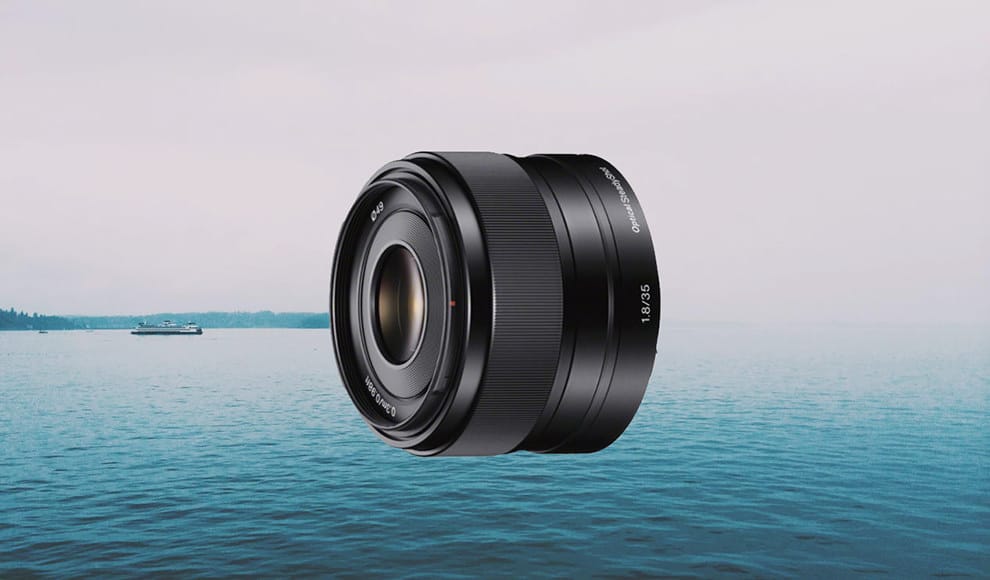
Affordable, lightweight, compact and fun. Blur the background of your photos to make your subject *pop*. This lens is the best bang for your buck.
After shooting over 5,000 images with this powerful camera, I know exactly which lenses are best for Sony a6000 owners.
The a6000 works best with compact prime and zoom lenses to keep its overall dimensions small.
Fast maximum aperture lenses will help you take advantage of the a6000’s 10/11fps burst rate without having to resort to high ISOs.
If you want the best all-round Sony a6000 lens, tap the button above to get my top pick.
Otherwise, keep reading to see all the recommendations.
Table of Contents
What are the Best Lenses for Sony a6000 in 2024?
Below, you’ll find my reviews of the five best lenses for the Sony a6000.
All of them are Sony APS-C E-mount lenses , which can be used on any other Sony mirrorless camera , but I’ve concentrated specifically on those that perform best with the a6000.
To add some variety to my recommendations, I also reviewed a selection from the competitively-priced non-Sony-branded lenses, which work well with the Sony a6000 mount type.
Here are some of the Sony a6000 best lenses.
1. Sony E 35mm f/1.8 OSS | All Round Best Sony a6000 Prime Lens

Focal Length: 35mm (equivalent to 52.5mm) Weight: 154g (5.5 oz.) Size (Diameter x Length): 63 x 45mm (2-1/2 x 1-13/16in.) Filter Diameter: 49mm Minimum Focus Distance: 0.3m (0.99ft)
Check Amazon Price Check B&H Price
I’m a big fan of prime lenses and recommend them to all levels of photographers.
They’re the quickest way to get better at composition, simplifying the picture-taking process by removing the variable of multiple focal lengths (as offered by zooms).
Don’t get me wrong, zooms have their place in photography. However, I believe every photographer should have at least one small, fast prime lens… and for Sony a6000 owners, this Sony 35mm 1.8 OSS lens is it.
If you own a mirrorless camera as small as the Sony a6000, it seems silly to put an enormous lens on it.
Paired with this dinky 35mm lens, the camera will be a pleasure to shoot and still fit into a jacket pocket – something DSLR camera owners can only dream of (see my mirrorless vs DSLR buyer’s guide ).
On the cropped sensor ( APS-C ) Sony a6000, this lens will give roughly a 50mm field of view, which is ideal for a whole range of subjects.
50mm is a popular focal length since it gives an undistorted view of the world and can be flattering for portraits without making the subject feel detached like a longer lens can.
By ‘fast’ prime lens, I mean that the lens aperture (as represented by the f-number) is wide enough to allow faster shutter speeds and lower ISOs in low light.
In other words, the f/1.8 of this Sony 35mm f/1.8 lens will allow you to take photos with the Sony a6000 in low light without a flash, much easier than with a ‘slower’ lens such as the Sony a6000 kit lens. (The smaller the f-number, the larger the aperture).
An aperture of f/1.8 also means that you’ll be able to get that coveted blurred background look that really separates lesser cameras.
Sure, your iPhone ‘portrait mode’ may be able to do something similar, but the process is much slower with the mobile phone and its fancy AI.
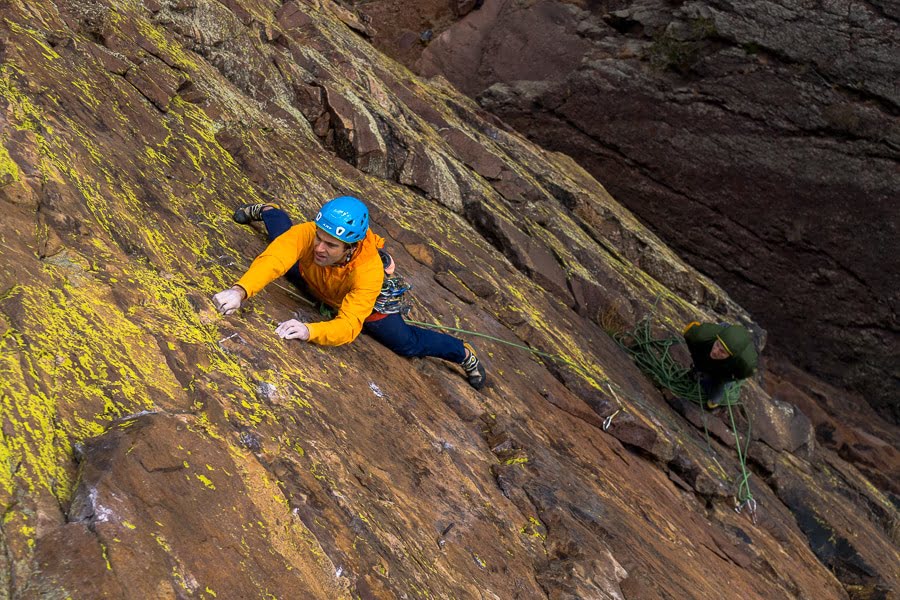
Sony 35mm f/1.8 | 1/640 f/4 ISO 200 | © Marc Bergreen
As for image quality, the Sony 35mm f/1.8 lens delivers images that simply aren’t possible with the kit lens that comes with your a6000.
Sharpness is impressive at f/1.8 and continues to improve to around f/4, where the sharpness and overall contrast excel for a lens of this price.
On the topic of price, at around $400, you may hesitate, especially as several Sony Alpha a6000 lenses can be found cheaper…
However, a camera is only as good as its lens, and by investing in the Sony 35mm f/1.8, you’re really making the most of your a6000’s abilities.
The ‘OSS’ refers to Optical SteadyShot (image stabilization), a feature that is rare on prime lenses.
In combination with the fast f/1.8 aperture, this makes the lens excellent for low-light shooting, allowing you to keep the ISO of your Sony a6000 as low as possible to create noise-free images.
Overall, the Sony 35mm f/1.8 lens is the best prime lens for Sony a6000 owners who want a small and lightweight setup with excellent optical performance – it’s the perfect travel camera/lens combination and the best Sony a6000 35mm lens.
- Sony 35mm f/1.8 Review
2. Sigma 60mm f/2.8 DN | Best Portrait Lens for Sony a6000
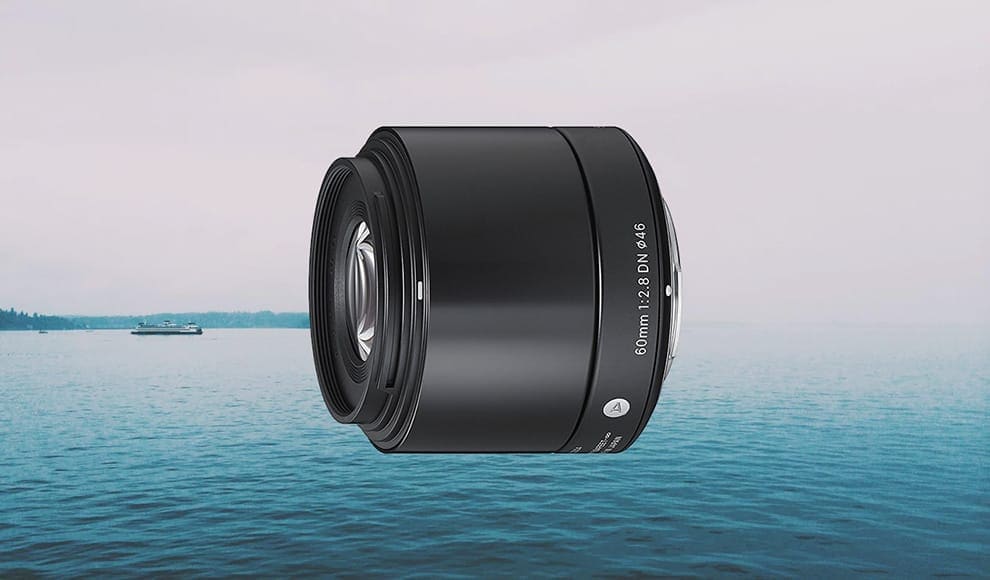
Focal Length: 60mm (equivalent to 90mm) Weight: 190g / 6.7oz. Size (Diameter x Length): 60.8mm x 55.5mm / 2.4in x 2.2in Filter Diameter: 46mm Minimum Focus Distance: 50cm / 19.7in
Here’s a bit of a curveball from Sigma in this guide to the best lenses for the Sony a6000. Remember that you don’t always need to match brands when buying lenses for your camera.
If this Sigma lens for Sony a6000 users didn’t exist, I would have included the Sony 50mm f/1.8 OSS lens – it’s faster, includes image stabilization, and is great value for money now that it’s dropped in price to under $300.
However, this Sigma has changed all that – the Sigma 60mm f/2.8 DN is quite simply the best portrait lens for Sony a6000 owners.
With an APS-C equivalent focal length of 90mm, your subject will look in perfect proportion, with their features compressed like reality (as opposed to distorted by a wide-angle lens ).
Medium telephoto focal lengths such as this one allow you to stand about 6 feet away from your subject and still fill your viewfinder’s frame with their head and shoulders for a flattering headshot.
Does that mean this Sigma is only suitable for portraits? Not at all – it just means that you’ll need to be able to stand back far enough to fit everything into your frame.
Telephoto lenses can be used for landscape photography to provide beautiful compression of the scenery, making background mountains appear closer to a foreground element, for example.
Despite being solidly built, the Sigma 60mm f/2.8 DN is actually rather light, making it another ideal prime lens companion for your Sony a6000.
Being lightweight also means focusing is silent and completely unobtrusive – something that video shooters will appreciate.
Images taken with the Sigma 60mm f/2.8 DN are incredibly sharp and contrasty, with vivid colours straight out of camera .
The f/2.8 aperture combined with the focal length delivers beautiful, creamy bokeh, which will help separate your subject from the background.
There’s no noticeable vignetting, distortion or chromatic aberration… basically, this means that your photos will look pretty darn good, with no fiddling necessary afterwards in Lightroom!
As for the price, well at a little under $250, this impressive little lens is by far the best value lens you can attach to your Sony a6000 – see more of the best Sigma lenses .
Note that this Sony a6000 portrait lens is also available with a different mount for micro-four-third cameras , so be sure you select the correct one for your a6000 when ordering (check the box marked ‘Sony NEX’). It’s also available in black or silver.
3. Sony FE 28-70mm f/3.5-5.6 OSS | Best Zoom Lens for Sony a6000
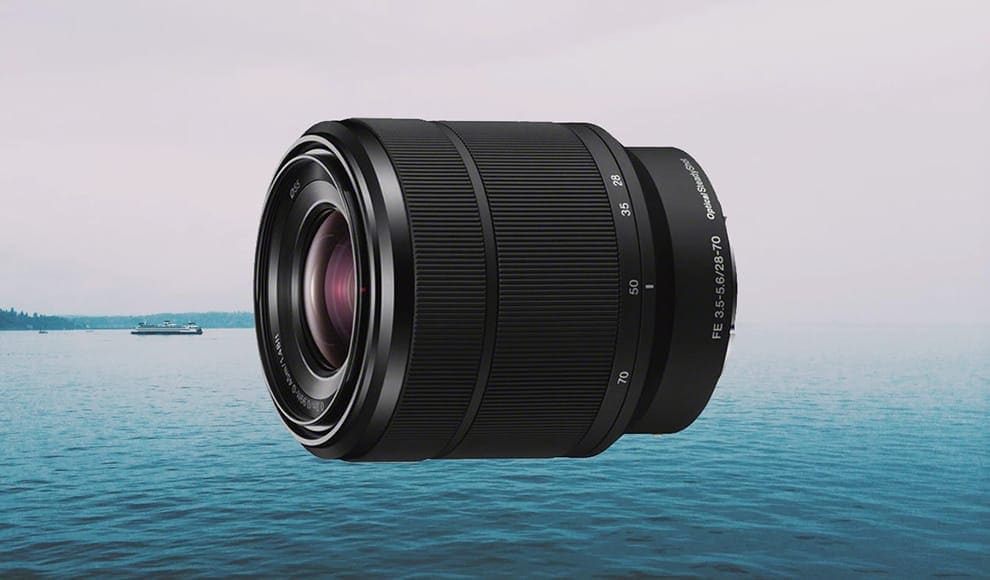
Focal Length: 28-70mm zoom (equivalent to 40-105mm) Weight: 295g (10.5oz.) Size (Diameter x Length): 72.5 x 83mm (2-7/8 x 3-3/8in.) Filter Diameter: 55mm Minimum Focus Distance: 0.3-0.45m (0.99-1.48ft)
With Sony a6000 compatible lenses, there are a lot of confusing abbreviations and naming conventions you’ll come across.
For the purposes of this best lenses for a6000 owners article, all you need to know are ‘FE’ and ‘E’.
The ‘FE’ as opposed to ‘E’ in this zoom lens’ name refers to the fact that this is actually a lens meant for professional full-frame Sony E-mount cameras .
It actually comes bundled as a kit lens with the Sony a7 camera. So, why am I recommending it here as one of the best lenses?
Normally I wouldn’t recommend buying an ‘FE’ lens for the APS-C sensor Sony a6000, since they’re much more expensive. However, with the suprisingly affordable Sony FE 28-70mm f/3.5-5.6 OSS , it’s an offer too good to miss.
At less than $300, this Sony zoom lens is an absolute bargain and perfectly suited to the Sony a6000.
It also means that if you ever decide to upgrade to a full-frame Sony camera, you’ll already have the best Sony a6000 zoom lens waiting in your camera bag!
The 40-105mm equivalent focal length makes the Sony FE 28-70mm f/3.5-5.6 OSS zoom particularly useful for subjects that change distance frequently, such as when photographing children or for sports photography.
Using a Sony FE lens on a cropped sensor camera basically means that the edges of the lens won’t be in use. On wide-angle lenses, this ‘missing width’ may be an issue, but on longer lenses such as this one, it doesn’t really matter.
As an additional bonus, in using the Sony FE 28-70mm f/3.5-5.6 OSS on a Sony a6000, you’re actually ‘cropping’ the edges of the frame, thus eliminating any edge softness that may have otherwise existed on a full-frame camera.
The image quality is impressive, as can be expected from a lens that’s meant for pro-grade full-frame cameras . It’s sharp, contrasty and produces great bokeh – more due to the focal lengths at which you’ll be shooting as opposed to the aperture.
On the topic of aperture, you won’t be shooting much after dark without a flash since this Sony a6000 telephoto lens is restricted to f/3.5-5.6.
However, I do appreciate the inclusion of Sony’s excellent Optical Steady Shot, which compensates for the minor hand movements that are particularly common when shooting at longer focal lengths and can cause blurred images.
Another nice feature of the Sony FE 28-70mm f/3.5-5.6 OSS is weather-sealing – a rare feature on Sony a6000 zoom lenses – but unfortunately, you won’t be able to take advantage of this since the camera body isn’t weather-sealed.
However, a weather-sealed lens also means that it’ll be built to last, no matter what camera body you attach it to.
If you’re looking for a great zoom lens for your Sony a6000 at a bargain price, look no further than this little beauty. This is one of if not the best budget lens for Sony A6000.
I’d also go as far as to call it the best multipurpose lens for Sony a6000 owners since it covers such a wide focal range and can do away with 2 or 3 other lenses.
- Best accessories for Sony a6000
4. Rokinon 12mm f/2 NCS | Best Wide Angle Lens for Sony a6000
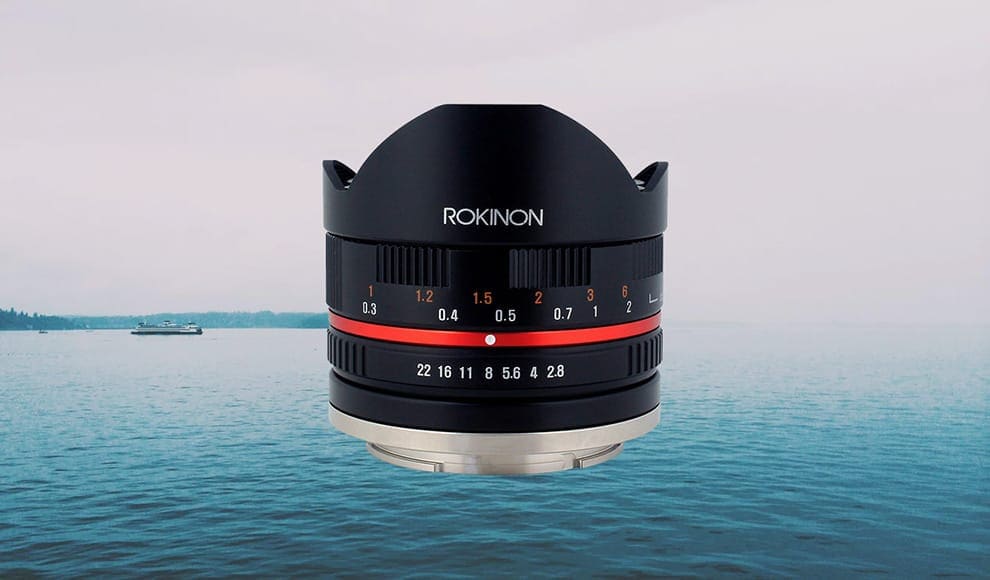
Focal Length: 12mm (equivalent to 18mm) Weight: 245g (8.64oz.) Size (Diameter x Length): 72.5 x 59mm (2.85 x 2.33 in.) Filter Diameter: 67mm Minimum Focus Distance: 7.87”(0.2m)
After adding a small, fast prime and a telephoto zoom to your Sony E-Mount lens collection, the next one you’ll want in your camera bag is a Sony a6000 wide-angle lens… or, in this case, an ultra-wide angle lens!
The Rokinon 12mm f/2 NCS has been made especially for mirrorless cameras (be sure you get the correct one for the Sony a6000 here ). This is a popular Sony a6000 wide angle lens.
For a wide-angle lens to remain wide angle on a cropped sensor body like the a6000’s, it must be truly WIDE.
With its equivalent 18mm field of view, you can create some really compelling, immersive images with this fun lens.
The obvious use of wide-angle lenses is for shots of vast landscapes, but another usage is to tell more of a story in one image by including a foreground element and multiple background elements.
At 18mm, you can place a subject in the centre of the frame (to minimise distortion), and still have enough ‘room’ around them to show their environment – it’s a skill, but a great way to really improve your photography.
One thing to note is that the Rokinon 12mm f/2 NCS is a manual focus lens (i.e. it doesn’t have autofocus).
Normally I wouldn’t recommend lenses that you need to twist yourself to focus, but with a wide-angle lens, not having autofocus is excusable since so much of the image will fall into focus without much fine-tuning – any objects from about 2 metres away to infinity will be in focus simultaneously.
With an aperture of f/2, you can use the Rokinon 12mm f/2 NCS in lower light too without needing to bump up the ISO of your Sony a6000.
Another advantage of wide-angle lenses is that small movements when photographing aren’t as noticeable in the final image, meaning you can also benefit from slower shutter speeds without needing to raise the ISO.
Sony offers several wide-angle lenses, but none of them are as affordable, nor as fast as this one from Rokinon.

Rokinon 12mm Sample Image | Matthew Saville
Part of the price difference is admittedly due to the lack of motor to power any AF, but also the cost-saving is due to the brand name itself. Sad but true.
As for image quality, shots out of the Rokinon 12mm f/2 NCS really impressed me for a lens of this price.
Images are sharp and rich in colour and contrast, with surprisingly low distortion. Zooming into your images reveals just how sharp the details are resolved, particularly in the centre of the frame.
Some photographers completely discount this lens when they read the words ‘manual focus’, but I really recommend that you give it a second thought.
Spending almost twice the price on an alternative with autofocus just doesn’t make sense to me, especially when the focus on wide-angle lenses like this is so forgiving… and the quality of the Rokinon 12mm f/2 NCS is so impressive.
If you want to create images that include more of the surroundings and tell more of a story with every click, this is my recommendation for the best Sony a6000 wide-angle lens.
- Rokinon 12mm f/2 review
5. Sony E 20mm f/2.8 | Best Travel Lens for Sony a6000
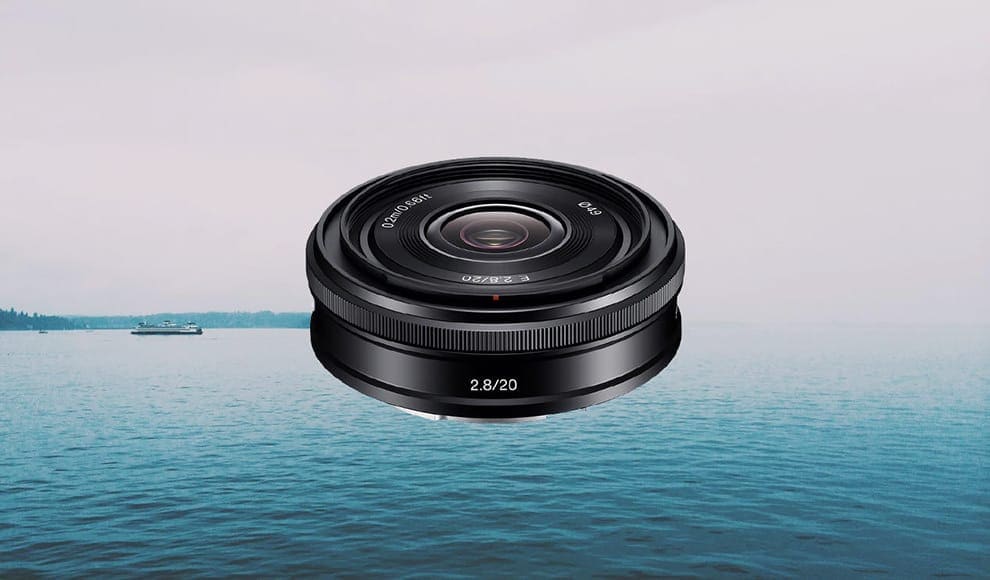
Focal Length: 20mm (equivalent to 30mm) Weight: 69g (0.15 lbs) Size (Diameter x Length): 62 x 20 mm (2.4 x 0.7 in.) Filter Diameter: 49mm Minimum Focus Distance: 0.2 m (0.6 ft)
I love ‘pancake’ lenses and wish that Nikon made one (I’d definitely include it in my roundup of the best Nikon lenses if they did!) Canon has one (reviewed here ), and now Sony does too thanks to this little gem of a lens.
At only 69g (0.15 lbs) and barely thicker than a lens cap, the Sony E 20mm f/2.8 is a great combination with the Sony a6000, or any cropped sensor Sony mirrorless camera in fact.
It’s my pick as the best a6000 lens for travel, or any situation where you want the most compact and lightweight camera set up possible.
Having a smaller, lighter and more pocketable camera isn’t just for portability’s sake though – you’ll be much less obtrusive and noticeable when using this combination, meaning more candid photos and a subject who’s more at ease.
The Sony E 20mm f/2.8 is a hugely popular lens for travelling a6000 owners and for street photography, where remaining incognito is paramount to a truly candid shot.
It’s definitely among the best travel lenses for Sony a6000 owners who value the compactness of their camera set up over the convenience of a zoom.
The 30mm equivalent field of view also lends itself well to run-and-gun style shooting on the street.
There’s a little distortion, and images could be a bit sharper when shot wide open at f/2.8, but stopping down your aperture to around f/5.6 yields better performance.
As with other pancake lenses , the Sony E 20mm f/2.8 isn’t renowned for delivering stellar image quality. It’s more a popular lens for photographers who put a priority on keeping their small mirrorless cameras… small. If this is what you’re looking for then this is Sony a6000’s best lens.
I fall into this category since I know that any issues with sharpness or contrast can be largely fixed after the fact with one click in Lightroom.
Having a tiny lens on the end of my Sony a6000 really makes using it more of a pleasure than any other more capable lens might.
35mm on a full-frame camera is my preferred focal length since it’s just so versatile.
Using the Sony E 20mm f/2.8 took a little getting used to (that ‘extra’ 5mm is more noticeable than I expected), but it’s still ideal for almost everything I need to shoot in an average day.
Obviously, for purely flattering portraits, something like the Sigma 60mm f/2.8 DN discussed previously would be the best lens for a6000 shooters.
Also, if you’ve got a little more to spend, look to the Sony 20mm f/1.8 – a full frame lens that works just as well on the crop sensor a6000, and can provide more subject separation than the f/2.8 variant.
If you’re looking for a good value lens that will make your Sony a6000 feel exactly as it’s intended, look no further than this. Yes, there are certainly Sony lenses that perform better optically, but none of them can be mistaken for a camera lens cap!
- Sony a6000 Battery Recommendations
What Lenses Are Compatible with the Sony a6000?
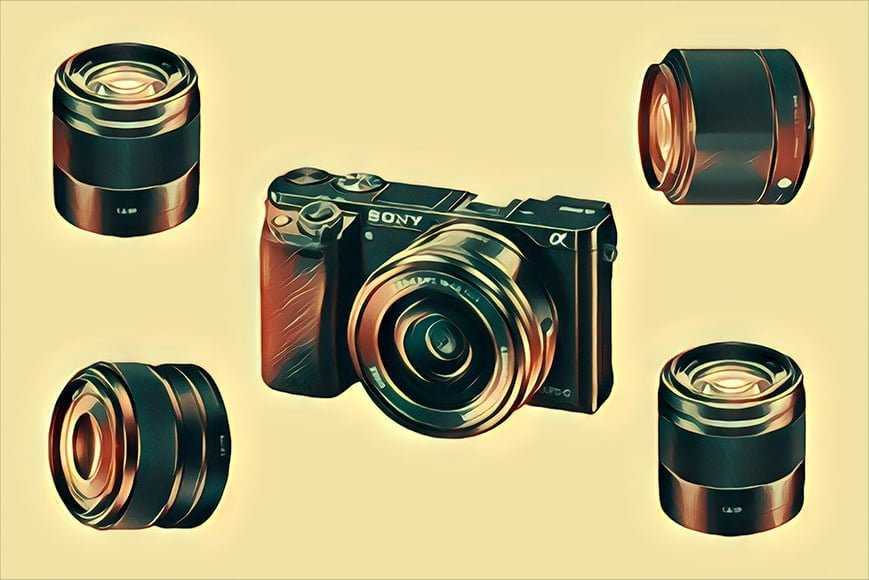
The Sony a6000 lens mount uses standard E-mount lenses (as opposed to full-frame FE lenses), originally designed for the Sony NEX (‘New E-mount eXperience’) series of mirrorless cameras.
The Sony a6000 was actually the first of the new breed of E-mount cameras to lose the NEX branding, even though it still looks much like its NEX predecessors.
There are more than 40 Sony E-mount lenses in production (far more than the number of Fujifilm lenses ), giving Sony a6000 owners a great selection to choose from, with more being added each year.
Sony produces ‘FE’ and ‘E’ lenses for its ‘E-mount’ mirrorless camera bodies. (There’s also the A-mount, which is for Sony Translucent Mirror-type camera bodies.)
If you see a Sony lens that contains an ‘E” (as opposed to an ‘FE’), this means that it’s been designed for their APS-C sensor range of mirrorless bodies – i.e. the Sony Alpha a6000, and all the other a6xxx series cameras.
Sony ‘FE’ lenses on the other hand cover the entire 35mm frame of a full frame camera, and as such, can be used on the entire range of Sony mirrorless cameras, even the Sony a6000 (at a 1.5* focal length multiplication).
It’s generally advisable to take advantage of lenses made specifically for the APS-C sensor (i.e. Sony ‘E’ lenses). However, occasionally it does make sense to invest in an FE lens, even if you own the Sony a6000… as you’ll have seen in my lens recommendations above.
Sony Lenses for a6000: FAQs
What lenses work with a6000?
The Sony a6000 uses standard E-mount lenses, designed for its APS-C sensor. It can also use FE-mount lenses, designed for full frame Sony mirrorless cameras.
What’s the best lens for Sony a6000?
The best lens for the Sony a6000 will depend on your requirements. Our top pick is the Sony E 35mm f/1.8 OSS , an affordable, lightweight, compact and fun e-mount lens that allows you to blur the background ‘on the cheap’.
Can I use FE lenses on a6000?
Yes, you can. All Sony FE-mount lenses are compatible with the Sony a6000, and often provide much better image quality than standard e-mount lenses, albeit at a much higher cost.
Can Sony a6000 use A-mount lenses?
No, it cannot, unless you use an adapter, although this isn’t recommended. There are so many good lenses designed for the Sony e-mount, that it’s not necessary to try and use a-mount lenses on a Sony a6000.
Can I use a full-frame lens on APS-C?
Yes, using full-frame lenses on cameras with APS-C sensors is OK. However, the photo frame will be cropped.
How many megapixels is the Sony a6000?
The Sony Alpha a6000 Mirrorless Digital Camera has an actual sensor resolution of 24.7 Megapixels. Yet, the effective resolution value is 24.3 Megapixels.
How to record video on a Sony a6000?
To record a video using the Sony a6000 camera, follow these steps:
- Power the camera on
- Press the small red button on the upper right corner of the camera
- Note the time running, meaning that the video is recording
- Use the same button to stop recording
- To retrieve the recorded video, press the button with the play icon to enter the preview mode
Is Sony a6000 full frame?
No, the Sony a6000 is not a full-frame camera. It has an APS-C size sensor, which is smaller than a full-frame sensor. Full-frame cameras from Sony are generally found in their A7 and A9 series, such as the A7 III or A9 II.
These full-frame cameras offer a larger sensor size and can deliver higher image quality, especially in low light conditions, but they also tend to be more expensive than the cameras with APS-C sensors like the a6000.
Final Words

The Sony a6000 is widely regarded as the most popular mirrorless camera of all time.
In this roundup of what I consider to be the best Sony a6000 lenses, I’ve concentrated on those that I feel reflect the price of the a6000 itself.
It seems counter-intuitive to me to buy a camera that’s around $500, then spend 2 or 3 times the amount on a lens.
I also tried to stick to lenses that won’t look and feel ridiculous on the small-bodied Sony a6000… although at times (with zoom lenses), this was difficult to achieve.
Sony created the E-mount lens line-up specifically for its mirrorless cameras, and in doing so, created lenses that all function very well on cameras like the Sony a6000. If you look at the reviews of any of the Sony E-mount lenses, you’ll see mostly 4 or 5 stars, from thousands of happy users.
It was tough to choose just 5 lenses from such an impressive selection, but I believe that the ones reviewed in this lineup will stand you in the best stead with your beloved little camera :-)
Let me know your thoughts in the comments below – do you agree with my selection?

Mark Condon is a British wedding photographer and editor of Shotkit. When he’s not taking photos or reviewing the latest camera gear and software, Mark can be found cycling around the northern rivers.
👋 WELCOME TO SHOTKIT!

🔥 Popular NOW:

Unlock the EXACT blueprint to capture breathtaking iPhone photos!

The 7 Best Lenses for Sony a6000 [Update for 2024]
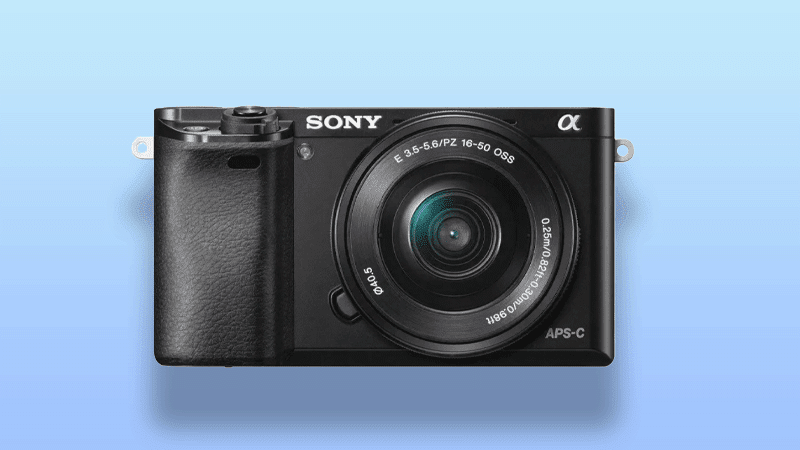
If you want to find the best lenses for the Sony Alpha a6000 camera, you’ve come to the right place!
Our pick for the best lens for the Sony a6000 is the Sigma 24-70mm f/2.8 DG DN Art lens . It’s got everything you’d expect in a pro-level Sony lens, but at a cost, anyone can afford. What’s not to love?
Introducing the Top 5 Lenses For Sony a6000 Cameras!

BEST OVERALL LENS
Sigma 24-70mm f/2.8 Art Lens

BEST FOR VIDEO
Sony FE 24-105mm f/4 Lens

BEST TELEPHOTO LENS
Tamron 70-180mm f/2.8 Lens

BEST WIDE-ANGLE LENS
Sony FE 16-35mm f/2.8 GM Lens

BEST 50mm LENS
Sony FE 50mm f/1.2 GM Lens
However, maybe you’re after something a little more specialized? We’ve got the 7 best lenses for the Sony E mount right here!
1. Sigma 24-70mm f/2.8 DG DN Art Lens: Best Multipurpose Lens For Sony a6000
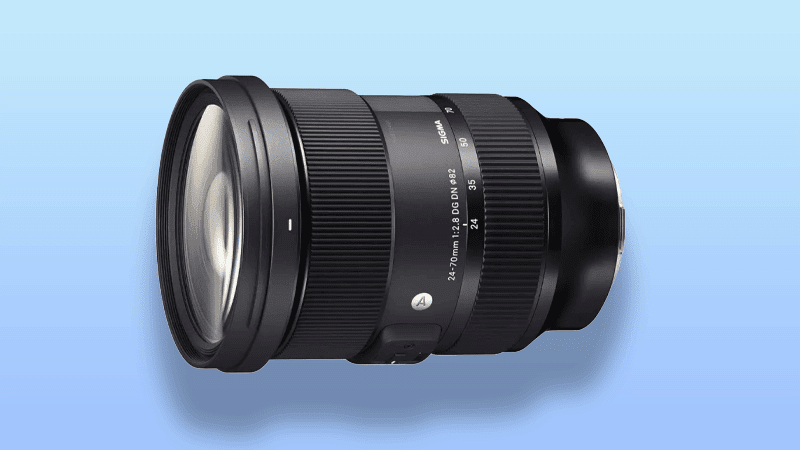
Our pic for the best all-rounder lens for Sony a6000 cameras is the Sigma 24-70mm f/2.8 DG DN Art lens. It’s got everything you need no matter what style of photography you’re into. Let’s check out what makes this lens so good.
The best all-around lens for Sony a6000 cameras comes packed with features.
Sigma put their all into their Art lenses. This means that this lens has dust and is weather-sealed just like you’d expect from a high-end Sony lens.
It’s also got multiple optical elements which will help to remove distortion , chromatic aberrations , and other problems in your photographs.
The focal length of this lens is also ideal for pretty much every style. Pull things back to the widest angle for landscape and astrophotography or get nice and tight for your basic wildlife and sports photography. This lens from Sigma really does have it all.
There are also features here that plenty of Sony lenses would be jealous of. The lens has an 11-bladed diaphragm which is outstanding for delivering buttery-smooth bokeh.
Sigma also decided to add several coatings to this lens to make sure that it can stand up to regular use. These will help protect the glass elements as well as keep the lens safer from dust and light scratches.
Of course, our pick for the best third-party lens for Sony a6000 cameras does have a few flaws, but they might not be what you’d expect.
The first drawback to this lens is that this lens does not come from the Sony brand. This means it’s going to look and operate a little differently than the lenses you might be used to.
This could be a deal-breaker for die-hard Sony fans as well as people who rely on using one style of lens for the similar button layout, and tactile controls, and those who don’t want to learn a different system.
There’s also the budget factor to consider here. While this definitely isn’t a budget option, it is way cheaper than the Sony brand. However, if you have the extra money to invest in a lens why not get the Sony equivalent?
- On par with Sony’s best lenses and half the price
- 36-105mm equivalent focal length
- Eight distortion-correcting elements
- 11-bladed diaphragm
- Great for nearly all photography styles
- Off-brand looks might not be right for everyone
- If you have the extra cash, you might be better of with the Sony GM equivalent
2. Sony FE 24-105mm f/4 Lens: Best Lens For Sony a6000 For Video
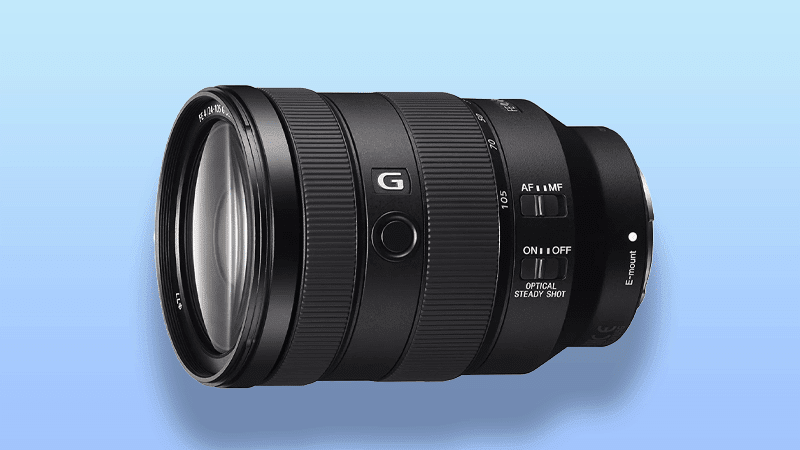
If you want the best vlogging lens for the Sony a6000, then the Sony FE 24-105mm f/4 is exactly what you’ve been looking for!
We’re going to take a closer look at what makes this the best choice for videography on the Sony A6000.
This lens has all of the basic features you’ll want when it comes to shooting video on a Sony mirrorless camera . Yes, the crop sensor means that the affected focal length of this lens is going to be a little tighter, but it’s still going to be wide enough to handle shooting in most situations.
It’s also got Optical Steadyshot image stabilization, internal focus, and more than enough lens coatings and optical elements to overcome distortion and chromatic aberration.
This means you’ll be getting the best possible video every time you shoot. This is a very forgiving lens when it comes to beginner videographers who are looking to jump into this unique niche.
This lens is more than capable of delivering on professional results if you’re up to the job. This means that this lens can stick with you as you upgrade beyond the Sony a6000 and into their more professional line of cameras.
We talked a lot about video , but this is also a great lens when it comes to good old fashion photography. The 9-bladed diaphragm delivers on great bokeh and a wide range of focal length options meaning you’ll be able to do everything from landscape to portraiture using this lens.
Then again, there are a few drawbacks that we need to consider when we’re looking at this particular video lens. These could be minor cons, but they could also be serious setbacks that make or break this lens.
This is a great choice for general video. It’s wide enough to handle vlogging in your apartment, but also lets you get some title shots in as you expand and build your video skills.
However, you’ll ultimately want to move into some more specialized lenses as you develop your skills as a videographer. If you already know where you want to start, you might be better off picking a more specialized lens than this option.
This lens also has a few problems when it comes to low-light performance. It can definitely handle low-light filming conditions, but you’re going to need to lean harder on your skills as a photographer than you would with a higher-end lens.
- Optical Steady Shot Image Stabilization
- Internal focus for easy transportation and use
- Fluorine coating for durability
- 4 Aspherical elements
- 3 ED elements
- 9-blade diaphragm
- A general rather than specialized video lens
- You’ll have to pick between different styles
3. Tamron 70-180mm f/2.8 Di III VXD: Best Telephoto Lenses for Sony a6000
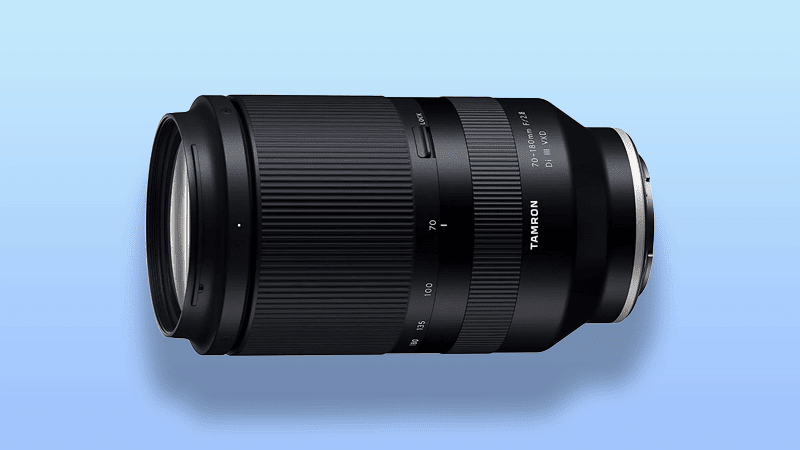
If you want the best budget zoom lens for the Sony a6000, you’re going to need to look outside of the Sony brand. The Tamron 70-180mm f/2.8 Di III VXD is not only one of the best zoom lenses for Sony a6000, and it’s also one of the most affordable.
There’s very little to dislike when it comes to this telephoto lens. It’s perfect for using on the crop sensor camera and it delivers an extra punch when it comes to telephoto photography.
This lens is a great choice if you’re looking to take pictures of sports games or you’re looking to venture outdoors.
This could also be the best wildlife lens for Sony a6000 cameras—especially on the crop sensor. This means you can explore the potential of taking stellar pics of your local birds to the wildlife on your next safari vacation.
Tamron makes some of the best third-party lenses out there. You’ll find all over the optical coatings, elements, and features you’d expect on Sony’s GM line of lenses.
Not everything is perfect when it comes to our pick for one of the best telephoto lenses for the Sony a6000.
The first thing that we need to deal with is a recurring problem when you shoot on a crop sensor camera . The crop sensor format naturally magnifies the focal length of any lens you use. This means that things are going to be much more zoomed-in than they would be on a full-sized sensor.
This could actually be a benefit when we’re doing telephoto work. This means that you get zoomed in even further than you would be able to on a higher-end camera.
However, this also means that you can’t zoom out nearly as far as that 70 mm focal length suggests you could. It’s actually about a 105 mm focal length equivalent which leaves 35 mm of a gap.
This just means you need to think carefully about the types of photography you’ll be using this lens for. It’s going to be even better when it comes to wildlife and sports but might struggle a little if you’re looking for an all-around lens you can carry every day.
Another thing to look at is that this is a third-party lens. This means it’s not going to offer the same kind of support that you would expect from a Sony lens. It also has a different style and a different controller configuration which could be a bit of a hassle for people used to the house brand.
- 105-270mm equivalent focal length
- Great aperture range of f/2.8 to f/22
- Multiple coatings and elements
- Dual VXD Linear AF Motors
- Weather sealed
- Focal length range is a bit odd with the crop factor
- Third-party lenses aren’t for everyone
4. Sony FE 35mm f/1.4 GM Lens: Best 35mm Lens for Sony a6000
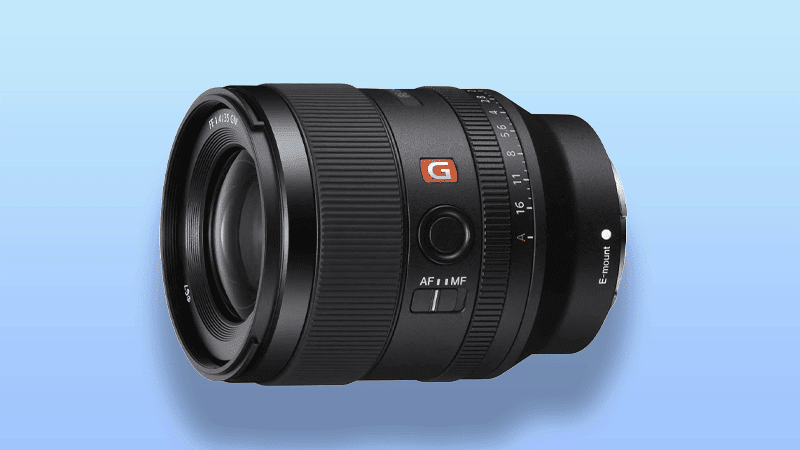
There’s hardly anything to dislike about the Sony FE 35mm f/1.4 GM. It’s one of the best lenses for Sony a6000 and it’s easily the best 35mm prime for this camera.
The Sony FE 35 mm lens is just about perfect when it comes to a 35 mm prime lens for a mirrorless camera system. Really, we scratched our heads to find problems with this lens and it was hard to come up with a few that we did.
This is also the best lens for Sony a6000 for night photography. That at one point forward aperture is going to be bright enough to handle just about anything that you can throw at it.
You are safe as can be taking this lens to a wedding, a party, or even trying your hand at some interesting astrophotography. There is essentially no dimly-lit situation that can’t be overcome with this bright of an aperture.
That aperture is also going to give you some great bokeh. People don’t tend to think about 35 mm lenses as a good option for portraits, but they really are. You’ll get some classic, cinematic-looking portraits with his lens.
This also means it’s a great lens for video. As long as you’re okay with always shooting wide or having to zoom with your feet, this lens gives you some pretty strong choices when it comes to video.
We should talk about the two big claws when it comes to the Sony FE 35mm lens.
The first thing that you’re going to notice about this once the price tag. It’s usually more expensive than the Sony a6000 camera and you’re definitely going to feel that cost. There are budget alternatives to this lens, but you start rapidly trading away all of the features that make it such a good lens in the first place.
Then again, that budget isn’t a problem at all if you plan on eventually upgrading out of the a6000 product line. If your ultimate goal is to work your way up to a professional-grade camera, then there’s no harm in starting with a professional-grade lens.
We should also spend a minute talking about the limitations of 35 mm. This is a very natural focal length, but it doesn’t offer much in the way of a telephoto zoom or extreme wide angle.
Ultimately, this is one of the best ones that you can get for any Sony camera . You just need to make sure that 35 mm is where you want to be.
- Ultra bright f/1.4 aperture
- Physical aperture ring with a “De-Click” Switch
- an AR II and Fluorine coatings
- Dual XD Linear AF Motors
- Expensive compared to the A6000
- 35mm prime has some restrictions
5. Sony FE 50mm f/1.2 GM Lens: Best 50mm Lens for Sony a6000
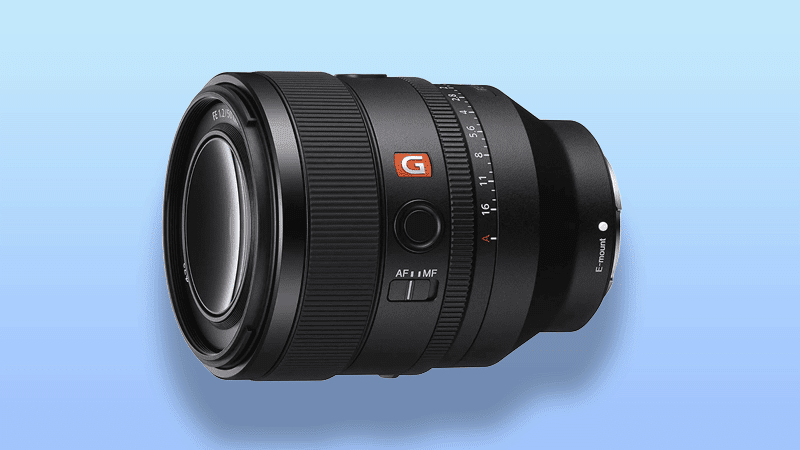
The Sony FE 50mm f/1.2 GM is the best prime lens for Sony a6000 hands down. It’s got everything you’d ever want in a prime lens for a mirrorless camera. Here’s what makes it so great.
50 mm is arguably the ideal focal length for a prime lens. Many photographers consider this to be the same focal length shared by the human eye. Your photos will look natural. The styles you can use with this lens are very versatile.
Because it mimics the human eye, this lens is great for wildlife photography, landscapes, and portraits. It’s a very balanced option that delivers a comfortable result.
This particular lens is weather sealed, has an 11-bladed diaphragm, and even has a focus hold button. Whether you’re a beginner or a working professional, it’s hard to spot any problems with this lens.
That aperture is also outstanding. That f/1.2 means that you’re never going to encounter any problems shooting at night. If you ever run into a situation that’s too dark to photograph, it will be because your camera can’t keep up and not your lens.
There are very few drawbacks when it comes to this 50 mm lens, but we do have to look closely at some serious considerations.
The first thing we need to look at is this lens is way more expensive than the Sony a6000 itself. Of course, this isn’t a problem if it’s not for your budget, but it is worth looking at closely.
One of the best things about 50 mm prime lenses is that you can get them very cheaply. This focal length has a reputation for delivering even on budget models. There were professional photographers out there working every day using 50 mm lenses that hardly cost anything and still getting amazing results.
We’re not saying that this price point is bad for this specific lens, but we are saying that you can definitely get pro-level results with budget prime lenses .
There are a bunch of options that are also readily available. They are all over the market both in Sony’s own brand as well as other brands of camera lens options. You can even get a lens converter kit to use your favorite 50 mm lens that uses a different mounting system.
You’ve got plenty of options out there when it comes to finding a great 50-millimeter prime lens for the Sony a6000. This is the best of the best—so long as you have the budget.
- Focus hold button
- AF/MF switch
- Nano AR II and Fluorine coatings
- Four XD Linear AF Motors
- Weather-sealed build
- Multiple elements
- G Master lens
- Budget alternatives are readily available
6. Sony FE 85mm f/1.8 Lens: Best 85mm Lens for Sony a6000
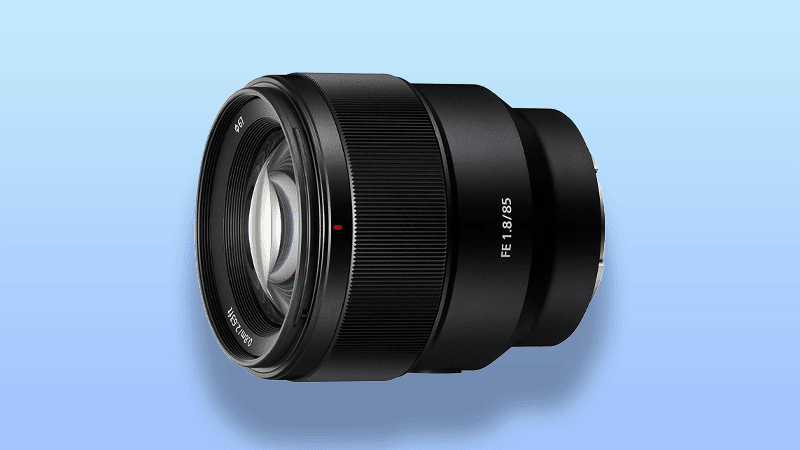
The Sony FE 85mm f/1.8 is one of the best Sony lenses for portraits and the best 85mm lens available for this camera.
It’s honestly incredibly easy to go through all the positives of this lens. If taking portraits is one of your favorite activities, this is the lens that you’ve been waiting for.
The first thing we need to do is to look inside this lens and see what makes it so good for portraits. The double linear AF motor allows it to quickly and silently snap into focus. This is almost mandatory when you’re working with portraiture models who don’t need to be disturbed by the sound of a lens focusing.
This lens also has a 9-blade diaphragm and plenty of coatings and optical elements to reduce any distortion. This is especially important when it comes to portraits because you want to take the cleanest pictures possible.
This lens is also weather sealed. Honestly, being weather sealed is one of the most important things that you can have for a portrait lens. This means that you can get outdoors with your portraits without worrying so much about your lens taking damaged by dust or light rain.
This is also the best macro lens for Sony a6000 cameras, but you need to get a little crafty. You’ll either need a macro extension or just a quick trick.
You can actually turn any lens into a macro lens by flipping the lens around. You can find adapters that will mount it in place or you can just physically hold it there while you try your hand at macro photography.
The 85mm lens is already a great choice for macro. It’s got powerful magnification and tight features.
This also gets us into some of the flaws with this lens.
This isn’t expected critique at this point, but this is an incredibly expensive lens for the Sony a6000 camera. We’re essentially equipping a high-end professional lens with an entry-level camera. Yes, you can find budget alternatives to this Sony 85 mm lens, but they’re just not going to deliver on the same features.
85 mm is also considered a specialty focal length. It’s really good for portraits but doesn’t stand out when it comes to other styles of photography.
You can compare this to another prime lens like the 50 mm. That’s great for portraits, but it’s also good for street photography and taking it with you for travel photography.
85 mm isn’t a bad focal length, but it does restrict your photography to portraits and if you related styles like product photography.
This means that it might not be the best first lens for someone looking to get into photography in general. However, if you already know the styles are after, this 85 mm lens from Sony is going to be your best choice for the Sony a6000.
- Double Linear AF Motor
- 9-bladed diaphragm
- One Extra-Low Dispersion element
- Outstanding aperture
- Perfect for portraits
- Expensive prime lens
- Not a good multitasker
7. Sony FE 16-35mm f/2.8 GM Lens: Best Wide Lens for Sony a6000

The best landscape lens for Sony alpha a6000 is easily the Sony FE 16-35mm f/2.8 GM lens. Here’s why.
Wide-angle photography is becoming increasingly popular. You can access such fantastic photography styles as landscape , astrophotography, and even interior and Architectural photography. The sky, quite literally, is the limit when it comes to wide-angle photography.
The Sony FE 16 to 35 mm lens is going to open up all of those styles for you. This lens has a few tricks up its sleeve.
When you pair this lens with the Sony a6000, the 11-bladed diaphragm of this lens actually makes it a powerful portrait lens. If you stick to the 35 mm top end, this lens is also great for videography and street photography.
That’s a lot of versatility packed into a single lens. Yes, you won’t be able to zoom in to do Wildlife photography or sports photography, but you will have access to the vast majority of styles in a single package.
This also comes from Sony’s high-end lenses. These are the best of the best when it comes to shooting on mirrorless.
This means that this is a weather-sealed lens. It can stand up to shooting in the outdoors which is great if you’re interested in landscapes and nature, to begin with.
Set direct-drive supersonic wave autofocus motor is all so incredible to use on this lens. It’s got smooth, fast, responsive autofocus that’s perfect when you’re working out in nature and you don’t want to disturb the natural environment. You’ll just have to get used to saying “Direct Drive Super Sonic Wave AF Motors.”
Now let’s get into a few of the things that are holding this lens back.
One of the first things that we need to talk about is that a prime lens might be better when it comes to wide-angle photography. It really all depends on what you were going after.
Prime lenses have fewer mechanical problems. They also deliver on clear images. This is vital when it comes to certain wide-angle styles like astrophotography. If you’re taking really long exposures, you don’t want to risk having any visual distortions spoiling your image.
Zoom lenses also have more moving parts than prime lenses. This means that you have more to look out for as well as higher future repair budgets in case anything goes wrong.
Another issue with this lens has more to do with the Sony a6000 than it does with this lens itself. That crop sensor in the Sony a6000 is going to magnify the focal length of his lens. This means it won’t be nearly as wide as 16 mm to 35 mm.
Unfortunately, you can’t get much wider than this on a crop sensor to begin with. That’s just something that crop sensor camera owners are going to have to balance while they consider upgrading to a full-frame camera.
- Direct Drive Super Sonic Wave AF Motors
- Perfect focal length range
- A wide-angle prime might be better
- The crop sensor on the A6000 makes this actually a bit tighter
Conclusion – Which lens should I buy for my Sony a6000
The best overall lens for Sony a6000 has to be the Sigma 24-70mm f/2.8 DG DN Art Lens . However, we also picked the Sony FE 24-105mm f/4 lens as the best lens for Sony a6000 for video and the Tamron 70-180mm f/2.8 Di III VXD lens for your zoom and telephoto needs!
Which one of these lenses are you taking out for your next photoshoot?
Don’t forget to check out our other articles on the best Sony lenses .
Didn't find what you looked for?
Go to my Sony page for Sony's best products, and related articles.

Turn Your Old gear into new possibilities !
We’ll buy your used cameras, lenses, accessories, and other equipment at prices you can feel good about, and turn them into new opportunities

Keep in mind that we may receive commissions when you click our links and make purchases. However, this does not impact our reviews and comparisons. We try our best to keep things fair and balanced, in order to help you make the best choice for yourself.
As an Amazon Associate, I earn from qualifying purchases.
There are affiliate links to KEH Camera. By purchasing through these links and using my discount codes, you’re supporting the channel with no additional cost to your purchase. It’s greatly appreciated.
Share The Love!
Copyright © 2024 Photographertouch
Terms and Conditions
Affiliate Disclosure
HTML Sitemap
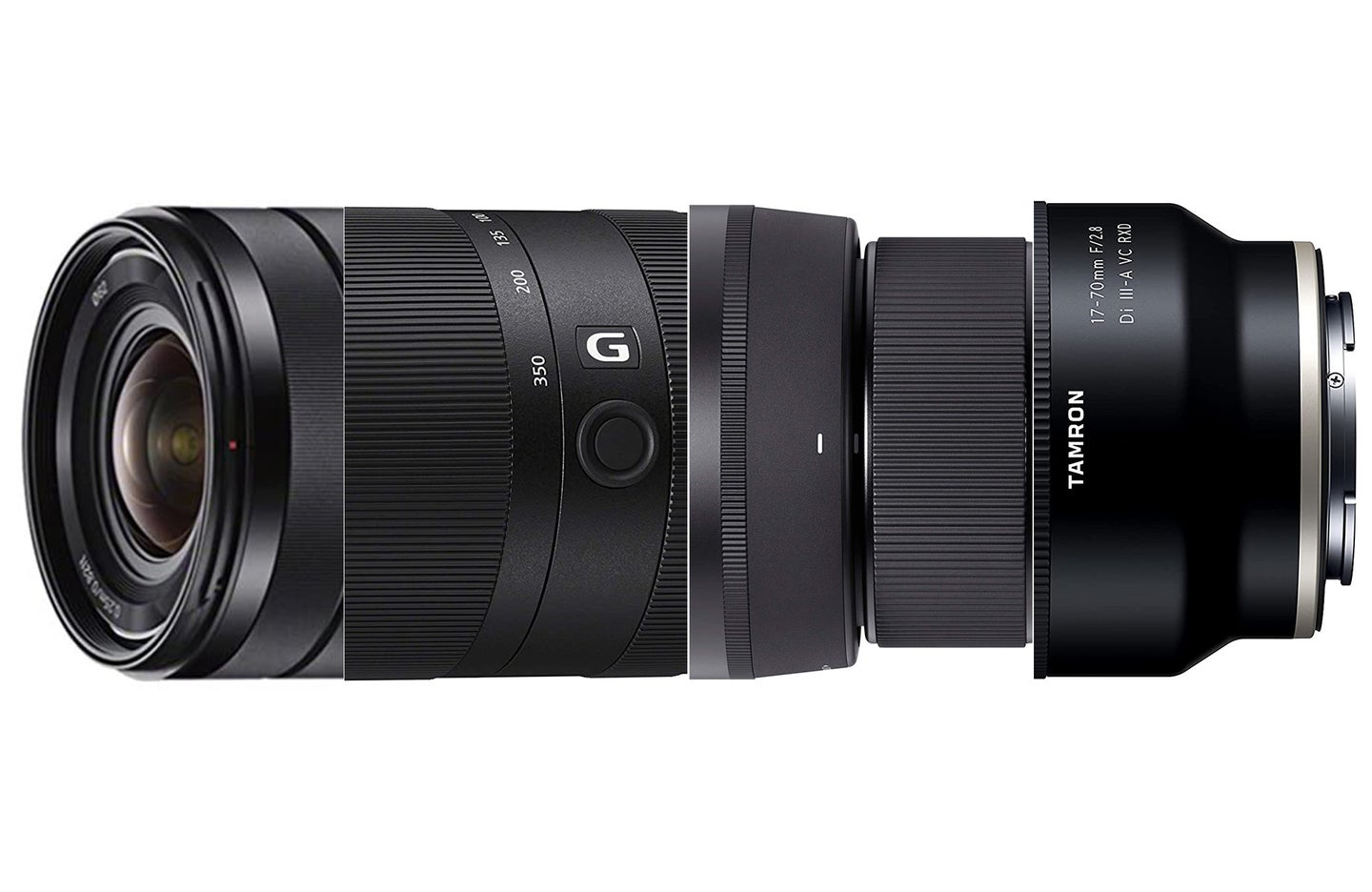
The best lenses for Sony a6000 in 2023
It may have come out in 2014, but the Sony a6000 is still a beast of a camera, and these lenses make it even better.
We may earn revenue from the products available on this page and participate in affiliate programs. Learn more ›
The Sony a6000 is a fantastic camera–especially when paired with lenses for the Sony a6000–that has stood the test of time since its release in February 2014. Since then, Sony has launched several new versions and higher-spec models in the a6100, a6300, a6400, a6500, and the a6600. However, the a6000 is still one of the best beginner or backup cameras available.
While these lenses are great for the a6000, offering excellent image quality and a range of features, they would also be good companions to the newer, higher-end Sony models mentioned above. So rest assured, if you buy one of these best lenses for your a6000 and then decide to upgrade, they will carry over perfectly well.
Best overall: Sigma 18-50mm F2.8 DC DN Contemporary
- Best for portraits: Sigma 56mm f/1.4 DC DN Contemporary
- Best zoom: Sony E 70-350mm F4.5-6.3 G OSS
- Best landscape lens: Sony E 10-18mm F4 OSS
Best on a budget: Sony E 18-135mm F3.5-5.6 OSS
Honorable mention: tamron 17-70mm f/2.8 di iii-a vc rxd, things to consider before buying lenses for the sony a6000.
There are many things you need to consider when buying a lens . However, before we move on to those, it’s important to note that the Sony a6000 is an E-mount camera, which means that it can only take a lens with Sony’s E-mount. When looking at lens options, especially third-party options like Sigma and Tamron, be sure to choose the correct mount.
The a6000 has an APS-C sensor, which results in a 1.5x crop factor. The crop factor means that the lens’s effective focal length will differ from what is listed. For example, if you are looking at a 50mm lens, it will act like a 75mm lens on the a6000. As a result, it’s helpful to do that math when choosing which focal length will be best for you.
Your typical subject matter and shooting style will significantly impact which lens is best for you. For example, if you were to use the Sony a6000 for portrait photography , a prime lens, such as the 50mm, might be better than the 18-135mm, which is better suited for travel photography. Or, if you intend to use it as a street photography camera, you should consider the smaller pancake lenses because of their compact size.
As with most photography gear, cost is a significant factor. Though the Sony a6000 is relatively low-priced due to its 2014 release date, lenses can still get quite expensive. As you get into higher-quality lenses, the price will, of course, go up. Buying a quality lens for an older camera is still worth it, though; you can always future-proof yourself with a higher quality lens now and upgrade the camera later.
Size and Weight
The Sony a6000 is a small camera, weighing just 12.13 ounces. Large, heavy lenses will mean that your setup becomes front-heavy. The unbalanced weight can be awkward to carry and potentially cause aches on your neck or shoulder from carrying it. If staying lightweight is essential to you, focus on more compact lenses.
Build quality
Determining what you intend to use the camera for is important for choosing the best lens for the Sony a6000. Many forms of photography require you to be outside and sometimes in wet and windy conditions. Some types of shooting may mean the lens is liable to bump into things or generally get roughed up. If this is the case for you, it will be critical to have a lens with good build quality. A metal casing and weather sealing that can withstand the worst nature can throw at us are two things to look for.
Here are our picks for the best Sony a6000 lenses:
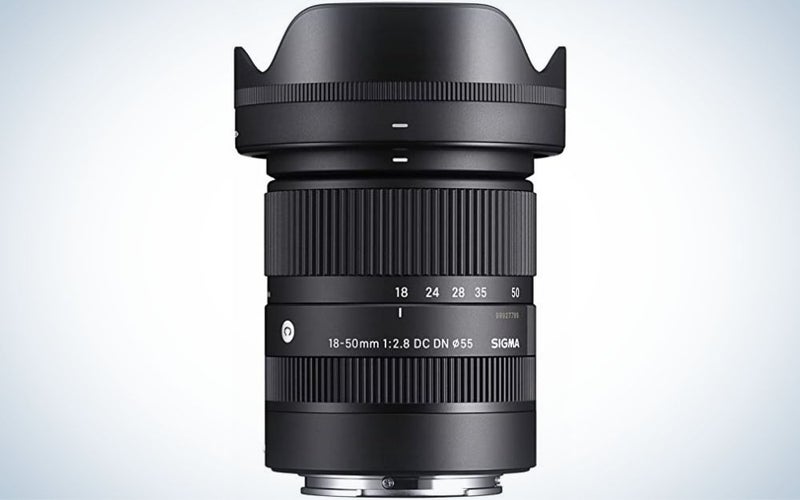
Why it made the cut: Equivalent to a 27-75mm on a full-frame camera, The 18-50mm is a versatile focal range ideal for most photographic situations. With a wide, f/2.8 maximum aperture and a low price, this is the best lens you can buy for the money.
Key features:
- Weather sealed: No
- Image stabilization: No
- Weight: 10.2oz
- Filter thread: 55mm
- Effective focal length: 27-75mm
- Wide and constant aperture
- Lightweight
- No AF/MF switch
- No Image stabilization
Product description
The 24-70mm range is a very popular, versatile zoom range found in most photographers’ kits. Sigma’s 18-50mm f/2.8–which is equivalent to 27-75mm–is a fantastic lens that comes at an affordable price. The images it produces are sharp, with excellent center sharpness between f/2.8 and f/11 at most focal lengths. There is some softness on the edges, though it is minimal, especially considering the price of the lens.
The wide f/2.8 aperture allows you to create a nice separation between your subject and the background, with some very pleasing bokeh as well. It also makes it better in low-light conditions. Unfortunately, there is no physical AF/MF switch, which could be a deal-breaker for those who frequently switch back and forth between the two. But, the autofocus is excellent, with the STM motor quickly and very quietly achieving focus, even when going from close to far.
One of the biggest perks of this lens is its compact size. It’s only 2.9 by 2.6 inches and 10.2 ounces, which compliments the small size of the a6000. Overall, the Sigma 18-50mm is a great lens, especially for those just beginning in photography or want something lightweight and affordable.
Best for portraits: Sigma 56mm f/1.4 DC DN Contemporary
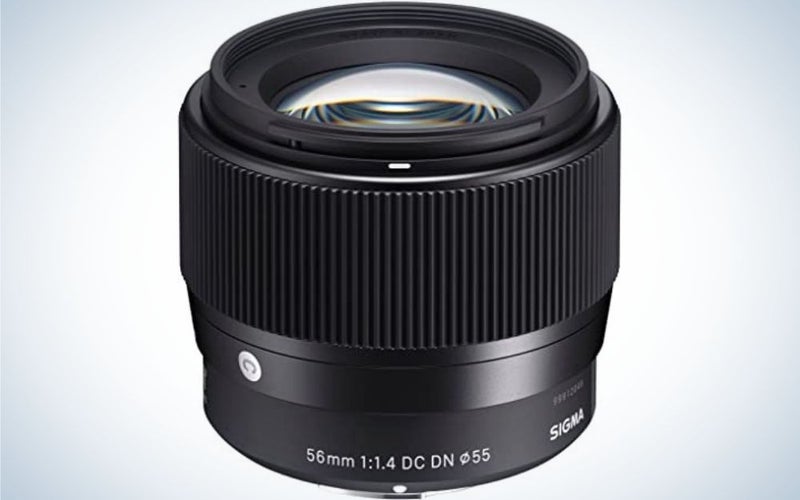
Why it made the cut: With a fast f/1.4 maximum aperture and tiny 2.62 x 2.34 inch size, this is a beautifully bright little lens perfect for portraits.
- Weather sealed: Yes
- Weight: 9.9oz
- Effective focal length: 84mm
- Weather sealed
- Sharp photos
- No image stabilization
85mm is considered by many to be the ideal portrait focal length, and the Sigma 56mm comes in at 84mm equivalent. Though it is part of Sigma’s “Contemporary” range, the second tier behind its premium “Art” line, it is still an incredible little lens. The fast f/1.4 aperture will allow you to tackle difficult lighting situations because the wider aperture allows more light in the camera. This is especially useful for indoor or nighttime portrait work without a lighting setup. The wide aperture also results in wonderful bokeh and beautifully shallow depth of field.
Sigma’s 85mm is extremely sharp, producing crisp, quality images. Furthermore, it’s small at only 2.34 inches in length and weighs just 9.9 ounces. Combined with the Sony a6000, the total weight is just 22.03 ounces, the same weight as the next lens on this list! So, you could also use this for street and travel photography as it’s light and small enough that it’s easy to carry, and you won’t scare the subject away.
The addition of weather sealing is also very welcome, and that means you can take it out for longer without needing to fear rain or bad weather.
Best zoom: Sony Alpha 70-350mm F4.5-6.3 G OSS Super-Telephoto APS-C Lens
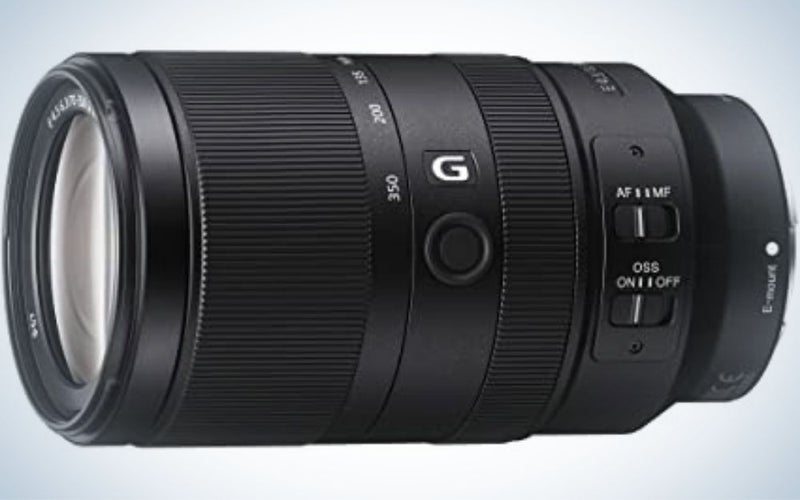
Why it made the cut: The Sony 70-350mm is a powerhouse of a lens. With weather sealing, image stabilization, and a long zoom range, this lens is versatile enough to get you through many photography situations.
- Image stabilization: Yes
- Weight: 22.1oz
- Filter thread: 67mm
- Effective focal length: 105-525mm
- Long zoom capabilities
- Image stabilization
- Fast autofocus
- Slow maximum aperture
When you need to cover that extra distance, the 70-350mm (equivalent to 105-525mm in full-frame format) is the lens to pick. It covers a huge range, ideal for different types of photography. For example, it’s perfect for sports and wildlife photography, where you can’t be as close to the subject as you’d like. It can also be a fun lens for certain landscapes, as the telephoto range visually shortens the distance between the background and foreground, resulting in aesthetically pleasing photos.
The slower f/6.3 at the lens’s most narrow focal length isn’t the best in low-light situations, but the in-lens stabilization will help with that. Sony’s image stabilization (OSS) is fantastic and does a wonderful job of ensuring your images are sharp. Image quality is sharp, and the autofocus is quick, so you’ll come away feeling happy knowing that you got the shot.
As this lens is less likely to be used indoors, Sony included dust and splash-resistant sealing on the lens. It is also made of sturdy polycarbonate, making it durable enough to take on your adventures. However, it is quite heavy at 22.01 ounces, which will be a bit front-heavy on the a6000.
Best for landscapes: Sony E 10-18mm F4 OSS
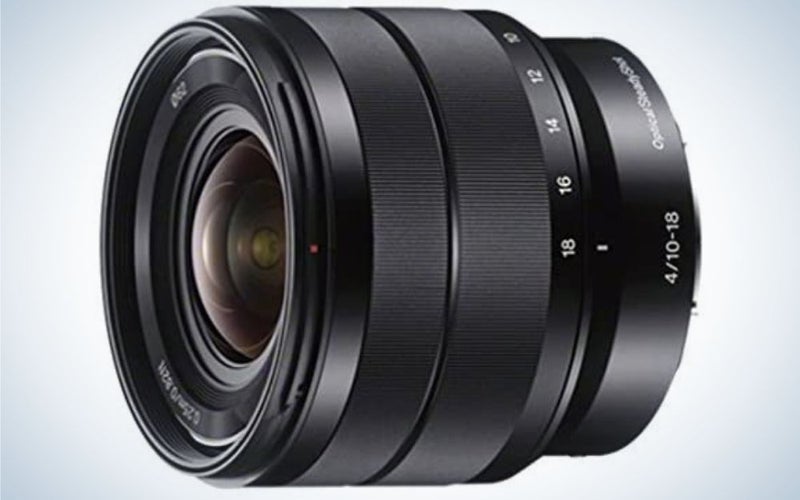
Why it made the cut: Sony’s 10-18mm is a sharp wide-angle lens with 3-stop optical stabilization and a lightweight yet sturdy metal body.
- Weight: 8oz
- Filter thread: 62mm
- Effective focal length: 15-27mm
- Wide field of view
- Very lightweight
- Durable metal shell
- No weather sealing
Wide-angle lenses are incredibly useful, from landscapes and real estate to group photos and quirky portraits. Sony’s 10-18mm will give you 15-27mm in equivalent full-frame format, making this a solid wide-angle lens. It has a primarily metal shell yet only weighs 8 ounces. The lightweight and compact size make it a useful travel companion as it wouldn’t burden you too much. The metal build also provides protection when traveling, so you’ll feel confident that the lens can survive most bumps and nudges.
This lens has image stabilization to help you keep things pin-sharp even when using it in low light conditions. That’s even more helpful considering that the lens’s maximum aperture is only f/4, which takes away some low-light performance. However, it is a constant aperture, meaning you can use that throughout the focal range.
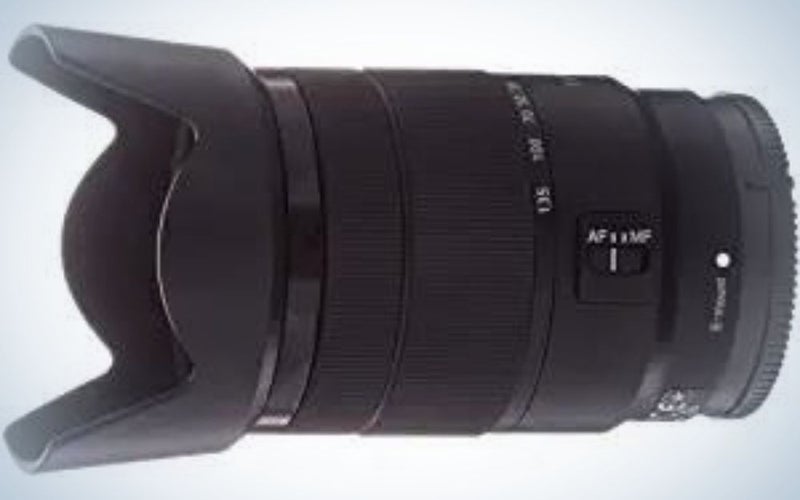
Why it made the cut: This low-cost lens is an ideal all-in-one zoom. At 18-135mm, it covers the full spectrum of what most photographers use and need. The addition of image stabilization means this lens is well suited for everyday use and is a great beginner lens.
- Weight: 11.5oz
- Effective focal length: 27-202mm
- Versatile zoom range
- Not weather sealed
Most photographers have a lens they love and always have on their camera, whether it’s the nifty fifty or a 24-70mm. This lens is perfect for that always-on status, as it covers a long focal range but is small–only 4.41 inches at maximum extension–and light enough to carry on your neck or shoulder all day. With dimensions of just 2.65 x 3.46 inches, it doesn’t take up much room in the camera bag, making it a great travel companion, especially if you’re traveling long term.
Image stabilization is a useful feature considering that the aperture is f/3.5 at its widest but narrows down to f/5.6 when zoomed all the way. It gives you that extra reassurance that you’ll get the photo you want without camera shake. The lack of weather sealing might be a deal-breaker for some, especially if you’re using it as your go-to lens. However, cameras and lenses are very robust these days, so you’ll still be able to use it in light rain in the short term.
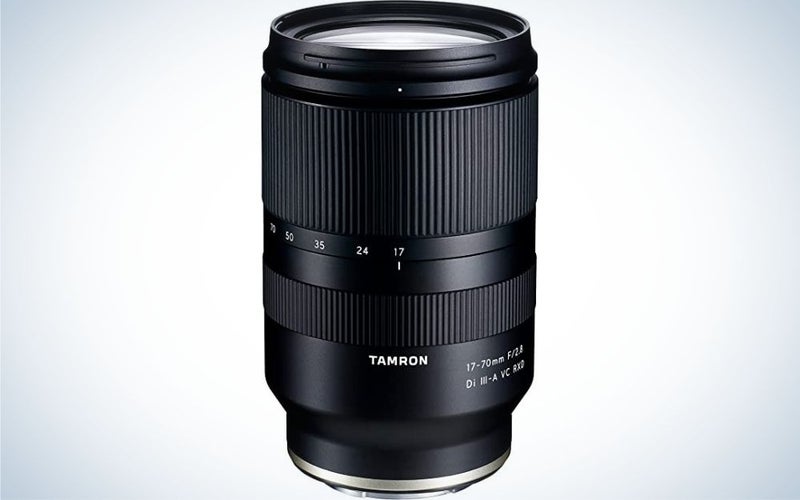
Why it made the cut: The Tamron 17-70mm f/2.8 is a fantastic lens at a reasonable price that offers a 25-105mm full-frame equivalent focal length. It is one of Tamron’s flagship lenses and checks many boxes a lot of photographers look for in a lens.
- Weight: 18.51oz
- Filter thread: 67mm
- Effective focal length: 25-105mm
- Close focusing
- Fast & quiet autofocus
- Strong distortion across focal length range
The Tamron 17-70mm offers a lot of bang for your buck. It’s weather sealed, has Tamron’s Vibration Compensation (VC)–their term for image stabilization–and is a constant f/2.8. In addition, it can focus as close as 7.5 inches at the wide-angle end and 15.4 inches at the telephoto end, which makes it useful for macro photography.
The autofocus is super fast, and you can barely hear it when using it. This makes it great for situations where you need to be as quiet as possible. For example, you don’t want to be photographing a wedding, and just as the bride is about to say “I do,” your camera’s autofocus starts buzzing and causing a distraction. There is some noticeable barrel distortion at the wide end and pincushion distortion when zoomed in, but you can easily adjust that in editing.
It has almost no focus breathing, meaning the focal length doesn’t change as you adjust focus. In combination with the fast and quiet autofocus and vibration control, this lens is an excellent choice for video work on a budget.
Q: Do you need a lens for Sony a6000?
You do need a lens for the Sony a6000. This camera is an interchangeable lens camera, meaning that you can change lenses to suit different situations, but you must use a lens for it to work.
Q: What kind of lens do I need for the Sony a6000?
This really depends on what you intend to take photos of. A prime lens is best used for portrait work, while a zoom lens is more versatile as it can be used for travel photography, sports photography and even landscape photography. That’s not to say that a prime lens can’t do any of the above or vice versa, it’s just that they offer specific pros and cons to each situation.
Q: What is the difference between A-mount and an E-mount lens?
Sony cameras come in two mount types, A and E. The camera mount is essentially the mechanism for attaching the lens to the camera, and different types generally have different diameters, meaning the wrong lens will not fit. The Sony A-mount is designed for cameras with a mirror inside it, such as a DSLR camera. The E-mount is designed solely for the mirrorless range. You can use A-mount lenses on E-mount cameras with an adapter but cannot use E-mount lenses on A-mount cameras.
Q: What is a prime lens used for?
A prime lens is a lens with a single, fixed focal length. Because there is only one focal length, you cannot zoom in and out with the lens to get close to the subject; instead, you have to physically move closer. The primary benefit of a single focal length is fewer elements, or glass, inside the lens. The less glass the light has to pass through usually means sharper and better quality images. You can use prime lenses for any genre and type of photography. As long as you are in a situation where you can change lenses if needed, a prime lens will be a good choice. In fact, many photographers prefer primes because they are of higher quality and are frequently cheaper than zooms lenses.
Methodology
There were many considerations for choosing the lenses above, but ultimately, it came down to usage and budget. There are many lenses out there, both Sony and third-party lenses, and they all have their pros and cons. At the end of the day, the Sony a6000 is not one of Sony’s high-end models, and therefore the higher-end lenses that are available were not selected.
Instead, the editors and writers at Pop Photo chose the lenses that we believe our readers will find most useful. We looked at factors such as the weight of the lens, low light capabilities, and versatility. The Sony a6000 is a great camera for all kinds of situations, and the lens that you buy should, ultimately, be able to handle those varied situations.
Final Thoughts
The Sony a6000 is a great little camera that holds its own and continues to be one of Sony’s most popular choices. Despite being older, this camera has no shortage of lens options, especially as new iterations of the camera are released and lenses continue to be usable with this E-mount camera.
Want more photography techniques, camera reviews, and inspiration?
Sign up for Popular Photography's newsletter and join the club.

IMAGES
VIDEO
COMMENTS
This post outlines some of the best prime lenses and some of the best all in one lens options for the SonyA6000 series. Table of Contents [ hide] 1 How to Choose a Travel Lens. 2 All in One / Zoom Lenses. 2.1 Sony Zeiss 16-70 Vario Tessar F4 OSS. 2.2 Sony 16-50 Kit Lens.
The king of travel lenses has arrived. The Sony 24-70mm F2.8 GM II lens is hands down the best travel all-purpose zoom lens I have ever owned. Here's why: A Traveler's Review: Sony 24-70mm F2.8 GM II Lens. Sony 70-200mm F2.8 GM II OSS lens is, hands down, the best telephoto lens to get for your Sony cameras, but with an extremely high price tag.
Sony 55-210mm F4.5-6.3 - Best Budget Zoom Lens. If you are looking for an affordable zoom lens for your Sony A6000 to complement the standard 16-50mm kit lens or the 16-55mm F2.8 then the Sony 55-210mm F4.5-6.3 (also available from B&H Photo here or from Adorama here) is an ideal choice. This budget lens actually comes included sometimes in ...
Best wide-angle zoom lens for A6000 cameras (Image credit: Matthew Richards) 3. Tokina atx-m 11-18mm f/2.8 E ... So called 'pancake' lenses are really popular for street and travel photography because they extend only a small distance from the camera body and can stow away in small bags or even jacket pockets. A mere slip of a thing, this ...
OSS. Quiet zoom. 12.6 ounces. This budget-friendly zoom is one of the best telephoto travel lenses for the Sony a6000, especially for new travel photographers. The price is truly unbeatable compared with any other APS-C zoom on the market, and the focal range allows for a wide variety of shots.
4.) Sony 18-200 f/3.5-6.3 OSS. Similar to the Sony 18-105, the Sony 18-200 f/3.5-6.3 OSS is another one of the best travel lenses for the Sony a6000 because of its wide focal range. If you like to travel light and only have enough room in your pack for 1 lens, this could be the perfect fit.
Mid-Range and Portrait Lenses Sony Vario-Tessar T* E 16-70mm f/4 OSS ($998) Weight: 10.9 oz. 35mm equivalent: 24-105mm What we like: The best E-mount travel lens for the a6000. What we don't: Double the price of the camera. For those who can afford it, the Sony 16-70mm f/4 OSS is our favorite lens for the Sony Alpha a6000.
Sony 10-18mm F4 OSS: For Shooting Sweeping Landscapes. The Sony 10-18mm f/4 is perhaps of the best E mount landscape lenses for Sony a-series users - especially for those who are all about shooting "ultra-wide". The 10-18mm f/4 is razor-sharp in the center with only minor softening at the sides of the frame and the distortion is ...
Best Travel Lenses for Sony A6000. 1. Sony 18-105mm F4. The 18-105mm is what I call a superzoom. It covers the whole range of landscape through telephoto, so if you're lazy like me, and looking for just one best travel lens, this is the one. The lens is really quite sharp and incredibly versatile.
Tamron 18-200mm F/3.5-6.3 Di III VC Sony E. 739. 11. 4. In second place is the relatively accessible full-frame FE 28-70mm f3.5-5.6 OSS. It's the equivalent of a 42-105mm on the A6000 and a slightly better performer overall than the wider, constant-aperture 24-70mm f4 OSS at $1,200.
The Best Travel Lens for Sony a6000. Sony Alpha a6000 Mirrorless Digital Camera 24.3MP SLR Camera with 3.0-Inch LCD (Black) w/16-50mm... Advanced 24.2MP back Illuminated 35 millimeter full frame image sensor. ISO 100 25600 (expandable to 51200). Lens compatibility: Sony E mount lenses.
Best wide-angle lens for Sony a6000: Samyang 12mm F2.0 AF. Best Budget wide-angle lens for Sony a6000: Sigma 19mm F2.8 DN Art. Best wide-angle lens for Professionals Sony a6000: Sony E 10-18mm F4 OSS. Best wide-angle zoom lens for Sony a6000: Sony FE 12-24mm F2.8 GM. Best vlogging lens for Sony a6000: Sigma 19mm F2.8.
Ultra Wide Best Zoom Lens for Sony a6000. Photographers that want an ultra-wide-angle lens range will love the Tamron 11-20mm f/2.8 Di III-A RXD zoom lens as one option for the best zoom lens for Sony a6000 cameras. What makes it special is the extreme wide-angle focal length with very little distortion. The widest coverage is a full 105 degrees.
Top Pick. 1. Sigma 18-50mm f/2.8 DC DN | C. The Sigma 18-50mm f/2.8 DC DN | C lens is a great choice for Sony a6000 users due to its versatile focal length range, constant aperture, excellent optical performance, compactness, and affordability. Check Price at Amazon.com Check Price at Adorama.
The Sony 16-70mm f/4 ZA OSS is among the best E mount zoom lenses for the Sony a6000, a6300, a6400, and a6500. This lens has a wide focal range, allowing it to capture all types of subjects. ... The massive focal range makes this one of the best travel lenses for Sony E mount cameras. Summary: • Expansive focal range.
📸 Best Everyday Zoom Lenses for Sony A6000. While the Tamron 17-70mm f/2.8 is the top pick, there are many other great zoom lenses out there. Here are some more fantastic general-purpose Sony A6000 zoom lenses. 💎 Best Premium Zoom Lens: Sony 16-55mm F2.8 The best standard zoom lens for the ultimate image quality — for professionals
Best for the Money: Sony - E 50mm F1.8. Best Travel Lens for Sony A6000: Sony E 10-18mm F4 OSS. Best Zoom Lens for Sony A6000: Sony 18-135mm F3.5-5.6 OSS. Best Prime Lens for Sony A6000: Sony SEL-20F28 20mm F2.8. Best Wide Angle Lens for Sony A6000: Sigma 16mm F/1.4 DC DN. Best Landscape Lens for Sony A6000: Sony - FE 12-24mm F4 G.
Sony FE 28-70mm f/3.5-5.6 OSS | Best Zoom Lens for Sony a6000. Focal Length: 28-70mm zoom (equivalent to 40-105mm) Weight: 295g (10.5oz.) ... It's definitely among the best travel lenses for Sony a6000 owners who value the compactness of their camera set up over the convenience of a zoom.
1. Sigma 24-70mm f/2.8 DG DN Art Lens: Best Multipurpose Lens For Sony a6000. Sigma 24-70mm F2.8 DG DN Art for Sony E Lens. Our pic for the best all-rounder lens for Sony a6000 cameras is the Sigma 24-70mm f/2.8 DG DN Art lens. It's got everything you need no matter what style of photography you're into.
Best lens for travel for a6000? I'm traveling to Europe soon and want to get a new lens for my a6000. Currently using the 35mm f1.8 which I absolutely love but sometimes feel like it's not wide enough. ... For wide I went with the 10-18 f/4 zoom, and it is the lens I've used the most on travel. There's also the newer Tamron 11-20 f 2.8 that ...
Single lens set up. 18-105mm. Covers a lot of ground with one lens, but you might struggle with low light situations and wildlife at long distance. Constant f4, power zoom, and built-in OSS also make this good for video if you're into that sort of thing. My current set-up. 16-55mm2.8 and the 70-350mm.
So rest assured, if you buy one of these best lenses for your a6000 and then decide to upgrade, they will carry over perfectly well. Best overall: Sigma 18-50mm F2.8 DC DN Contemporary. Best for portraits: Sigma 56mm f/1.4 DC DN Contemporary. Best zoom: Sony E 70-350mm F4.5-6.3 G OSS.
Particularly for macro, currently native is much better in all but price for iq and ease of use (some people like "everyday" macro flowers and bugs and stuff). Sony 18-135 is an amazing package to replace the 16-50 and 70-210 kit lenses. The 18-105 is a bit heavy for what it is and I'd look at other zooms since f4 doesn't really impress when ...